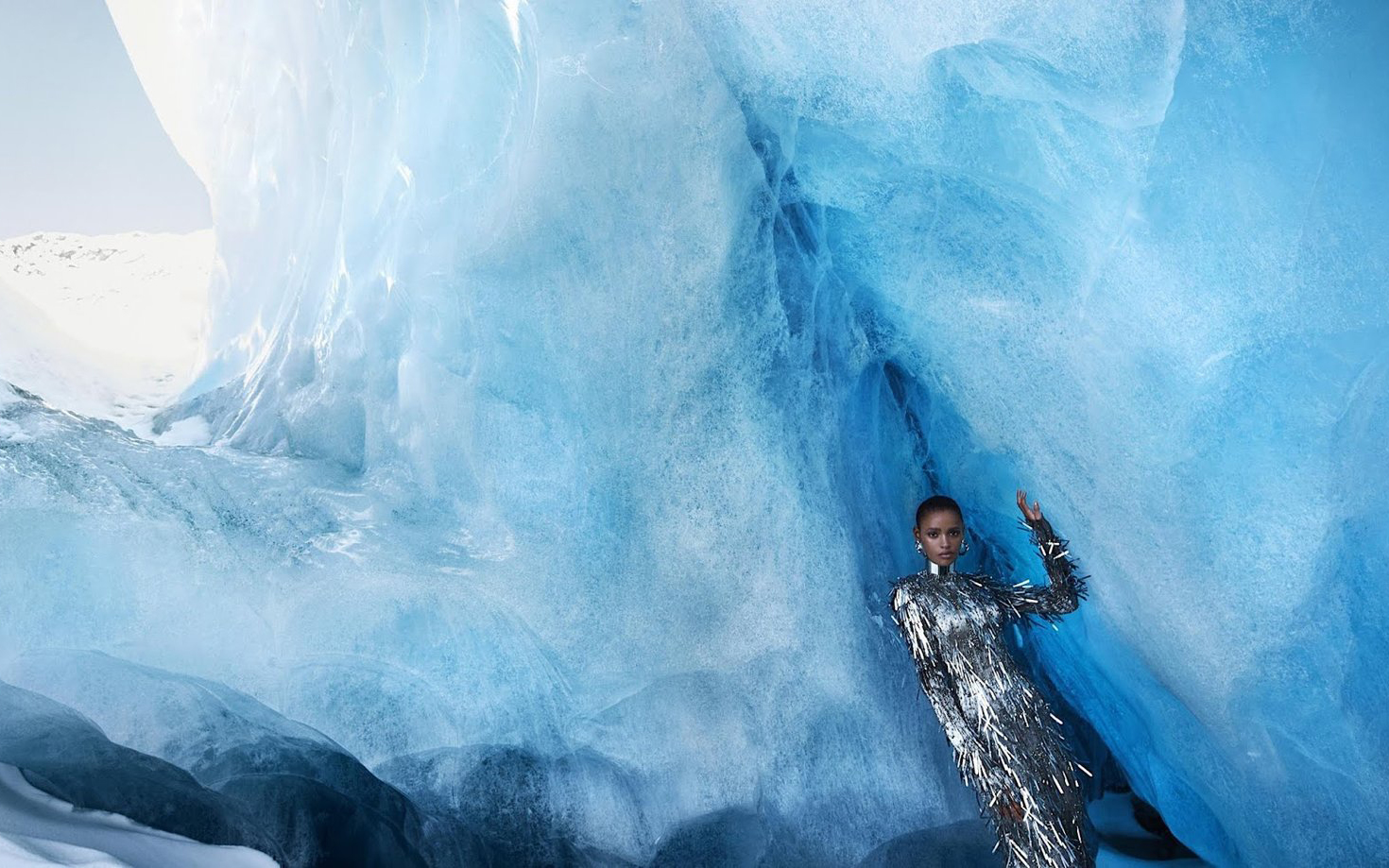 Aya Jones by Txema Yeste for Harper’s Bazaar US. September 2019
Aya Jones by Txema Yeste for Harper’s Bazaar US. September 2019
We start the new year by immersing ourselves in the coldest month of the calendar, when winter displays all its splendor. On this inspiring journey, we explore the dazzling glacial landscapes: the snowy roofs of our planet, the vast inhospitable expanses covered in a blanket of snow and ice, and the overwhelming poles, where sky and earth are barely distinguishable, and the spectrum of whites take over a homogeneous colour palette, where each small chromatic nuance is widely perceptible.
This frozen nature, with a rugged and wild character, where life struggles to make its way, is also loaded with beauty. In addition, it has recently gained notoriety thanks to film hits such as ‘The Snow Society’ by JA Bayona, which leads the Goya nominations, and series such as ‘Fargo’, which have once again brought Minnesota’s impressive landscapes to the fore. and North Dakota, making them perfect settings for criminal plots in each season.
Beyond a seasonal trend
Fashion has fallen in love with the appeal of icy universes, incorporating the influence of alpine clothing inspired by high mountain sports into its repertoire. This trend has been increasing in recent years, manifesting itself through après-ski collections that offer clothing and accessories both on and off the slopes. Initially promoted by the most prestigious brands in the sector, the strategy was later adopted by large fashion distributors, including Zara, which has launched its own ski collection.
Frozen landscapes have also served as a muse for numerous designers who find in these unknown, distant and mysterious environments, fresh sources of inspiration to structure their winter collections. A notable example is Zuhair Murad ‘s proposal in 2015, which transported the brand’s clients between snowy mountains, steep rocks and still unexplored corners. Murad, with his innate talent, managed to balance dreamy fabrics, inspired by the textures of snow, used in all his designs, and patterns with volumes that marked the waist. In 2021, Anthony Vaccarello of Saint Laurent presented his spring-summer collection in the frigid landscape of an Icelandic glacier. The models paraded among black volcanic rocks, mysterious vapors and gray waters with outfits that challenged the bourgeois codes of Saint Laurent.
More recently, Demna Gvasalia, creative director of Balenciaga, surprised the public at the presentation of his autumn-winter 2022/2023 collection by transporting them to a freezing snowstorm, surrounded by circular glass walls. The models, with languid steps and clothing reduced to improvised protection, paraded taciturnly in a frozen landscape marked by desolation. In this case, this icy setting served as Balenciaga’s artistic director to denounce the Ukrainian conflict.
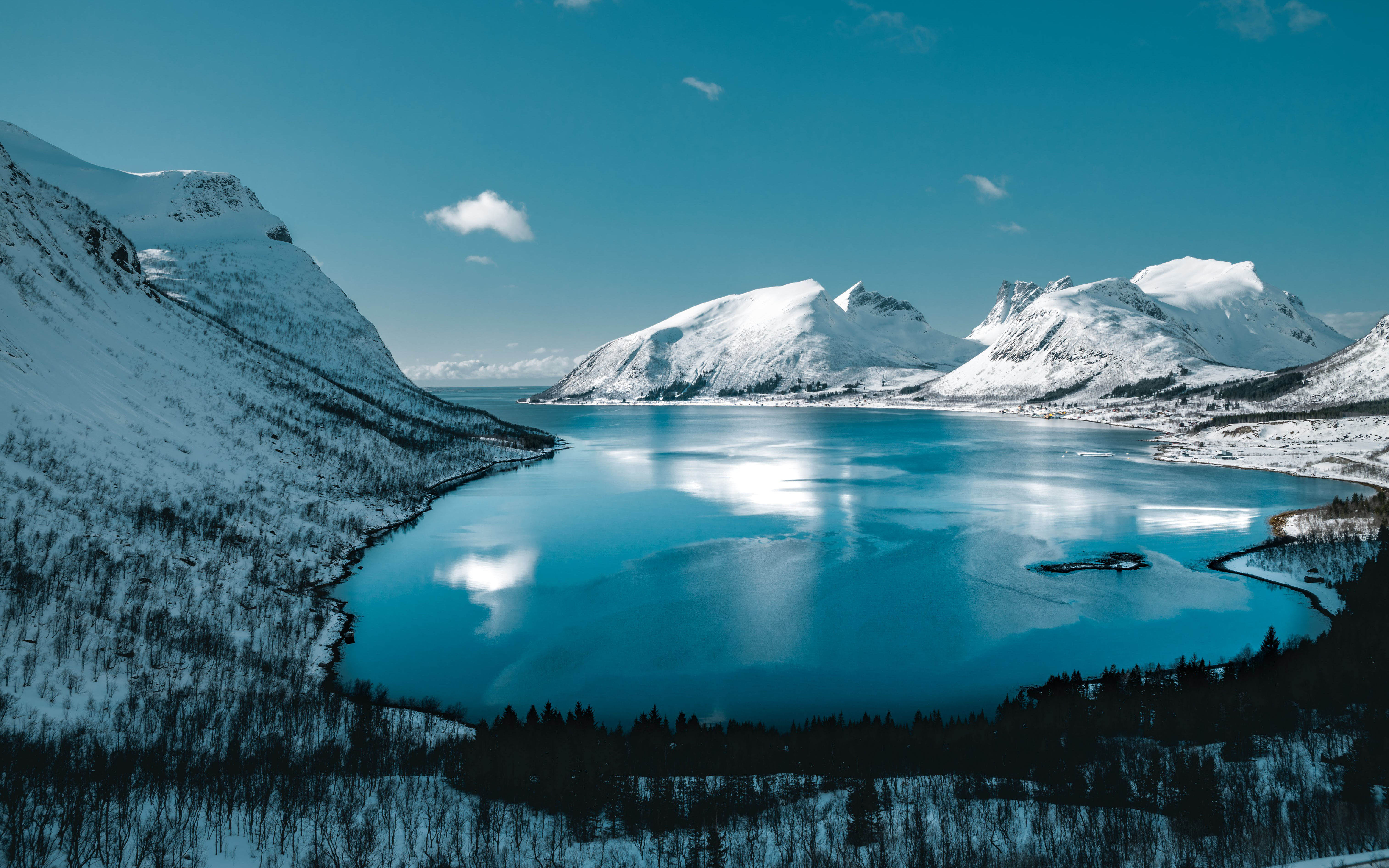
Gratacós is also inspired by the icy serenity of the glaciers
Gratacós delves into the dazzling aesthetic of glaciers to explore icy beauty through captivating fabrics that capture the serenity and elegance of icy landscapes. We let ourselves be inspired by pieces that evoke the purity of ice and virgin snow, as well as by those that dazzle with sequins or subtle sparkles and iridescence. Silk, the undisputed protagonist, unfolds with an ethereal fall reminiscent of the slowness with which ice moves.
Glacier fashion embraces textures that tell stories of intense cold. How? Through layers and folds that suggest superimposed blocks of ice, while the relief details provide a three-dimensional dimension, recreating the complexity of glaciers. Embroidered with silver threads and translucent crystals imitate the shine of sunlight on snow, adding a touch of sophistication to each fabric. Other fabrics embroidered with tulle and rhinestones could emulate layers of frozen snow. As for the relief, we imagine pleated or other fabrics with soft undulations that imitate the topography of glaciers, providing organic movement to the garments.
The colour palette of glacier fashion is inspired by the soft, cold tones of glaciers. Pure white and ice blue dominate the spectrum, creating a feeling of calm and freshness. We added touches of silver and pearl gray that represent the shimmer of light on the icy surface, while deep turquoise pays homage to the hues found in ice cracks. These colours, masterfully combined, reflect the serenity and majesty of glacial landscapes.
Find among the seasonal items in our online store, that icy inspiration we talked about so appropriate for the winter season.
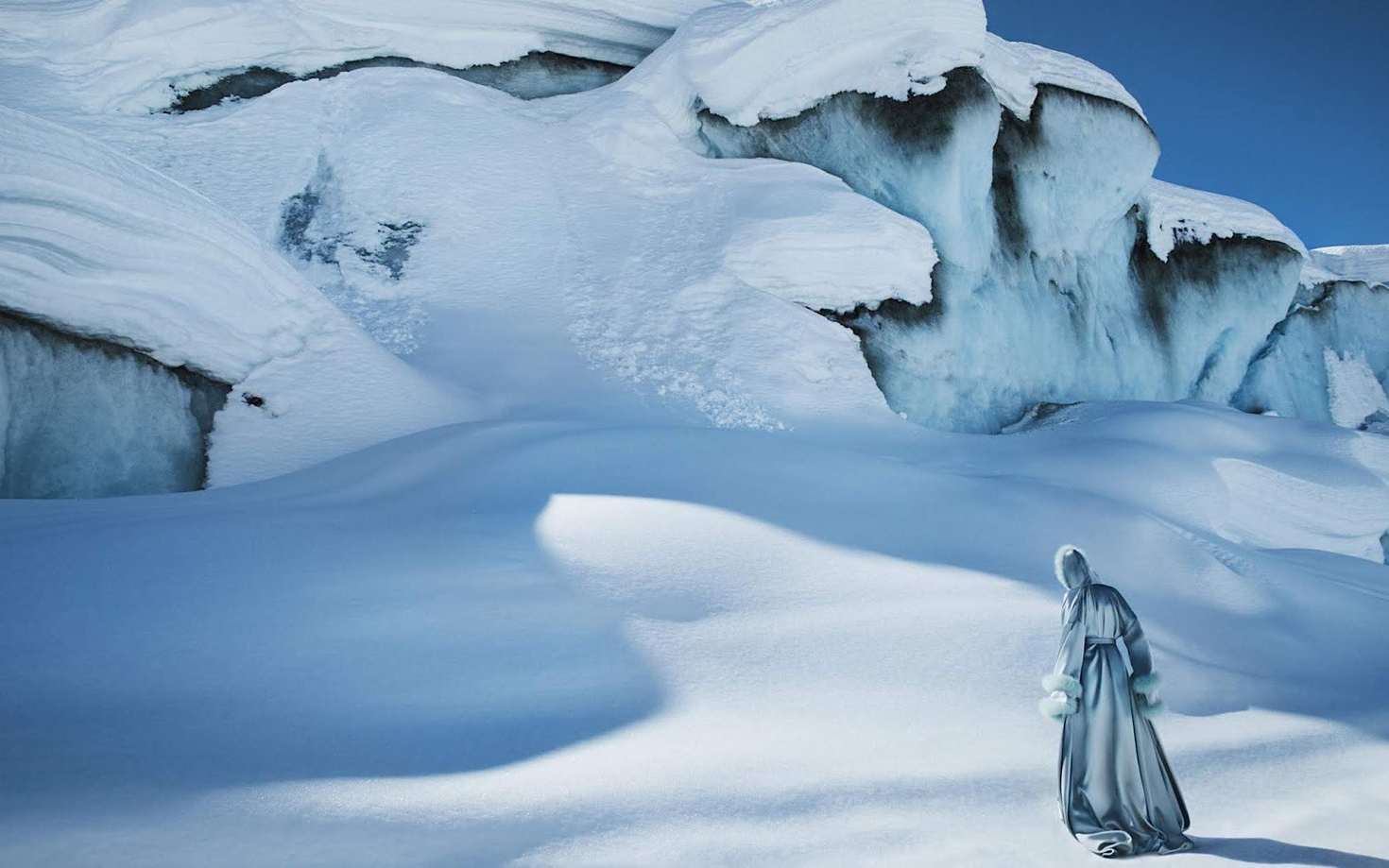
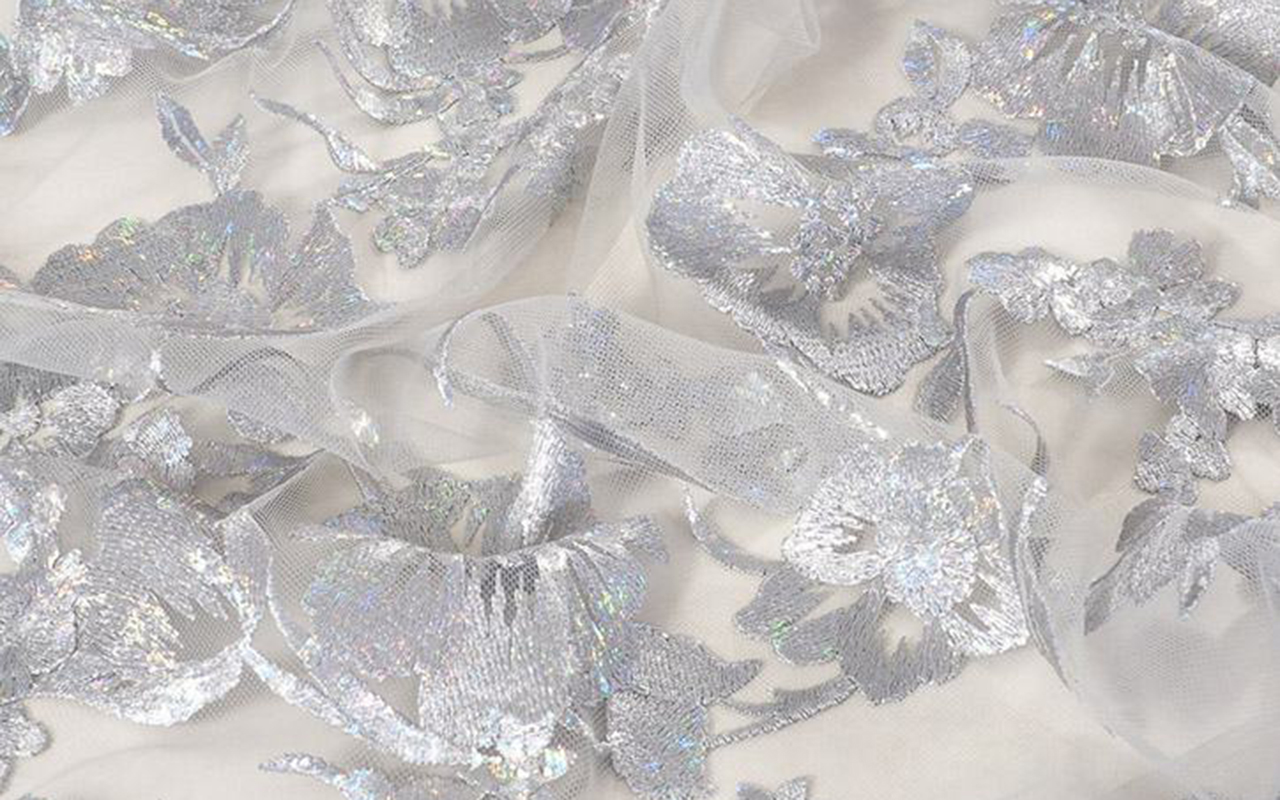

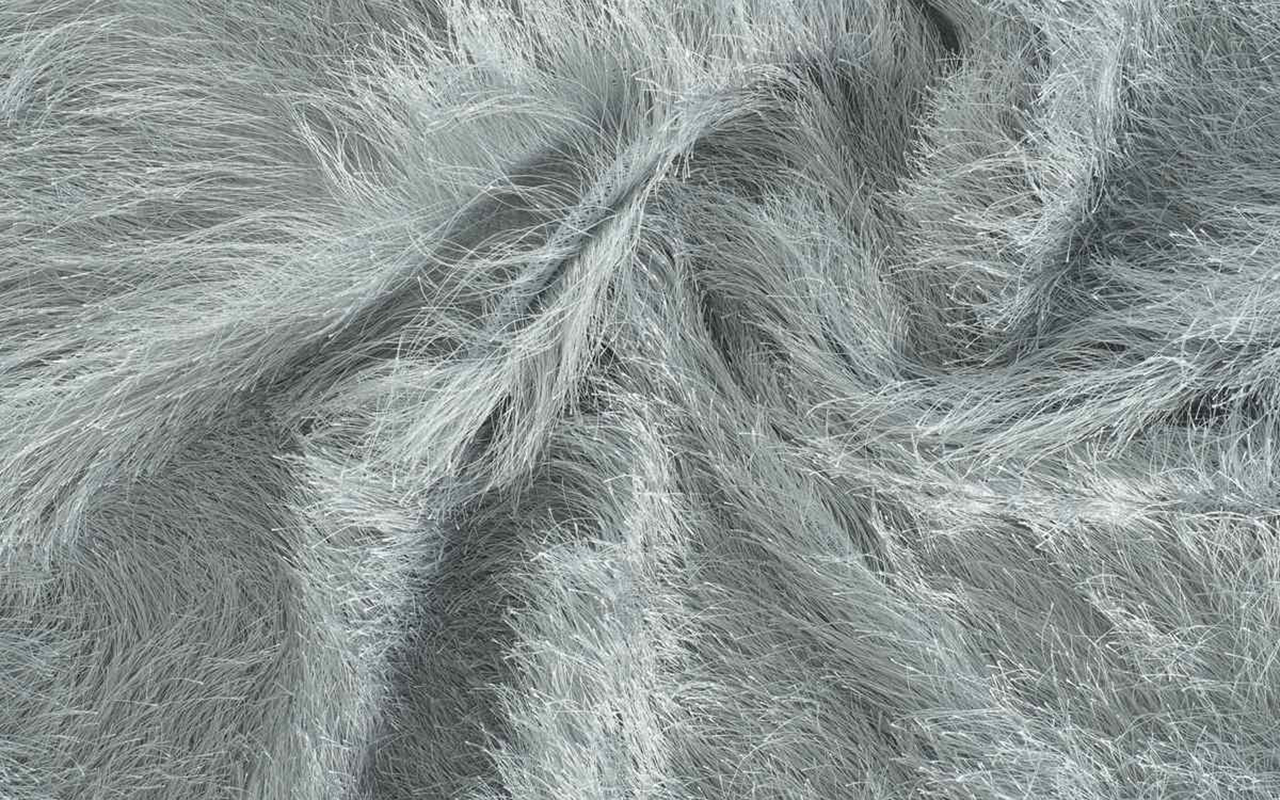
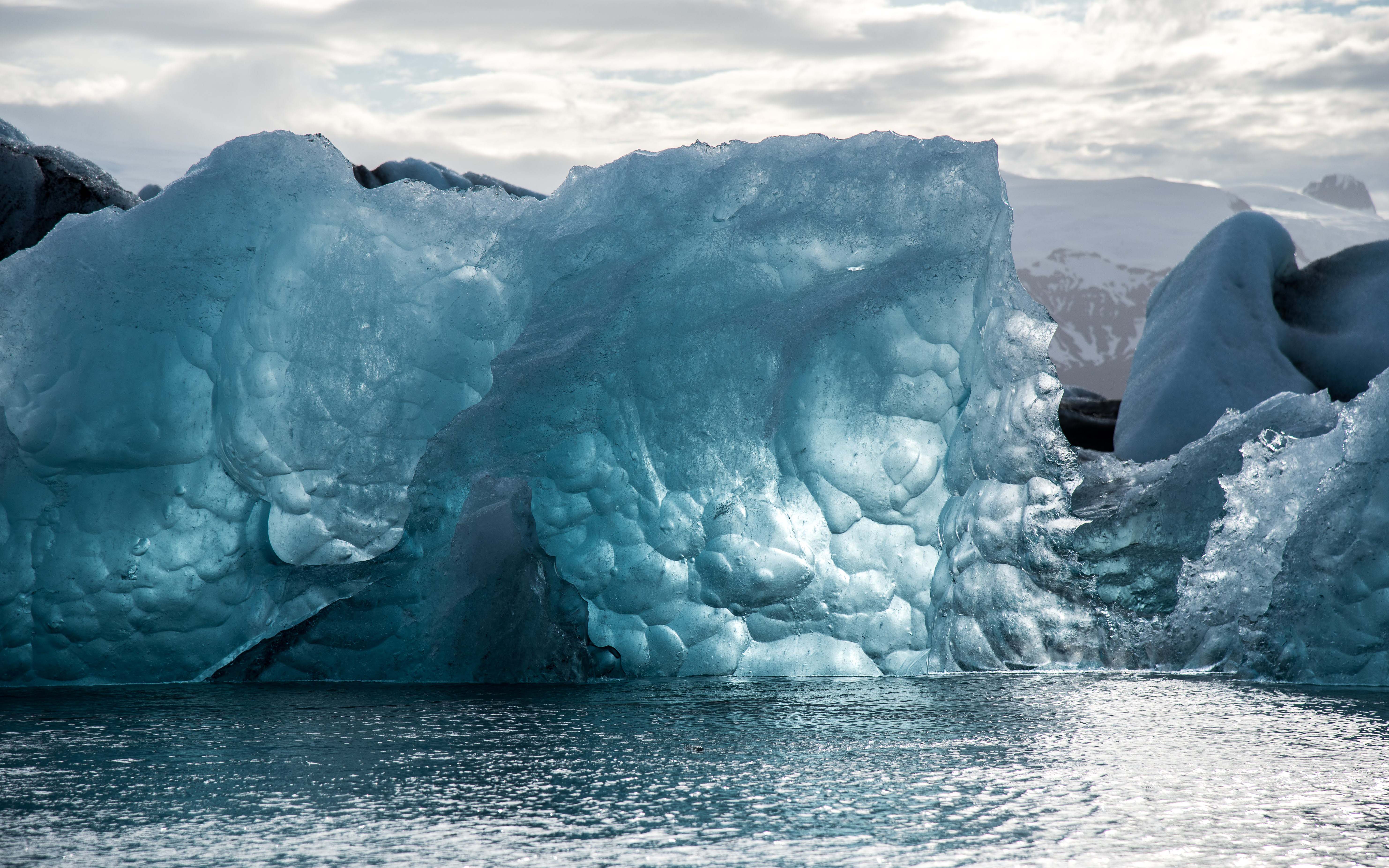
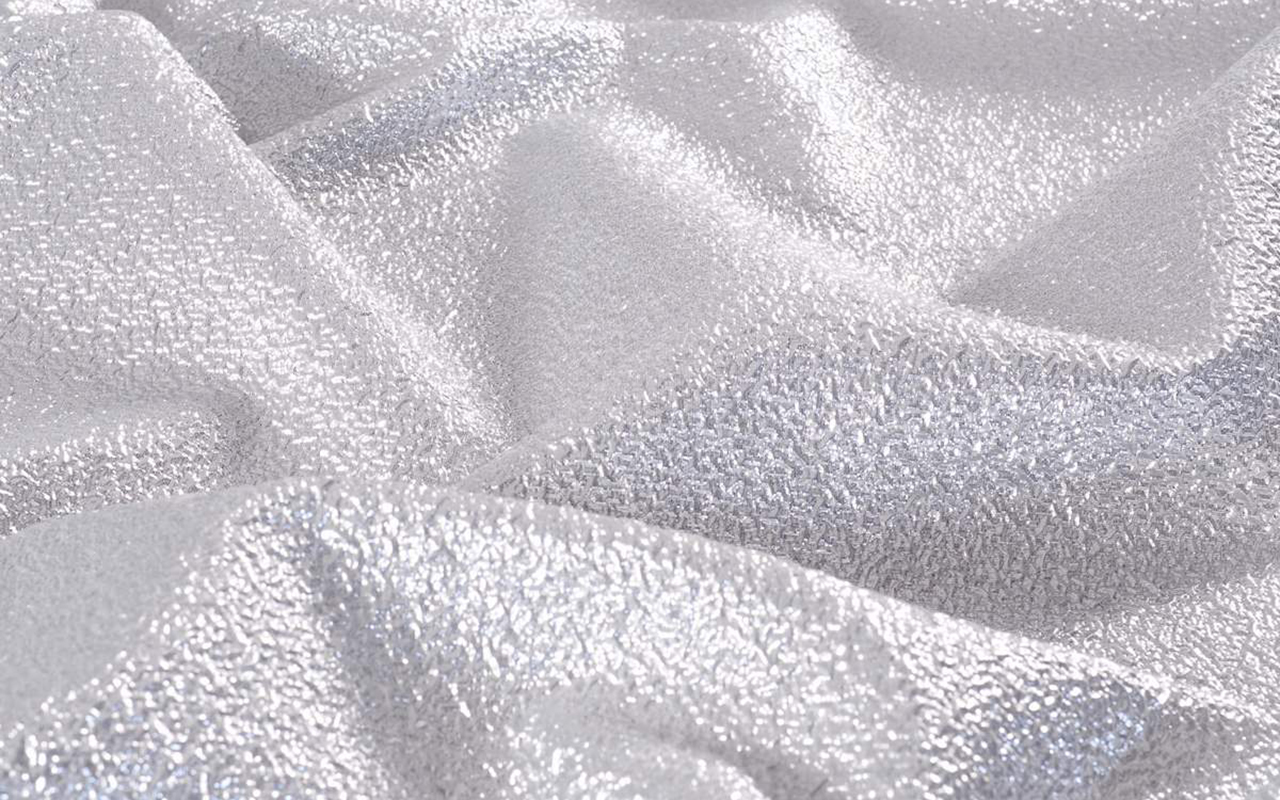
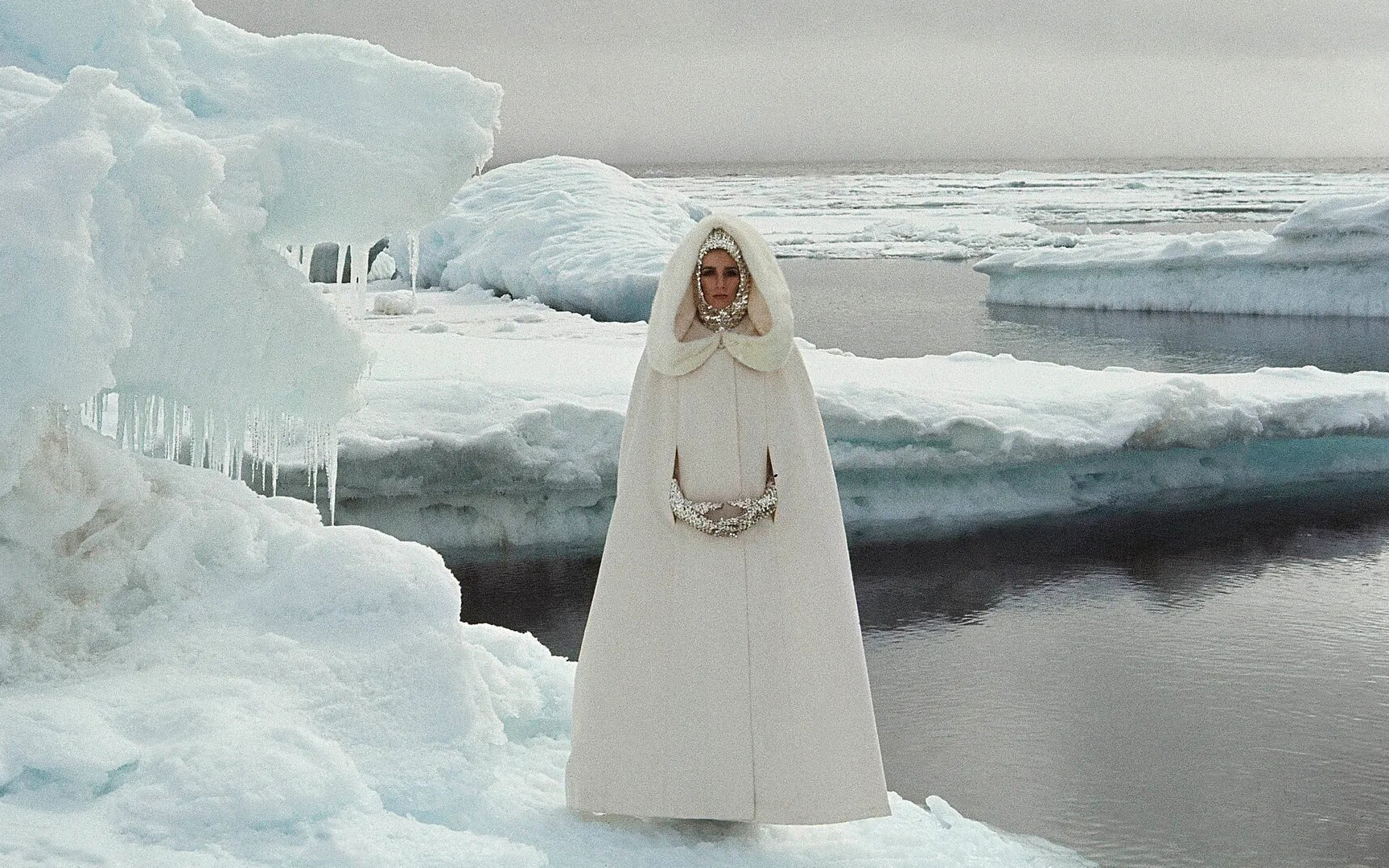
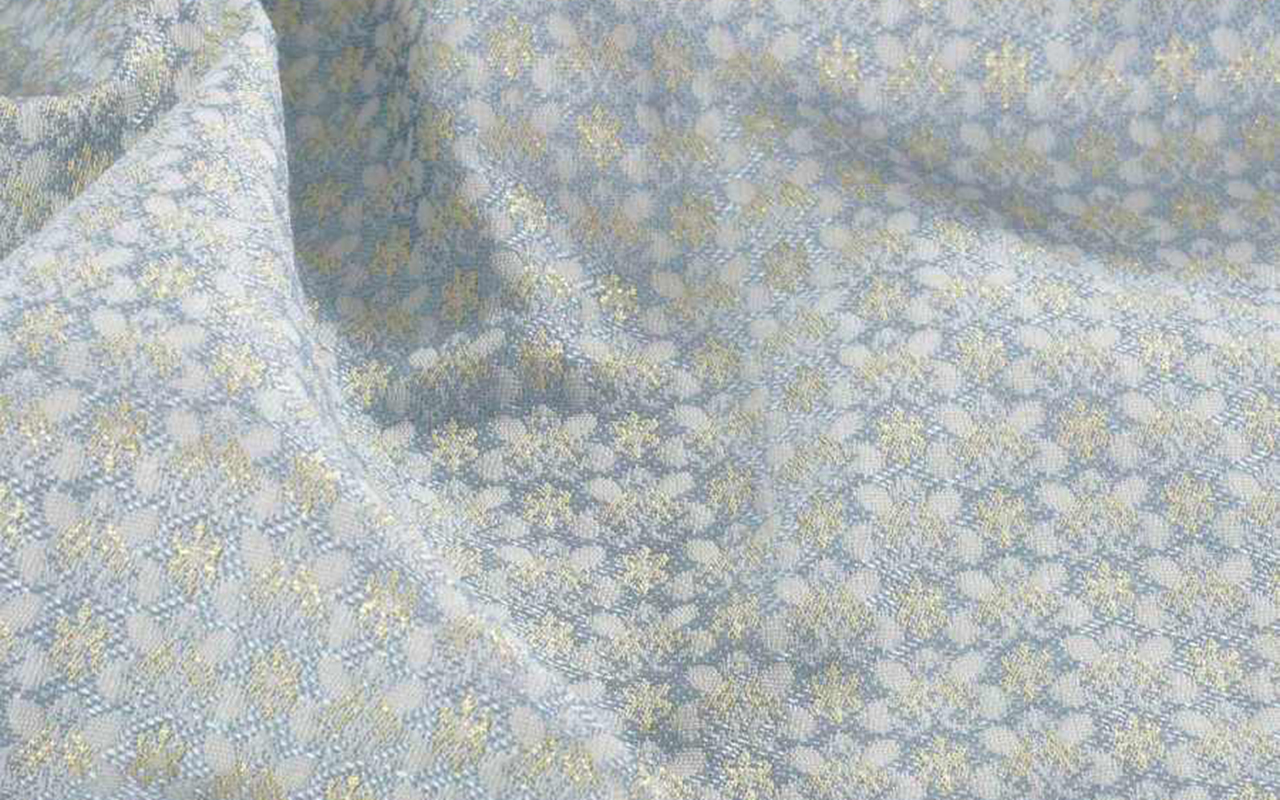
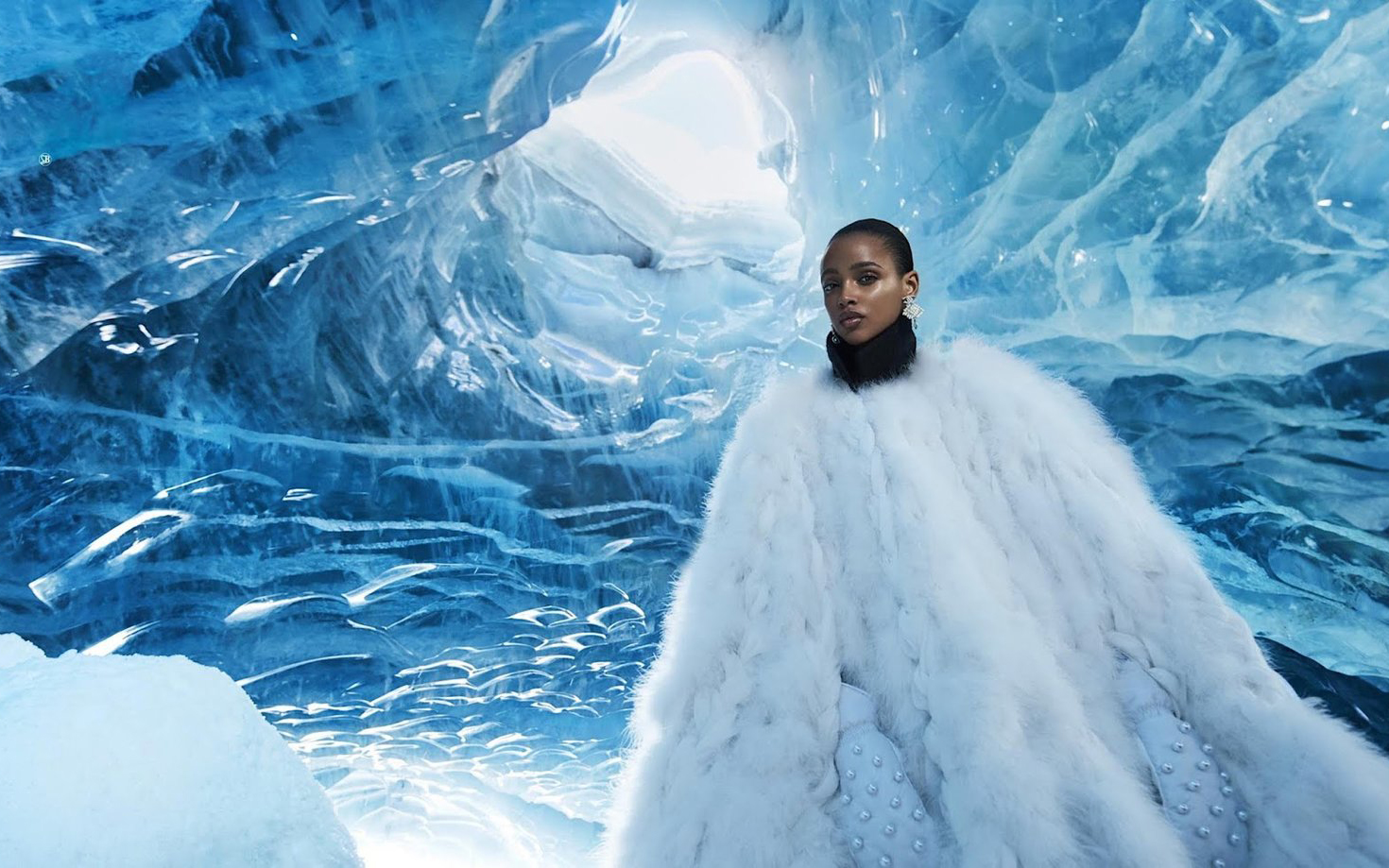
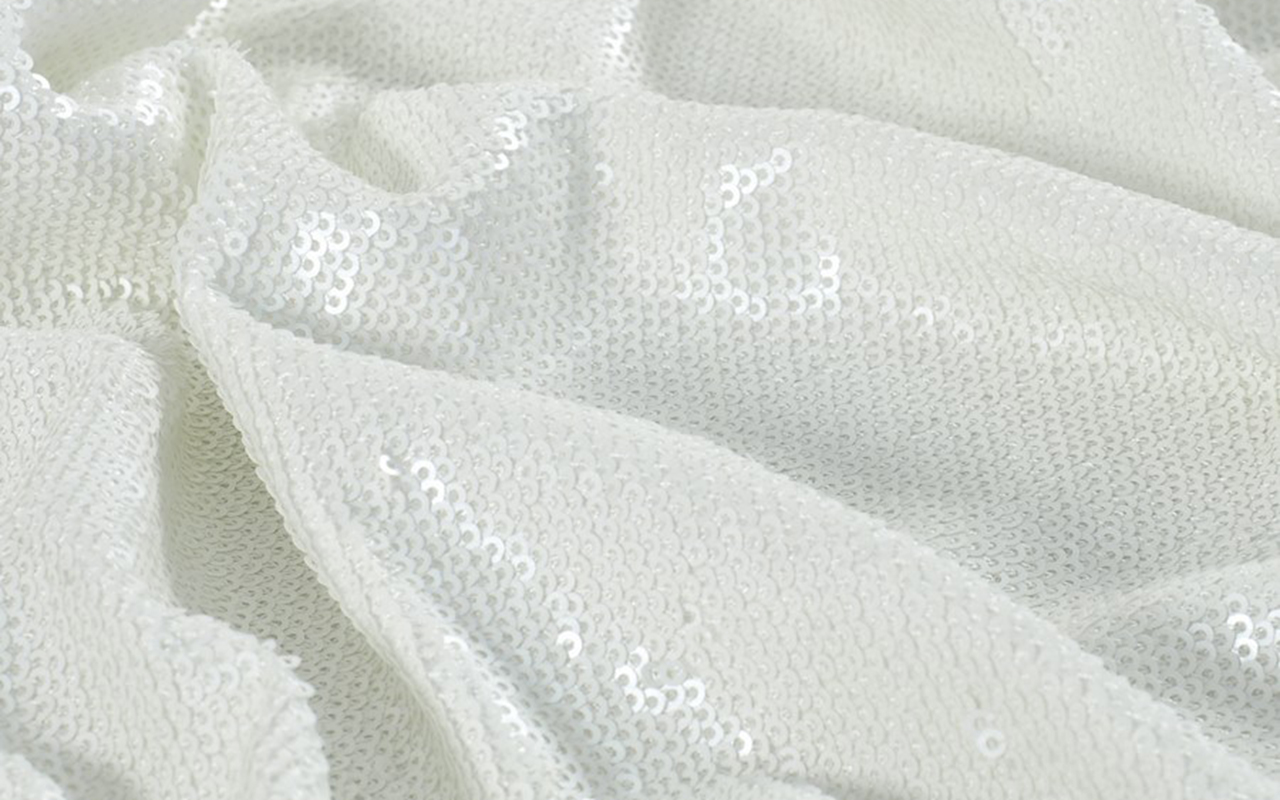
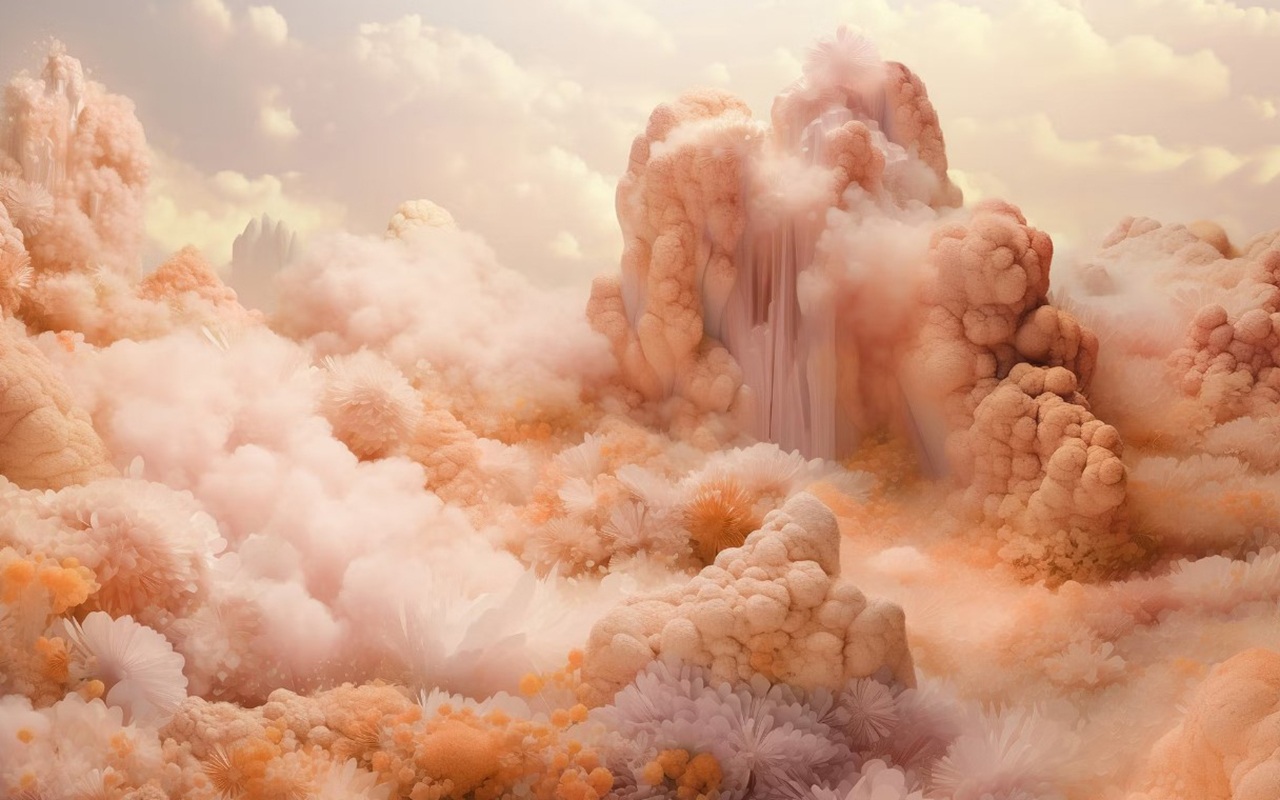 Pantone has established a tradition that colour enthusiasts eagerly await as a prelude to the Christmas holidays. It is about the choice of the shade that will set the direction of trends in 2024 and that will influence art, design, fashion, decoration or advertising, among other creative disciplines directed by professionals who draw on the latest developments on the market, also chromatic.
Pantone has established a tradition that colour enthusiasts eagerly await as a prelude to the Christmas holidays. It is about the choice of the shade that will set the direction of trends in 2024 and that will influence art, design, fashion, decoration or advertising, among other creative disciplines directed by professionals who draw on the latest developments on the market, also chromatic.
A sincere, tender and empathetic colour
Following its vocation of naming colours with subtly sensual names, Pantone has chosen the winner for next year. The colour in question is called Peach Fuzz 13-1023 and it is a peach shade that evokes sincerity and tenderness, and conveys, according to the world authority on colourimetry, a desire to take care of ourselves and others. A soft and velvety shade whose enveloping spirit enriches the mind, body and soul. This is how Laurie Pressman, vice president of the Pantone Colour Institute, explains it in a statement about the colour that will take over everything in 2024. “We were looking for a hue that expresses our innate desire for closeness and connection, so we chose this radiant colour that exudes warmth and modern elegance. It is a colour that exudes empathy, wraps us in a hug that we can almost feel and naturally combines the youthful with the imperishable.” This warm and comforting tone stimulates the desire to unite with others or have moments of stillness, and the feeling of protection that this generates.
The tone of calm and inner peace
According to Pantone, Peach Fuzz 13-1023 is an alluring peachy hue, carefully balanced between pink and orange, that inspires belonging, relaxation and the opportunity to care, evokes calm and offers a space in which to live, feel, heal and prosper. Therefore, the colour of 2024 is comforting and encourages inner peace and well-being. Peach Fuzz 13-1023 has both an idea and a sensation and stimulates all the senses, as it makes one perceive its tactility and envelops people in its warmth.
A modern tone that takes refuge in nostalgia
Peach Fuzz 13-1023 is a sweet and light colour that evokes a new modernity. It focuses on the human experience of enriching and caring for the mind, body and soul, but it is also a subtly sophisticated, modern and deep peach tone, with a soft but effective luminosity that fills the digital world with beauty. A poetic, romantic peachy shade that conveys cleanliness and a vintage feel, Peach Fuzz 13-1023 reflects the past, but reimagined for modern settings. This last characteristic makes it especially interesting for the world of design and decoration.
The meaning of colour in an unstable context
Peach Fuzz 13-1023 is the colour that replaces Viva Magenta, which was chosen as the colour of 2023. The reasons given were: “A tone rooted in nature that vibrates with energy and vigor. “That descends from the red family and expresses a new sign of strength.” So, now we move from strength to warmth.
“When our lives are affected by instability, our need to care and to have empathy and compassion grows even more, as well as to imagine a future that brings more peace,” Laurie Pressman explains this meaning of the colour that we will see in the coming months throughout Instagram and Pinterest boards, aswell as, probably in the next trends in both fashion and decoration. “In a world where productivity and external achievements are often emphasized, it is crucial to recognize the importance of taking care of our inner self and seeking moments of calm, creativity and connection with other people in the midst of the hustle and bustle of modern life,” adds the vice president of the Pantone Colour Institute. Give value to the bonds, affection and home: “The colour we selected had to express our desire to be close to our loved ones and the happiness we feel when we connect with our own being and enjoy a moment of quiet alone. It had to be a colour that conveyed an enveloping warmth and a message of compassion and empathy,” argues Laurie Pressman.
25 years setting trends in colour
In 2024 it will be 25 years since the Pantone Colour Institute began putting colour on the sensory and creative map for the following year. It was in 1999 when the Pantone Colour of The Year educational program engaged the design community around the world in a conversation about colour. “We wanted to emphasize the relationship between culture and colour to make our audience aware of how what is happening in our global culture is expressed and reflected through colour language,” explains Pressman again. In this first session, a clear winner emerged: cerulean blue (Pantone 15-4020), a shade that returned to the stage thanks to the film ‘The Devil Wears Prada’ and Meryl Streep’s famous speech on how the fashion industry works. “Over the years, the Pantone Colour of the Year program has become a cultural touchstone around the world and has stimulated the imagination of many designers, brands and consumers,” explains Pressman.
To decide on each year’s selection, the Pantone Colour Institute team travels the world in search of new colour influences. They can be found in the entertainment industry (film, television series and even music), works of art and new artists. Of course, in fashion and design, but also in more aspirational places or concepts, such as travel destinations that are starting to become a trend, lifestyles, new technologies and materials, textures or effects (yes, like Instagram filters). that generate interest or capture attention in some way.
What began as a catalogue with 500 colours that served as a guide for graphic arts has grown in such a way that its influence on upcoming trends is comparable to what the biggest celebrity of the moment looks like on the cover of Vogue magazine. The Pantone guide already has more than 2,000 references that are updated every 18 months, with new, more precise shades being added to the list.
Another way to express the evolution as a society
Colour plays a fundamental role in people’s experience. It has a close relationship with emotions and the expression of feelings and its nuances can also be seen in how the story evolves year after year with its cycles of rise and fall. The impact of colour is also noticeable in the world of fashion, in the colours of cosmetics, in household items, in automotive and industrial design, and in products, packaging, multimedia design and retail interiors. “We are very pleased to have encouraged designers and colour enthusiasts around the world to tell their stories through colour language and show their creativity in their communities. We hope to continue doing this for many more years ,” concludes Pressman.
At Gratacós we also wanted to pay our particular tribute to Peach Fuzz 13-1023 with a selection of collection fabrics in peach tones so that you can think about a possible design for this 2024. You will find them here : Give free rein to your imagination!
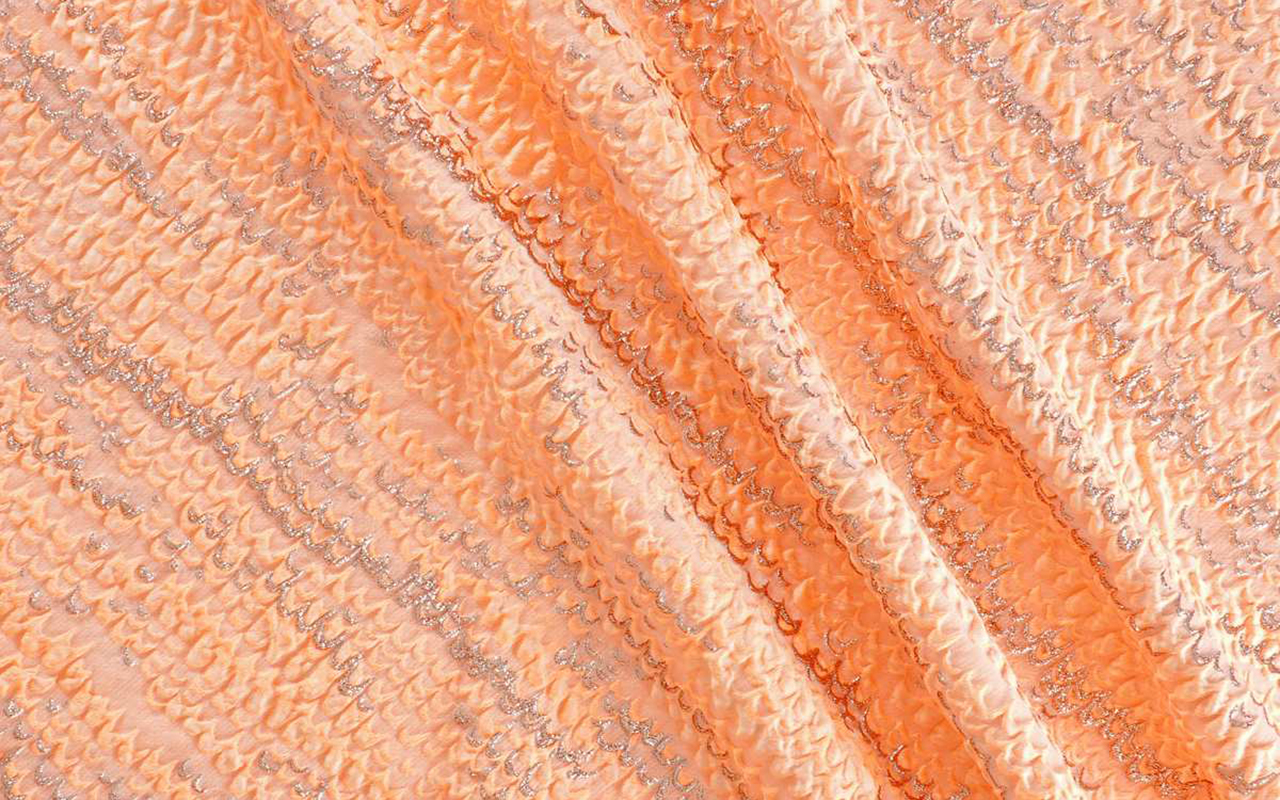
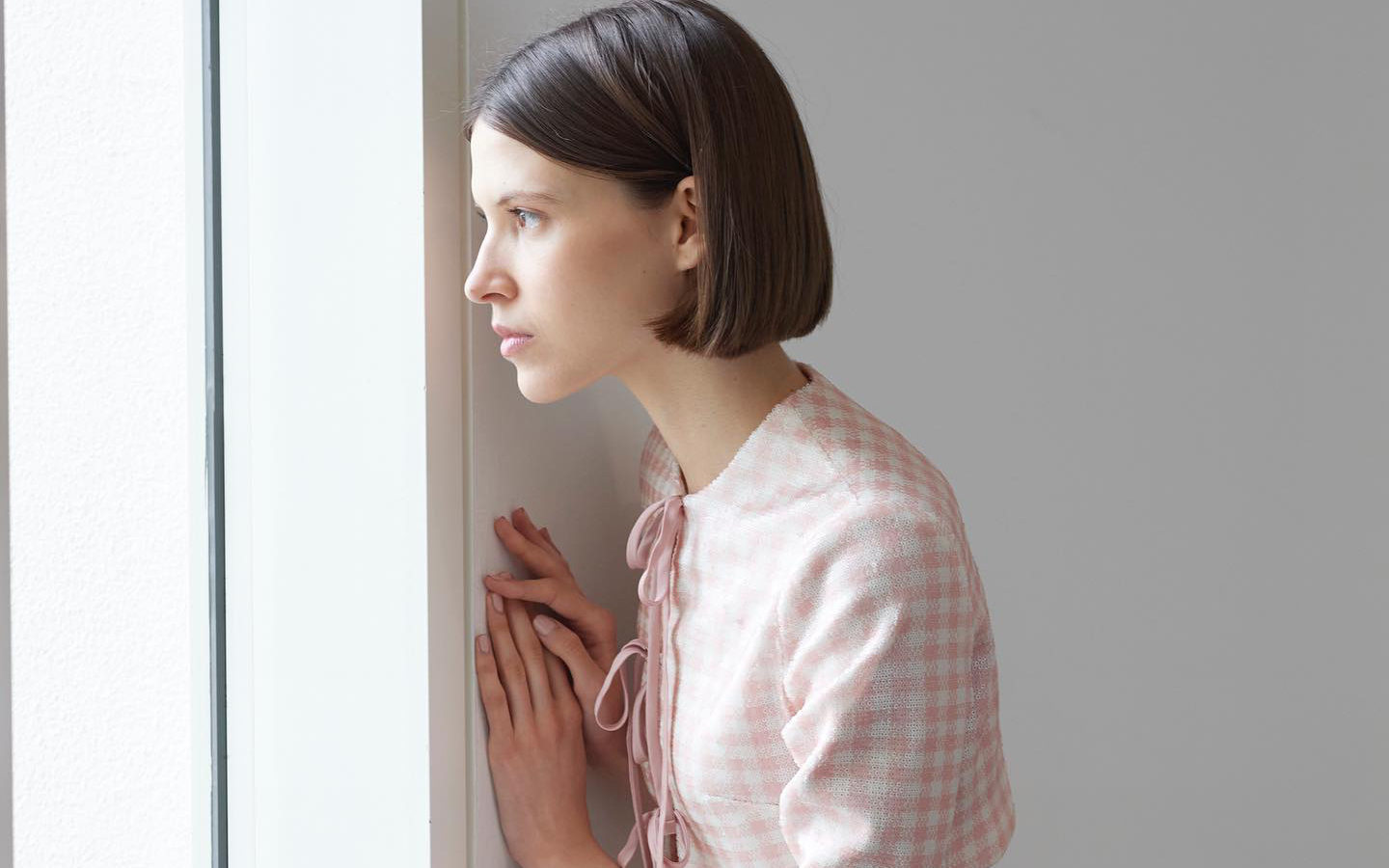

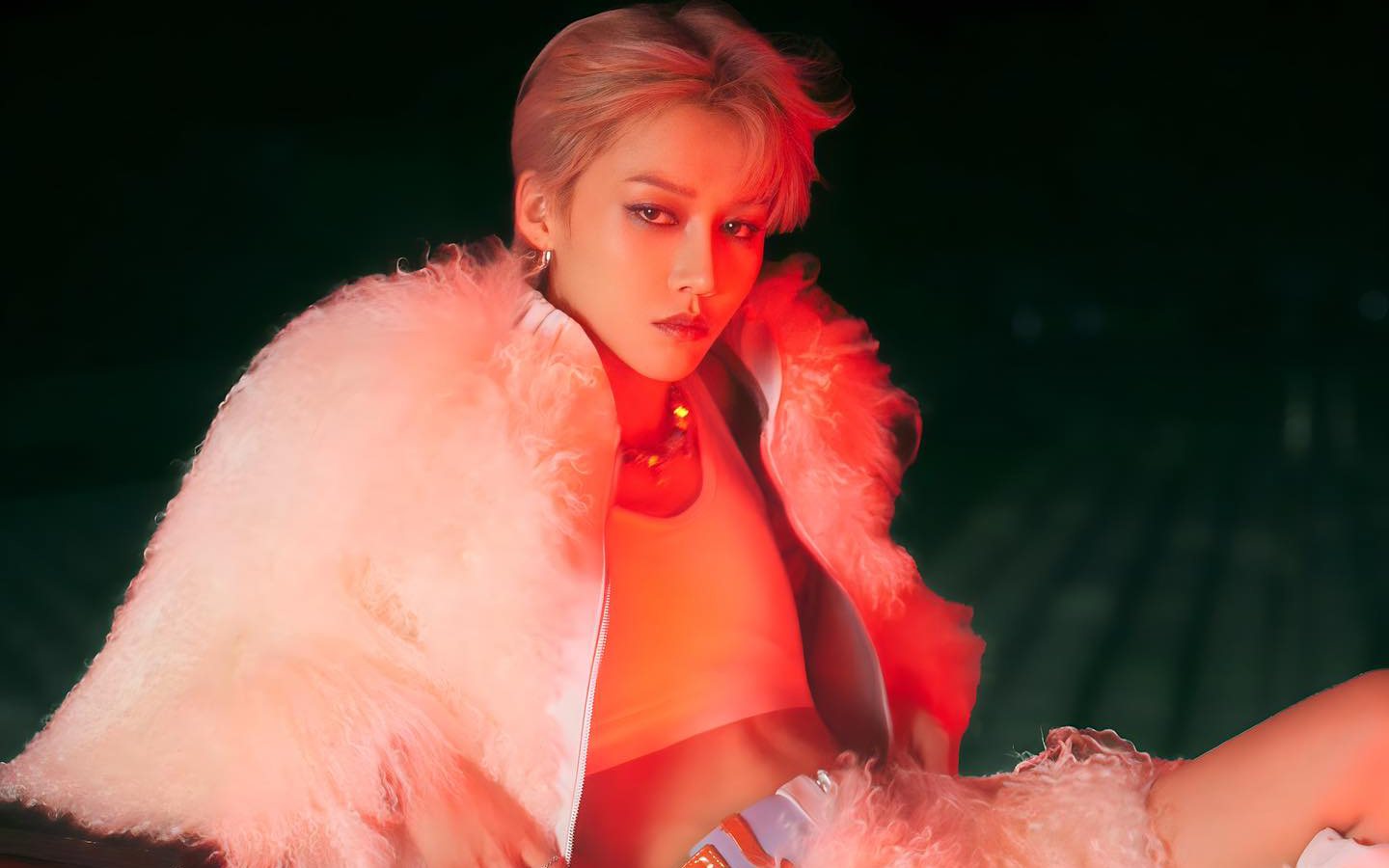
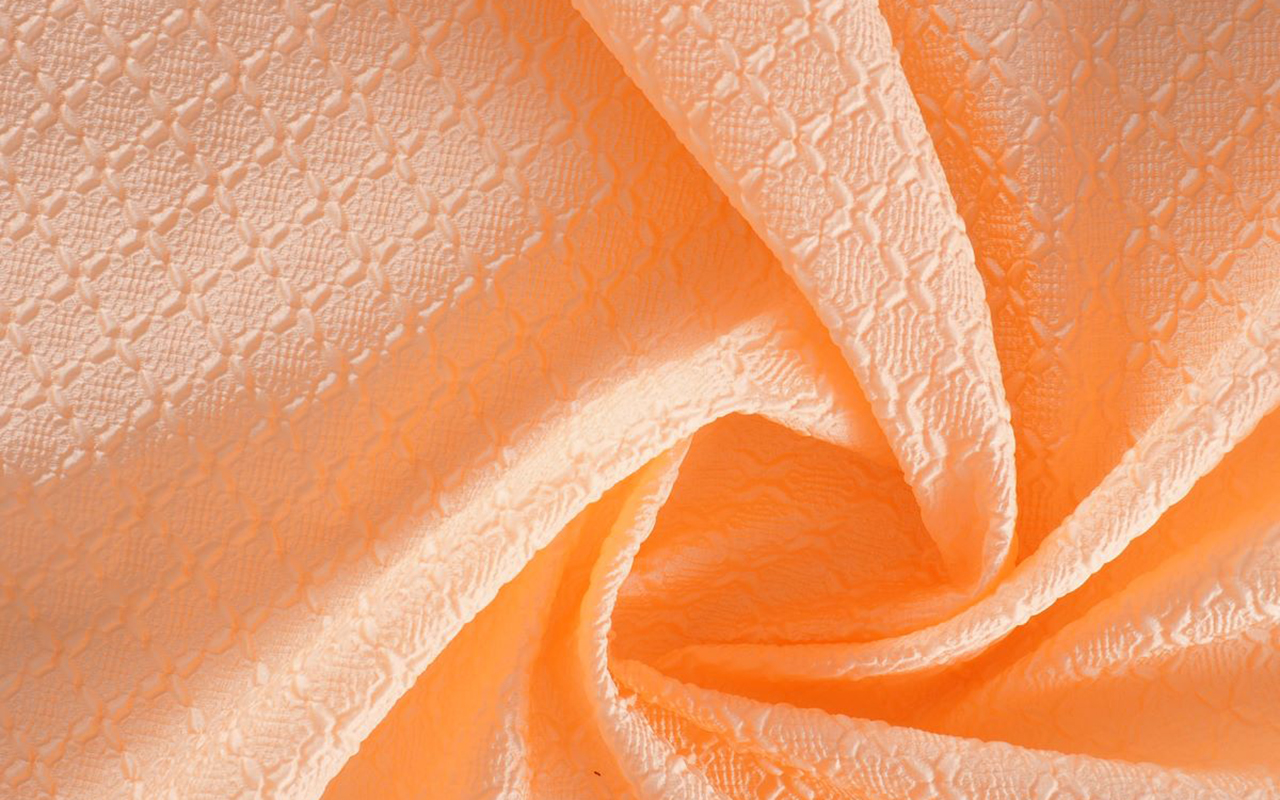
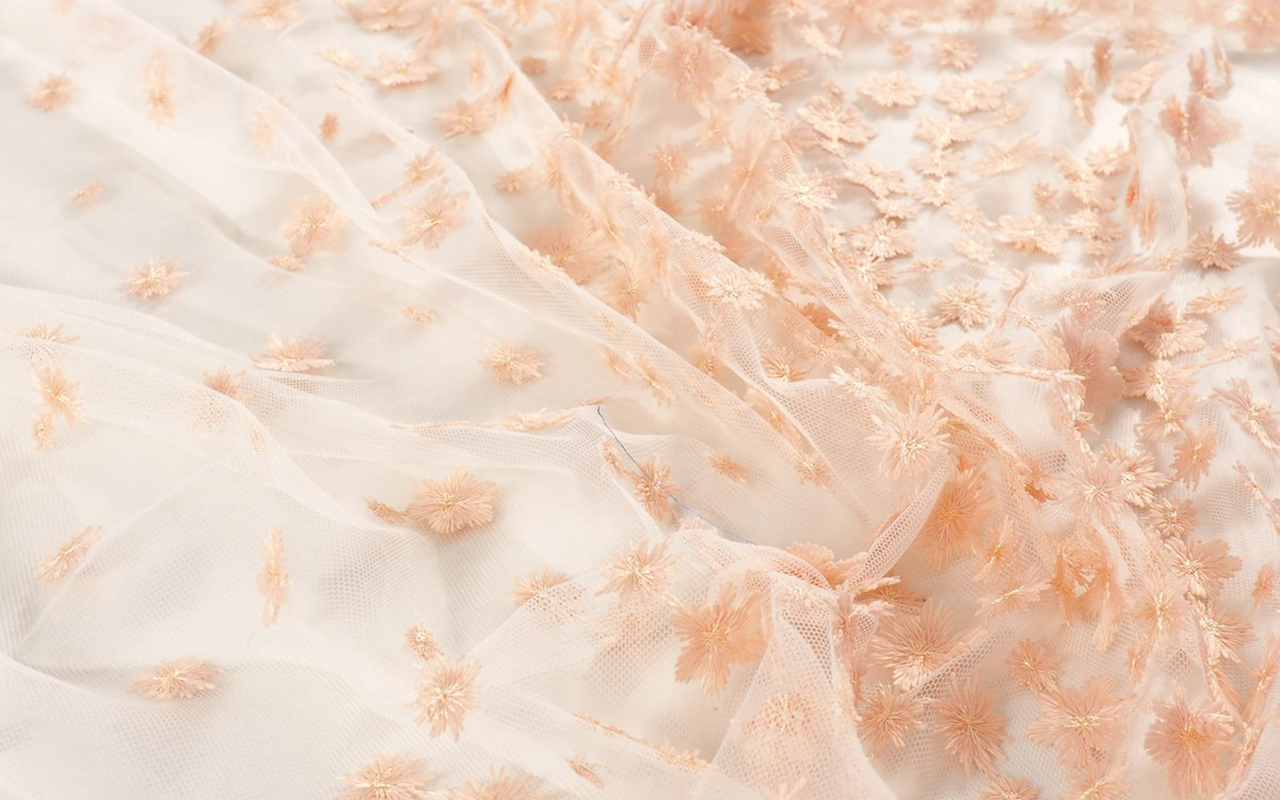
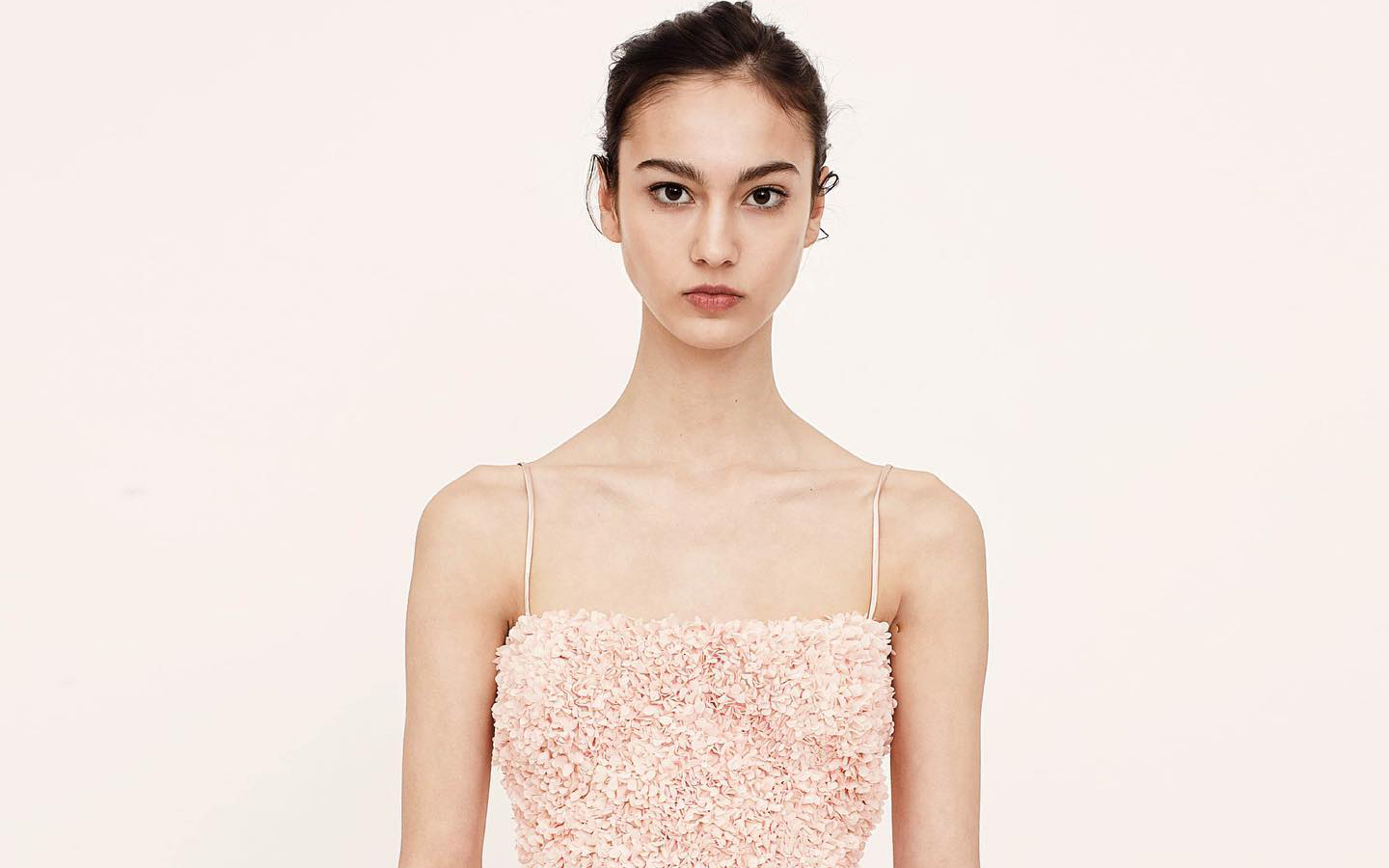
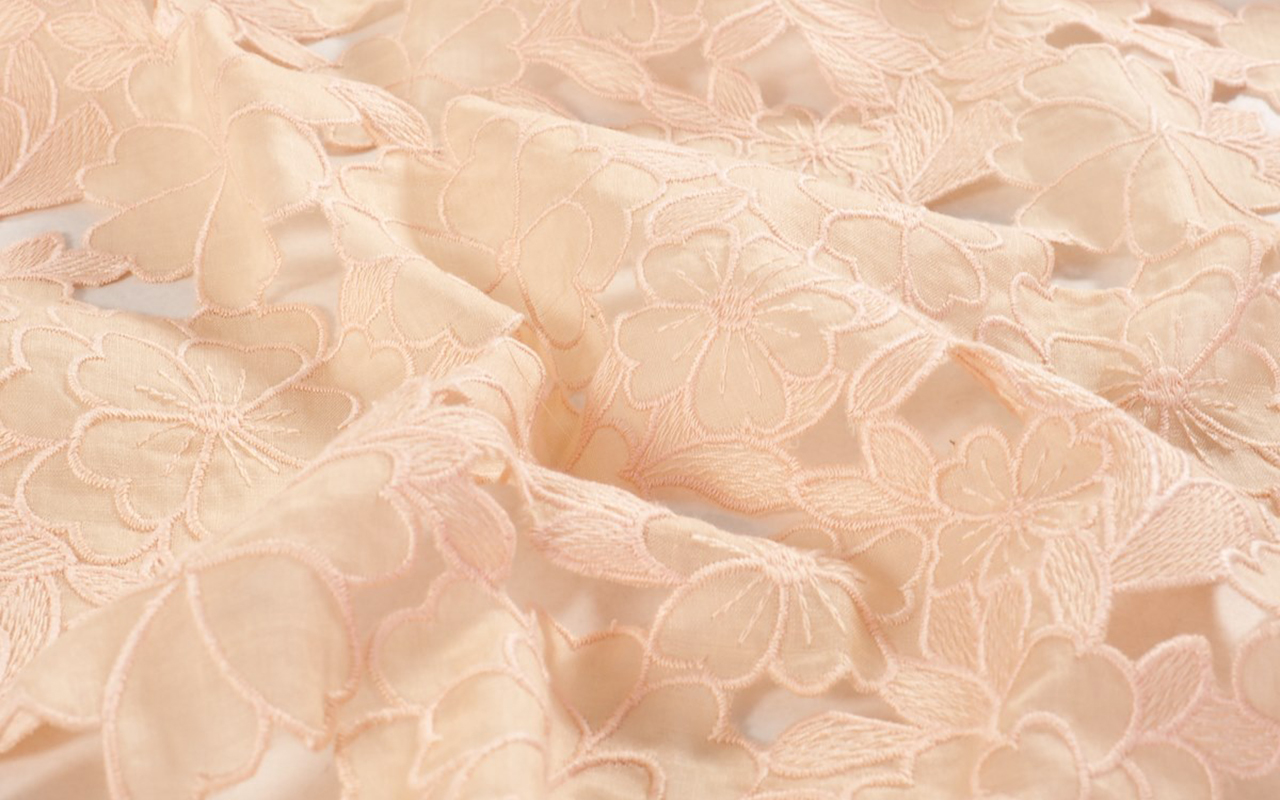
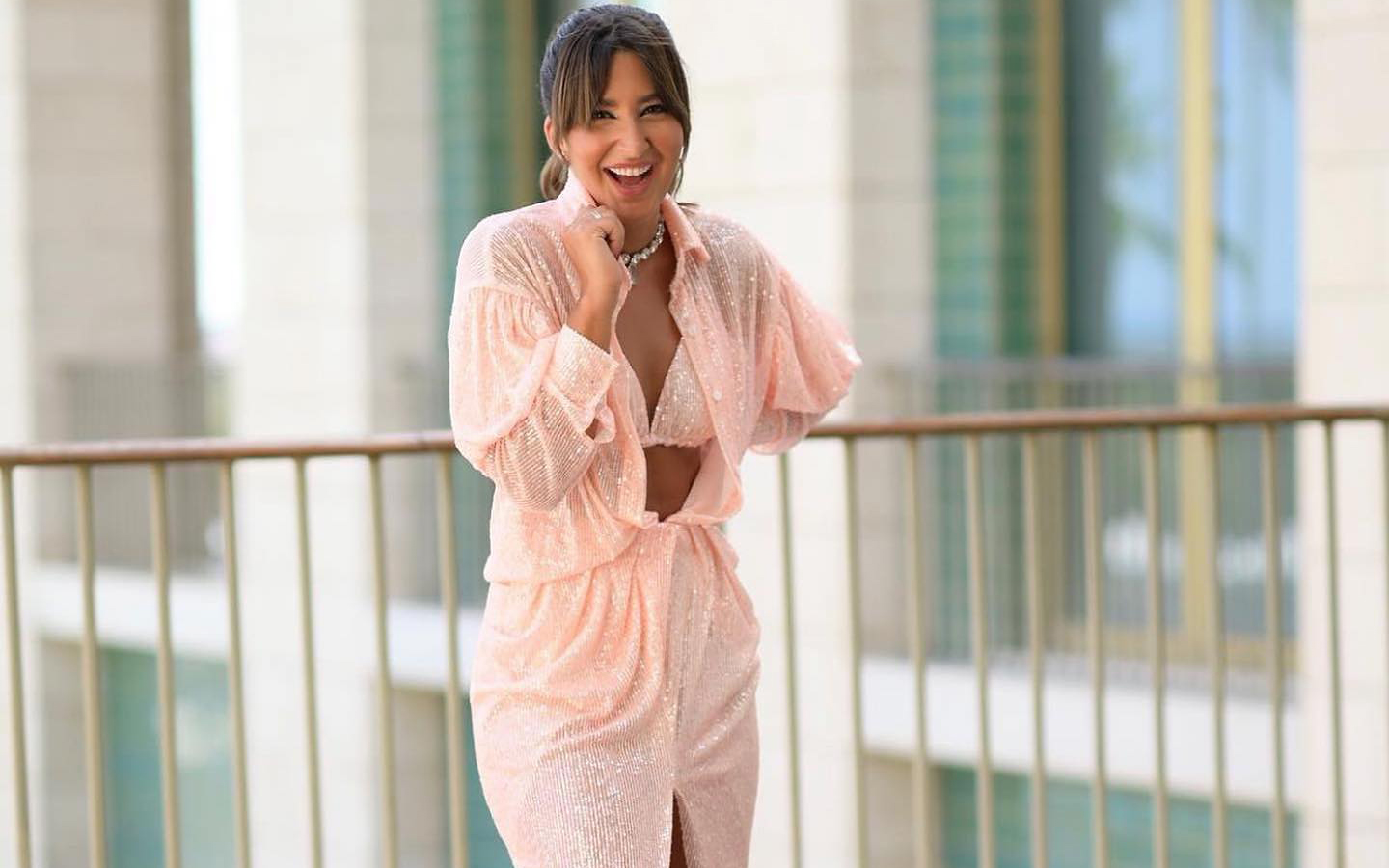
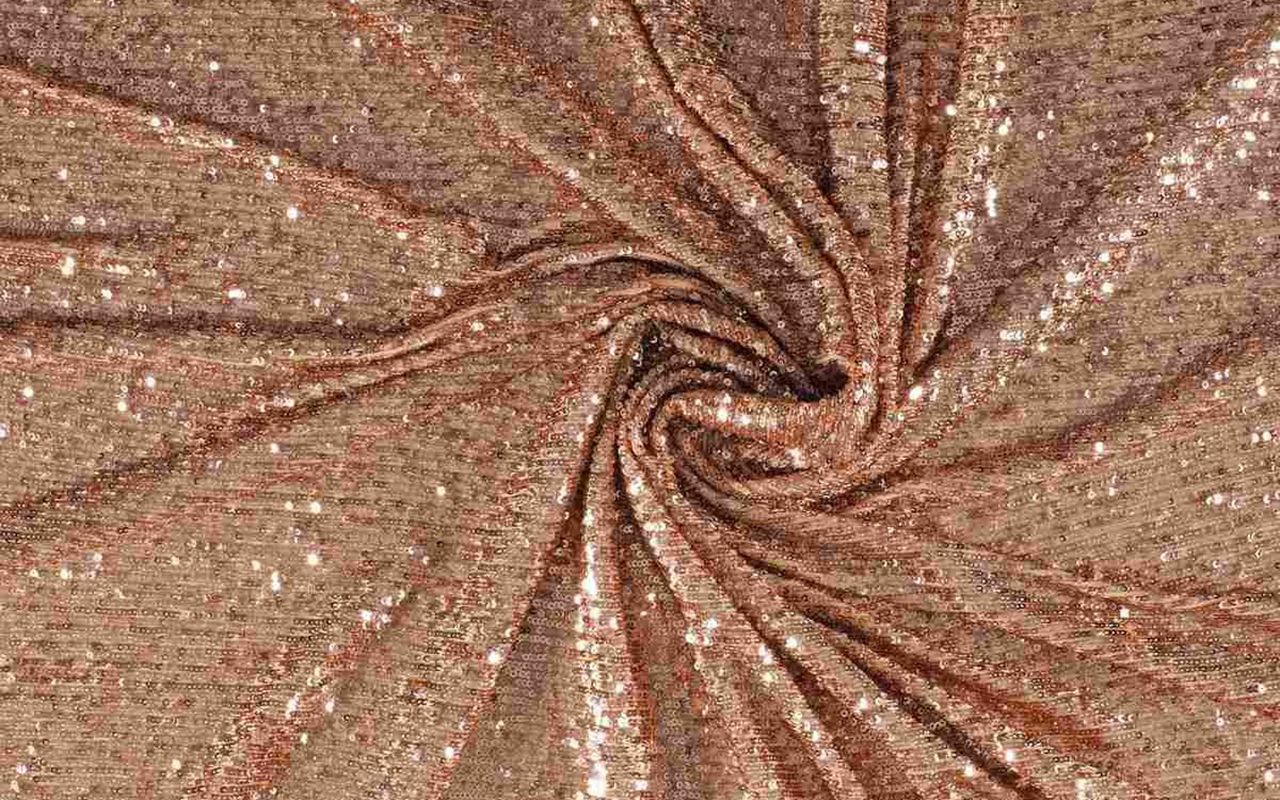
Un color sincero, tierno y empático
Siguiendo su vocación de bautizar los colores con nombre sutilmente sensuales, Pantone ha elegido el ganador para el año que viene. El color en cuestión se llama Peach Fuzz 13-1023 y es una tonalidad melocotón que evoca sinceridad y ternura, y transmite, según la autoridad mundial en cuestiones de colorimetría, un deseo de cuidar de nosotros y de los demás. Una tonalidad suave y aterciopelada cuyo espíritu envolvente enriquece la mente, el cuerpo y el alma. Así lo explica Laurie Pressman, vicepresidenta del Pantone Color Institute, en un comunicado sobre el color que lo teñirá todo en 2024. “Buscábamos una tonalidad que expresara nuestro deseo innato de cercanía y conexión, así que escogimos este radiante color que rebosa calidez y elegancia moderna. Es un color que despide empatía, nos arropa en un abrazo que casi podemos sentir y aúna con toda naturalidad lo juvenil con lo imperecedero”. Este tono cálido y reconfortante estimula el deseo de unión con los demás o de tener momentos de quietud, y la sensación de protección que esto genera.
El tono de la calma y de la paz interior
Según Pantone, Peach Fuzz 13-1023 es una atractiva tonalidad amelocotonada, cuidadosamente equilibrada entre el rosa y el naranja, que inspira pertenencia, relajación y la oportunidad de cuidar, evoca calma y ofrece un espacio en el que se puede vivir, sentir, sanar y prosperar. Por lo tanto, el color de 2024 es reconfortante y fomenta la paz interior y el bienestar. Peach Fuzz 13-1023 tiene tanto de idea como de sensación y estimula todos los sentidos, ya que hace percibir su tactilidad y envuelve a las personas en su calidez.
Un tono moderno que se refugia en la nostalgia
Peach Fuzz 13-1023 es un color dulce y ligero que evoca una nueva modernidad. Se centra en la experiencia humana de enriquecer y cuidar de la mente, el cuerpo y el alma, pero también es un tono melocotón sutilmente sofisticado, moderno y profundo, con una luminosidad suave pero efectiva que llena de belleza el mundo digital. Un tono amelocotonado, poético y romántico que transmite limpieza y una sensación vintage, Peach Fuzz 13-1023 refleja el pasado, pero reimaginado para ambientes modernos. Esta última característica la hace especialmente interesante para el mundo del diseño y la decoración.
El significado del color en un contexto inestable
El Peach Fuzz 13-1023 es el color que substituye el Viva Magenta, que fue elegido como color de 2023. Lo defendían así: “Un tono arraigado en la naturaleza que vibra con energía y vigor. Que desciende de la familia roja y expresa una nueva señal de fuerza”. Así, ahora pasamos de la fuerza a la calidez.
“Cuando nuestra vida se ve afectada por la inestabilidad, crece aún más nuestra necesidad de cuidar y de tener empatía y compasión, así como de imaginar un futuro que traiga más paz”, explica de nuevo Laurie Pressman sobre el significado del color que veremos en los próximos meses a lo largo y ancho de todo Instagram y de tableros de Pinterest, así como, probablemente en las próximas tendencias tanto de moda como de decoración. “En un mundo en el que se suele enfatizar la productividad y los logros externos, es crucial reconocer la importancia de cuidar de nuestro interior y buscar momentos de calma, creatividad y conexión con otras personas en medio del ajetreo de la vida moderna”, añade la vicepresidente del Pantone Color Institute. Valorar los vínculos, el cariño y el hogar: “El color que hemos seleccionado tenía que expresar nuestro deseo de estar cerca de nuestros seres queridos y la felicidad que sentimos cuando conectamos con nuestro propio ser y disfrutamos de un momento de quietud a solas. Tenía que ser un color que transmitiera una calidez envolvente y un mensaje de compasión y empatía”, argumenta Laurie Pressman.
25 años marcando tendencias en color
En 2024 se cumplirán 25 años desde que Pantone Color Institute empezó a poner el color en el mapa sensorial y creativo del año siguiente. Fue en 1999 cuando el programa educativo Pantone Color of The Year involucró a la comunidad del diseño de todo el mundo en una conversación en torno al color. “Queríamos poner énfasis en la relación entre la cultura y el color para destacar ante nuestro público cómo lo que está ocurriendo en nuestra cultura global se expresa y refleja a través del lenguaje cromático”, explica de nuevo Pressman. En esta primera sesión salió un claro vencedor: el azul cerúleo (Pantone 15-4020), una tonalidad que volvió al estrado gracias a la película ‘El diablo viste de Prada’ y el célebre discurso de Meryl Streep sobre cómo funciona la industria de la moda. “Con los años, el programa Pantone Color of the Year se ha convertido en un referente cultural en todo el mundo y ha estimulado la imaginación de muchos diseñadores, marcas y consumidores”, explica Pressman.
Para llegar a la selección de cada año, el equipo de Pantone Color Institute recorre el mundo en busca de nuevas influencias cromáticas. Pueden encontrarse en la industria del entretenimiento (cine, series de televisión e incluso música), obras de arte y nuevos artistas. Por supuesto, en la moda y el diseño, pero también en lugares o conceptos más aspiracionales, como puedan ser destinos de viaje que empiezan a ser tendencia, estilos de vida, nuevas tecnologías y materiales, texturas o efectos (sí, como los filtros de Instagram) que generen interés o acaparen la atención de alguna forma.
Lo que comenzó siendo un catálogo con 500 colores que sirviese como guía para las artes gráficas ha crecido de tal manera que su influencia en las próximas tendencias se equipara a lo que la mayor celebridad del momento luzca en la portada de la revista Vogue. La guía Pantone cuenta ya con más de 2.000 referencias que se van actualizando cada 18 meses, con nuevos tonos más precisos que se van añadiendo a la lista.
Otra manera de contar la evolución como sociedad
El color desempeña un papel fundamental en la experiencia de las personas. Tiene una relación cercana con las emociones y la expresión de los sentimientos y en sus matices se aprecian también en cómo evoluciona la historia año tras año con sus ciclos de auge y descenso. El impacto del color también se nota en el mundo de la moda, en los colores de los cosméticos, en los artículos para el hogar, en el diseño automovilístico e industrial, y en los productos, embalajes, diseño multimedia e interiores de los comercios. “Nos complace enormemente haber estimulado a diseñadores y entusiastas del color de todo el mundo a contar sus historias a través del lenguaje cromático y a mostrar su creatividad en sus comunidades. Esperamos poder seguir haciéndolo durante muchos más años”, concluye Pressman.
Desde Gratacós también hemos querido hacer nuestro particular homenaje al Peach Fuzz 13-1023 con una selección de tejidos de colección en tonos melocotón para que vayas pensando un posible diseño para este 2024. Los encontrarás aquí: ¡Da rienda suelta a la imaginación!










Miércoles 22 noviembre 2023
 Pics: Museo del Traje CIPE.
Pics: Museo del Traje CIPE.
How many jeans do you have in your closet? Or, rather, how many garments made with denim? Surely, the mental figure would occupy double digits if we start counting the number of trousers, skirts, dresses, shirts and jackets that hang on the hangers and are made with the world-famous denim, without a doubt, the king of fabrics.
Jeans and denim clothing are some of the most universal elements in contemporary fashion. These garments transcend social class barriers around the world and, although they initially emerged as utilitarian garments for the working classes, over time they have become common items that unify all wardrobes.
From the pioneer Levi’s, founded in 1853, to today’s ready-to-wear brands and luxury houses. If we had to define the 20th century to the present day in one piece, it would surely be a pair of jeans: whether it be a model with large tears, patchwork elements and misaligned hems, or the stylish model that Kaia Gerber wore at Valentino for the show Haute Couture Fall-Winter 2023-2024. In the words of Pier Paolo Piccioli: “Strength is not in the outfits, but in the clothes.”
Aware of the universal power and conceived as a symbol of our contemporary culture, the Costume Museum wanted to pay tribute to the eternal jeans with the exhibition ‘Jeans, from the street to the Ritz‘.
Curated by Josep Casamartina i Parassols and Ismael Nuñez Muñoz of the Fundació Antoni de Montpalau and coordinated by María del Mar Belver, the exhibition pays tribute to the cowboy. How? Through a journey through the history of denim fabric, from its origins as a material in the 18th century, through the birth of the jean in the mid-19th century and its enormous expansion throughout the 20th century and the beginning of the 21st, to its infinite formal and textile variations, but also symbolic and social.
The proposal includes more than 200 pieces of clothing accompanied by graphic documentation and accessories from the Fundació Antoni de Montpalau, completed with loans from the private collections of the collector Josep M. Rovira, the historical archive of the Lois brand and the collector Paco Sifre, as well as the companies Jeanología and Evlox. Among them, classic brands dedicated to making jeans stand out, such as Levi Strauss, Lee, Lois or Pepe Jeans, but also brands such as Cavalli, Armani, Kenzo, Paco Rabanne, Gloria Vanderbilt, Calvin Klein, Thierry Mugler, Jean Paul Gaultier, Dolce & Gabbana, Moschino, Versace, Gori de Palma or Christian Lacroix.

From Europe to the United States. The origins of denim
The origins of this fabric date back to the 17th and 18th centuries, until the mid-19th century when the garment that takes its name from the fabric itself was born. Denim is a cotton twill made with very strong and durable twisted threads. The beginnings of the industry are located between Nimes – this is where the name comes from – and Genoa, where most of the factories that produced the fabric were concentrated. Jeans as such were not “invented” until 1860, when Levi Strauss began using twill fabric to make work clothes. Without disconnecting from the United States, the exhibition follows the course of history and strips the cowboy of its exclusive association with the working class, explaining how it came to be a symbol of masculinity and, later, a garment of female empowerment through its outstanding diffusion in the world of cinema, music or urban movements.
The exhibition also presents a section on denim production in Europe, with an industrial network of brands dedicated to denim clothing that would soon achieve great international dissemination. In fact, Spain was one of the most prominent producers, with companies in Catalonia, Valencia, the Basque Country and Castilla la Mancha.
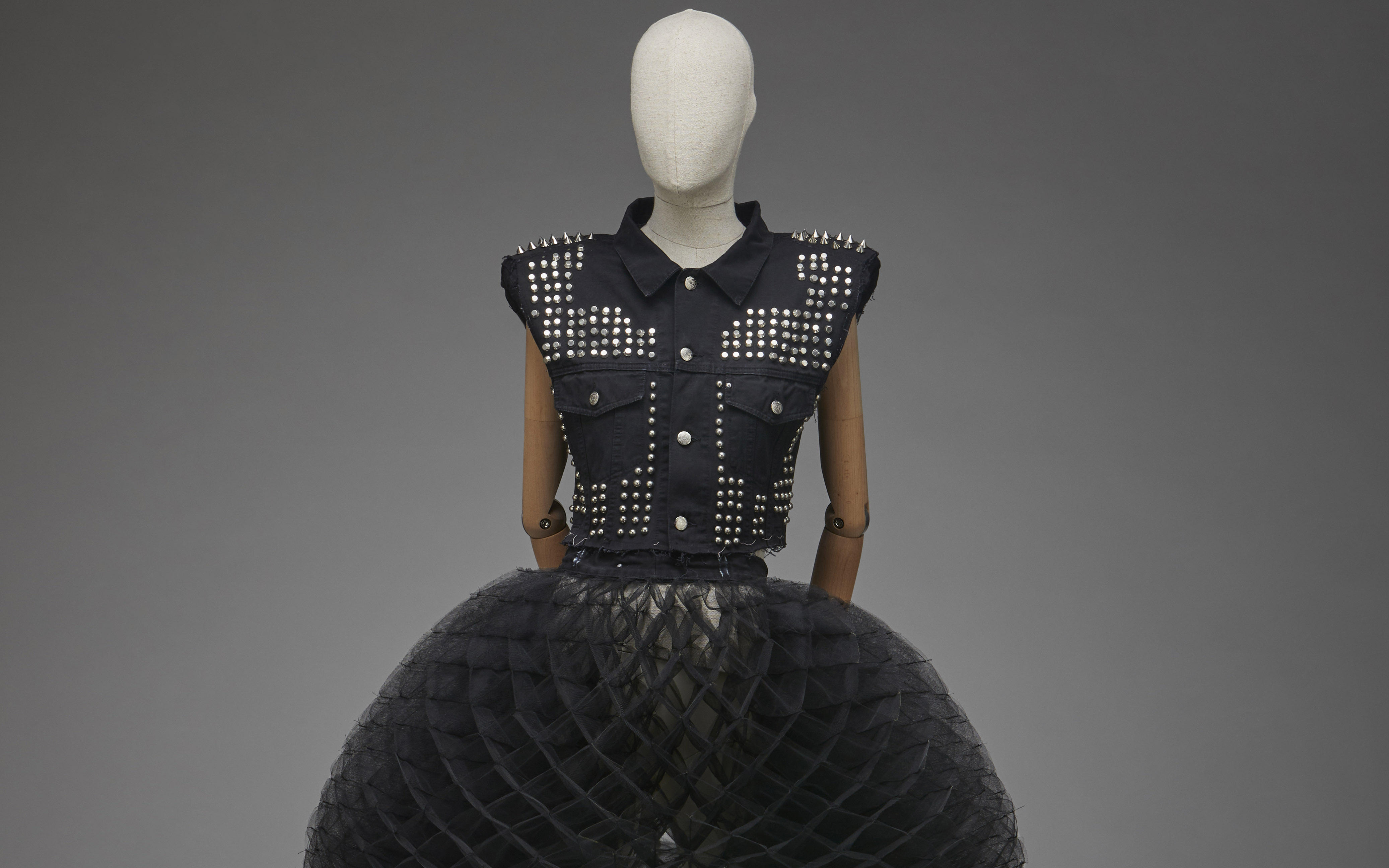
A constant metamorphosis
Starting in the 1970s, the fashion world adopted denim and integrated it without complexes. The industry moved forward in search of new horizons and gave rise to countless variations in the types of denim garments. It is curious that, although jeans were born to last, at the end of the 20th century a taste for worn and torn jeans arose. In the same way, it was used to recreate modern versions of historical pieces totally removed from utilitarian clothing. Pleats, draping, puffing, pleating, extravagant prints and all kinds of embroidery flooded jeans in the world of luxury. In fact, the exhibition also explains how major luxury brands adopted denim and introduced jeans into the world of glamour, generating a kaleidoscopic denim universe.
Precisely, the exhibition culminates with a “brunch at the Ritz”, where the aim is to emphasize how denim has become a prominent part of the social elite. With a nod to the famous quote by Yves Saint Laurent, who proclaimed “Down with the Ritz! Long live the street!”, the exhibition shows how jeans would end up taking over the Ritz in their own right thanks to their enormous versatility and their role as absolute kings of the street.

The sustainable vision
Jeans, from the street to the Ritz’ also highlights an uncomfortable issue. Beyond being the most popular and durable fabric in the world, denim also has a dark back: it is the fabric that demands the most water resources. To produce a single pair of jeans, 3,000 liters of water are needed. In one of the challenges posed for the new century, the exhibition also addresses, although cautiously, the ecological implications of the manufacturing process and the search for sustainable alternatives for its production.
‘Jeans, from the street to the Ritz’ will be open to the public until the 17th March, 2024.

Sorry, this entry is only available in European Spanish.
Miércoles 11 octubre 2023
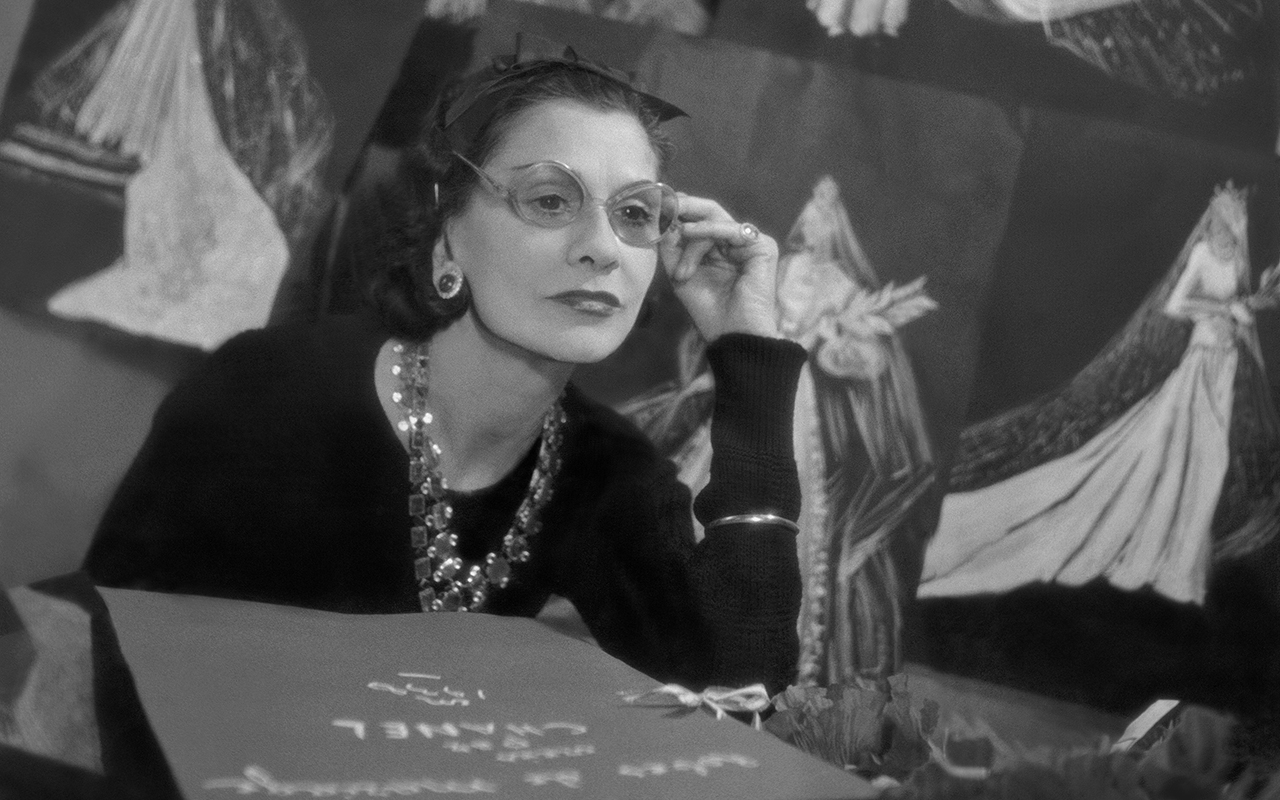 Gabrielle Chanel, 31 rue Cambon, 1937, Paris. Photo: Roger Schall/Condé Nast/Shutterstock
Gabrielle Chanel, 31 rue Cambon, 1937, Paris. Photo: Roger Schall/Condé Nast/Shutterstock
The UK has long awaited such an ambitious exhibition focusing on the style and work of one of the great icons of contemporary fashion. After the success of the first weeks since its premiere and a triumphant opening, the V&A resumes its usual activity so that culture lovers can contemplate with greater peace of mind the life path and savoir-faire of Gabrielle ‘Coco’ Chanel.
Gabrielle Chanel. Fashion Manifesto is the first exhibition dedicated to the work of the celebrated French couturier and traces the evolution of her iconic design style and the creation of the House of CHANEL, from the opening of her first hat store in Paris in 1910 to the presentation from his last collection in 1971.
The exhibition stands out for its grandeur in every aspect, with rarely seen pieces that have been recovered from the Palais Galliera and the heritage collections that form part of the Chanel Heritage. It presents in the same space almost 200 looks that are exhibited together for the first time, as well as accessories, perfumes and jewelry, which explore Gabrielle Chanel’s talent in fashion design. She was a visionary who paved the way to a new elegance and continues to influence the way women dress today. Among the treasures exhibited, one of the oldest Chanel garments preserved, dating from 1916, stands out; original costumes designed for the production of Ballets Russes from Le Train Bleu in 1924; outfits created for Hollywood stars Lauren Bacall and Marlene Dietrich; an early example of Chanel’s revolutionary evening pants and ensembles from Chanel’s final collection in 1971.
An unprecedented formula: comfortable elegance
Chanel designed above all for herself. By creating clothing suitable for an independent and active lifestyle, she anticipated the needs and desires of women. “Gabrielle Chanel dedicated her life to creating, perfecting and promoting a new type of elegance based on freedom of movement, a natural and casual pose, a subtle elegance that rejects all extravagance, a timeless style for a new type of woman,” said Miren Arzalluz , director of the Palais Galliera at the opening of the exhibition in London. This is precisely the Coco Chanel Manifesto, a legacy that remains alive today: “Her success was based not only on the functionality, comfort and chic elegance of her designs, but also on her ability to understand and interpret the needs and desires of the women of her time,” added Arzalluz.
Through ten thematic sections, the exhibition explores Chanel’s innovative approach to fabric, silhouette and construction, and examines how she established a new framework for fashion in the 20th century. Showcasing an impressive array of some of Chanel’s most notable designs during her sixty years in fashion, the exhibition examines her professional career, the emergence and development of her style and her contribution to fashion history. The exhibition also places special emphasis on Chanel’s British inspirations, such as her adoption of tweed, collaborations with British textile companies and a textile factory in Huddersfield.
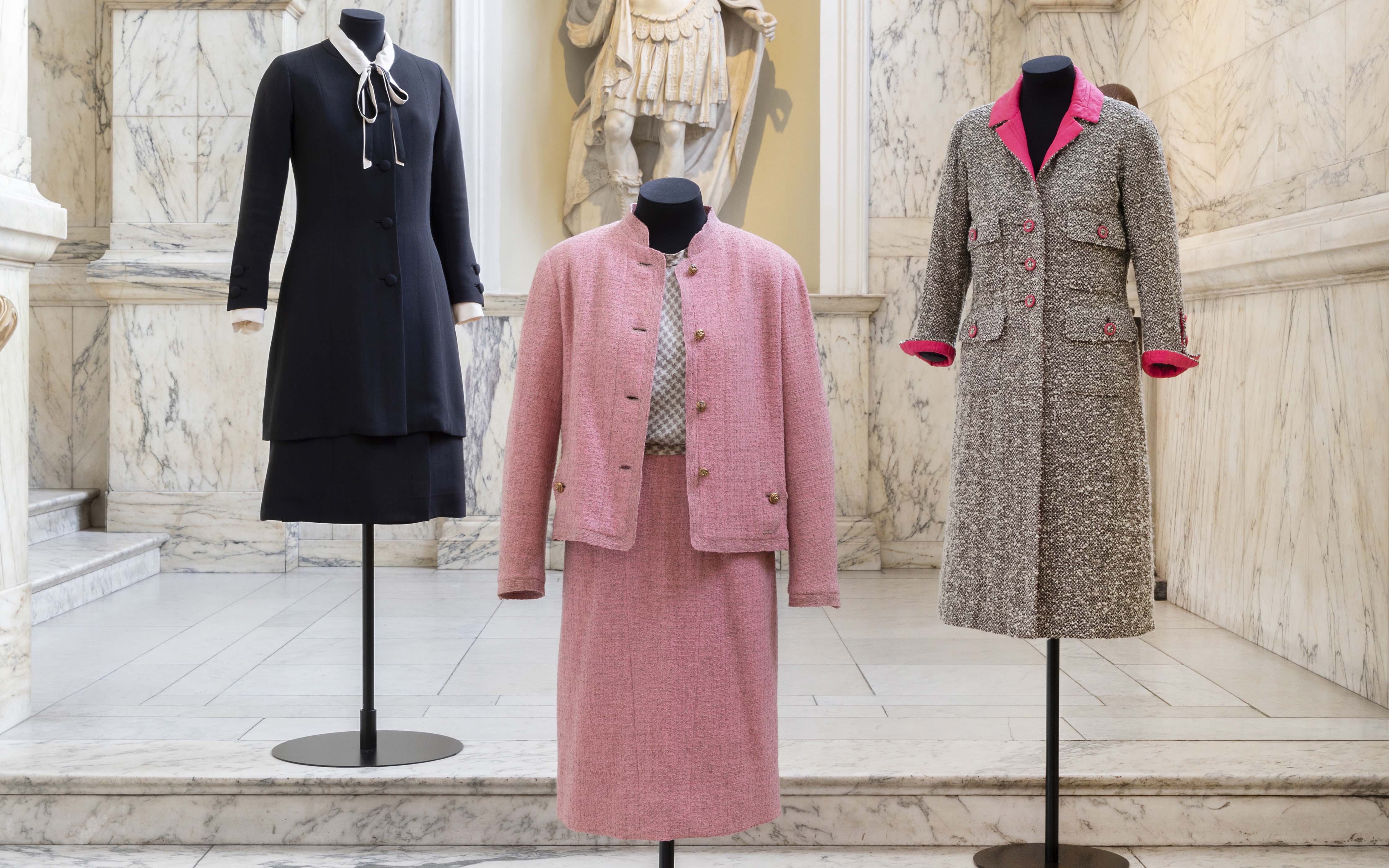 Gabrielle Chanel. Fashion Manifesto at the Victoria and Albert Museum
Gabrielle Chanel. Fashion Manifesto at the Victoria and Albert Museum
We review some key sections present in the exhibition:
Towards a New Elegance offers an introduction to the beginning of Gabrielle Chanel’s career as a couturier, opening her first boutique on the rue Cambon in Paris in 1910, and later, in the coastal resorts of Deauville and Biarritz. This introductory section describes how the success of this business allowed it to expand into tailoring and showcases one of the oldest surviving Chanel garments, characterized by minimalism and precision. A simplified way of dressing that contrasted with the excessively decorative fashions of the time and that would lay the foundations for its design principles.
The Emergence of a Style focuses on how Chanel developed a distinctive and immediately recognizable style in the 1920s and 1930s. With clean lines, fluid materials and a simple colour palette, her understated designs were radical in their practicality and displayed an elegance refined. This block also examines the role of textiles and manufacturing, the use of embroidery in their designs and highlights the famous black Chanel dress.
The Invisible Accessory presents the creation and impact of the debut of Gabrielle Chanel’s No. 5 perfume, which became the best-selling fragrance in the world. Designed as an extension of her clothing and reflecting her vision of modernity, Chanel made the N°5 the signature of her fashion house. This section also explores the launch of the Chanel makeup line in 1924 and skin care products in 1927.
Luxury and Line focuses on how Chanel eveningwear demonstrated a refined blend of inventiveness and classicism that subtly accentuated the female form. The designer harmonized proportions and materials with the aim of creating garments that expressed elegance, freedom and simplicity. The resulting designs conveyed the tension between the garment and the body, described in French as the ‘ allure ‘. This block will also examine ‘ Bijoux de Diamants ‘, his first and only fine jewelry collection from 1932 commissioned by International Diamond Corporation of London.
Closing the House describes the impact of the outbreak of war in 1939 on her personal and professional life. The exhibition continues with Chanel’s Official Return to Fashion on 5th February, 1954, with the reopening of her haute couture house at the age of seventy-one. Chanel’s comeback collection featured the distinctive features she had introduced so successfully during the 1920s and 1930s, representing her updated vision of the modern woman’s wardrobe.
The Suit focuses on Gabrielle Chanel’s defining garment of post-war fashion, with over fifty outfits in a variety of colours displayed on two levels. A statement of her vision of modern femininity, the Chanel suit combined comfort and elegance with simplicity and style. Described by Vogue in 1964 as “the most beautiful uniform in the world”, the Chanel suit, which has since become a timeless classic, remains a fundamental reference in fashion today.
Chanel Codes shows how accessories were fundamental to Chanel’s conception of a harmonious silhouette. The accessories reflected her pragmatic vision of fashion and provided recognizable codes that underlined the unity of her style. Since the 1950s, the Chanel 2.55 bag and two-tone slingback shoes have become two of the most enduring accessories in the fashion world.
Into the Evening presents festive fashion as an important part of Chanel’s haute couture collections in the last stage of her career. From the late 1950s she adapted her suits to include a range that could be worn at night. These cocktail dresses followed the same shape as her day suits, made in a variety of richly decorative fabrics such as gold and silver lamés , textured fabrics, and intricately printed silks. This section takes inspiration from the gold colour palette and black Coromandel lacquer lampshades of Chanel’s own apartment.
Costume Jewellery explores the essential part of Gabrielle Chanel’s distinctive style. Rejecting the conventions of fine jewelry, Chanel gave costume jewelry a new status. From the early 1920s, Chanel boutiques offered a dazzling range of costume jewelry to match its elegant fashion pieces. The designer’s costume jewelry took inspiration from various places and historical periods.
A Timeless Allure represents the end of the exhibition and celebrates the evening dress as an exercise in Chanel style, with looks displayed in a recreation of the iconic mirrored staircase based on the designer’s atelier. Chanel proposed a relaxed version of the formal dress that was discreet and refined, revisiting the foundations that had guided her aesthetic and marked her career. This block shows that, until her last Spring -Summer 1971 collection , Gabrielle Chanel constantly reinterpreted, updated and perfected her rules and principles, continually refining her legendary style.
The Gabrielle Chanel exhibition. Fashion Manifesto will be open to the public until the 25th February.
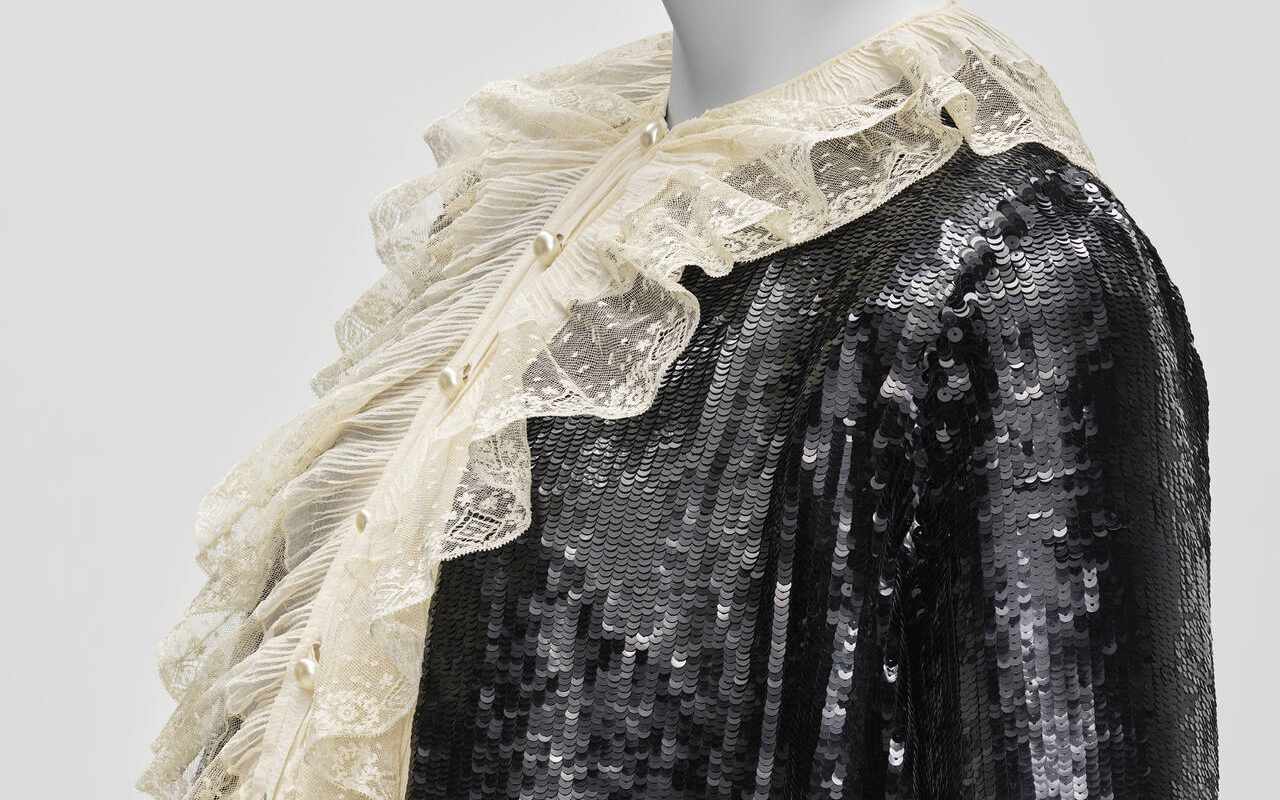
Gabrielle Chanel, Trouser suit 1937-38 © CHANEL / Photo: Nicholas Alan Cope / Courtesy of Victoria and Albert Museum, London / Given by Mrs Diana Vreelan
Miércoles 27 septiembre 2023
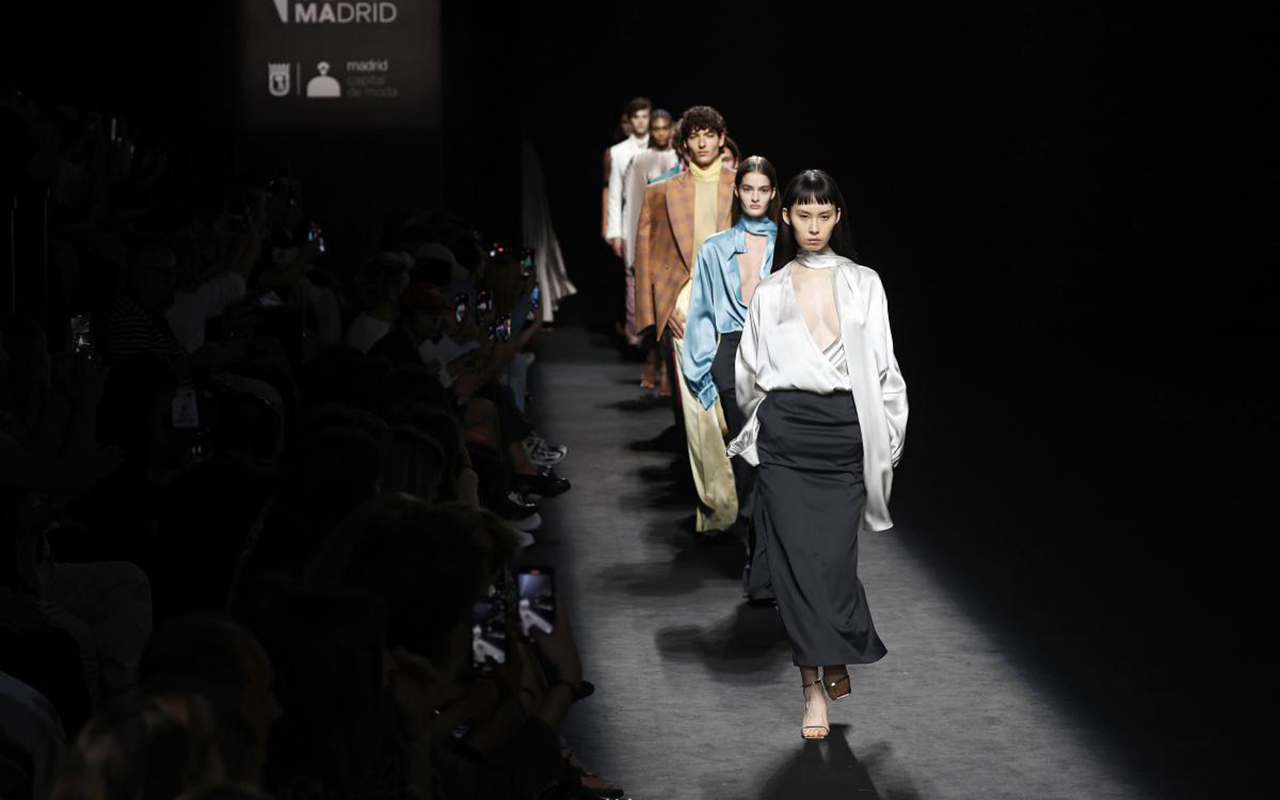
Gratacós has once again set foot on the main Spanish fashion catwalk by starring in some of the most representative looks of the designers who participated in the last edition of Mercedes -Benz Fashion Week Madrid. In each edition we feel admiration and deep respect for the creators who trust us and turn each fabric into a unique and singular creation, adapted to the language and aesthetic codes of each brand. In this latest edition of the Madrid catwalk, we thank Aurelia Gil, Fely Campo, Hannibal Laguna, JC Pajares, Mans, Paloma Suárez, Teté by Odette and Yñesuelves for having placed their trust in us. Below, we reveal a brief summary of the collections for the upcoming Spring -Summer 2024.
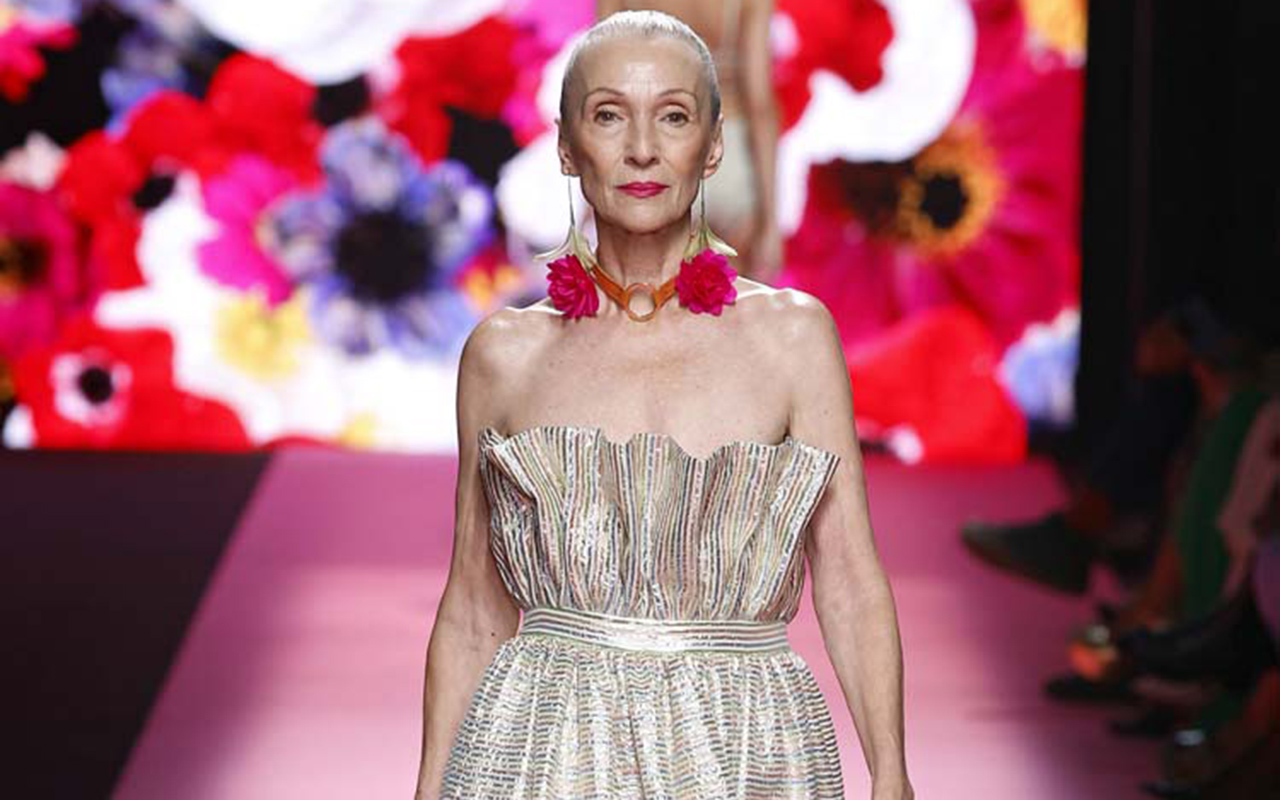
Aurelia Gil
Aurelia Gil returned to Mercedes-Benz Fashion Week Madrid for the second consecutive year. On this occasion, the designer from Las Palmas de Gran Canaria presented her new ‘Tiempo’ collection, which represents a milestone in her constant effort to create conscious and sustainable fashion. To understand Aurelia Gil’s work, it is necessary to know her passion for craftsmanship, which can be seen in each of the pieces, the careful selection of fabrics and the ethereal femininity that permeates each silhouette, with an exquisite result in every sense.
If we delve into the new collection, in ‘Tiempo’ there are plenty of relaxed silhouettes and lines, as well as flowers, which on this occasion are presented from the printing of scarves to surprising fabrics such as silks, tulles and cottons. There is also no shortage of crochet elements, embroidery and lurex printed here and there.
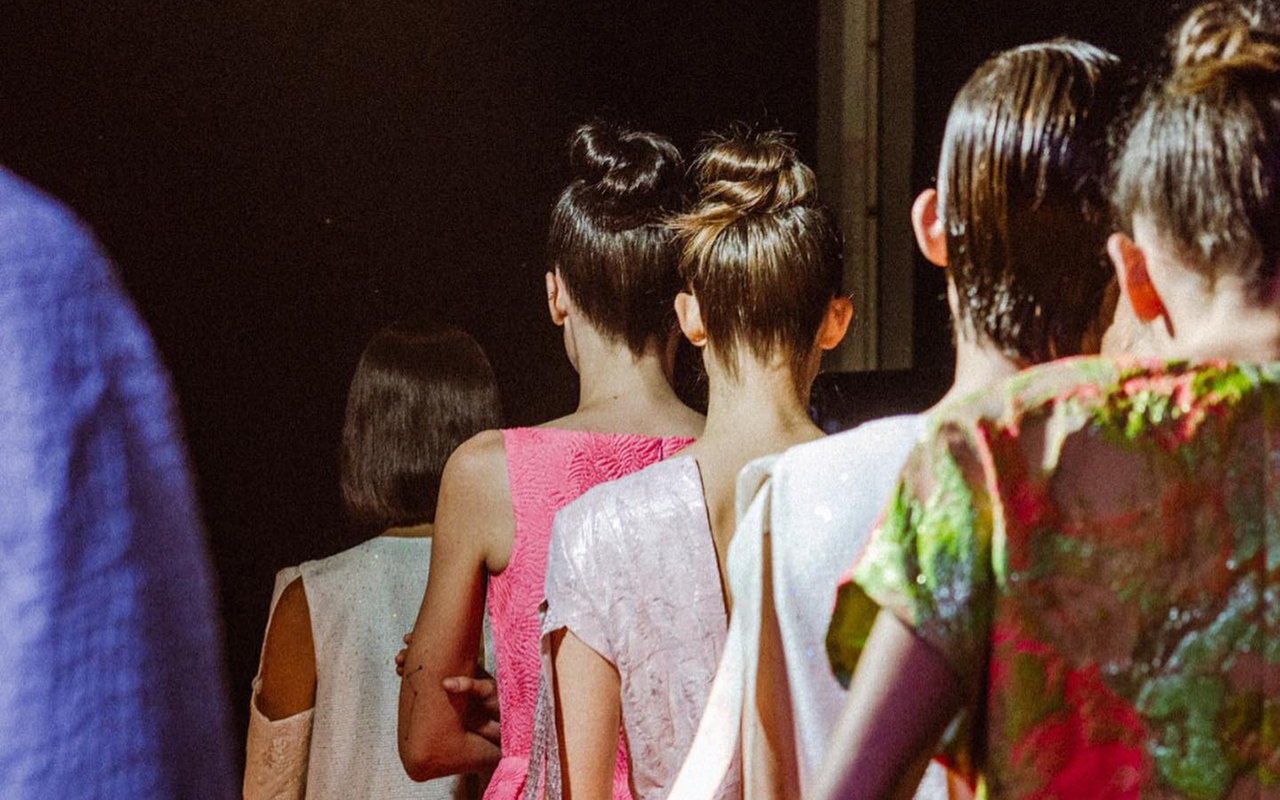
Fely Campo
Fely Campo creatively traveled to Cuba to carry out an exercise in hedonism, freedom, opulence, nostalgia and glamour. The collection presented is called ‘Zigurat’ and consists of 25 looks that are impregnated with the Art Deco aesthetic through pure patterns, which are built with the cleanliness and sobriety of the most whimsical buildings in Havana. Silhouettes and geometric cuts are intertwined with fabrics inspired by ornamental language: brocades flooded with 3D visual games with natural and geometric motifs; organic mosaics that contrast with the verticality of the ottoman’s lines and the bolder tweeds. Against the voluminous calm of the taffetas, the sinuous shapes of the moving satins emerge. The colour palette is impregnated with fluorescent tones, lamé and metallic finishes. A landscape of vivid colours on off-white tones that are enveloped and penetrated by ornaments with iridescent shine and glassy reflections.
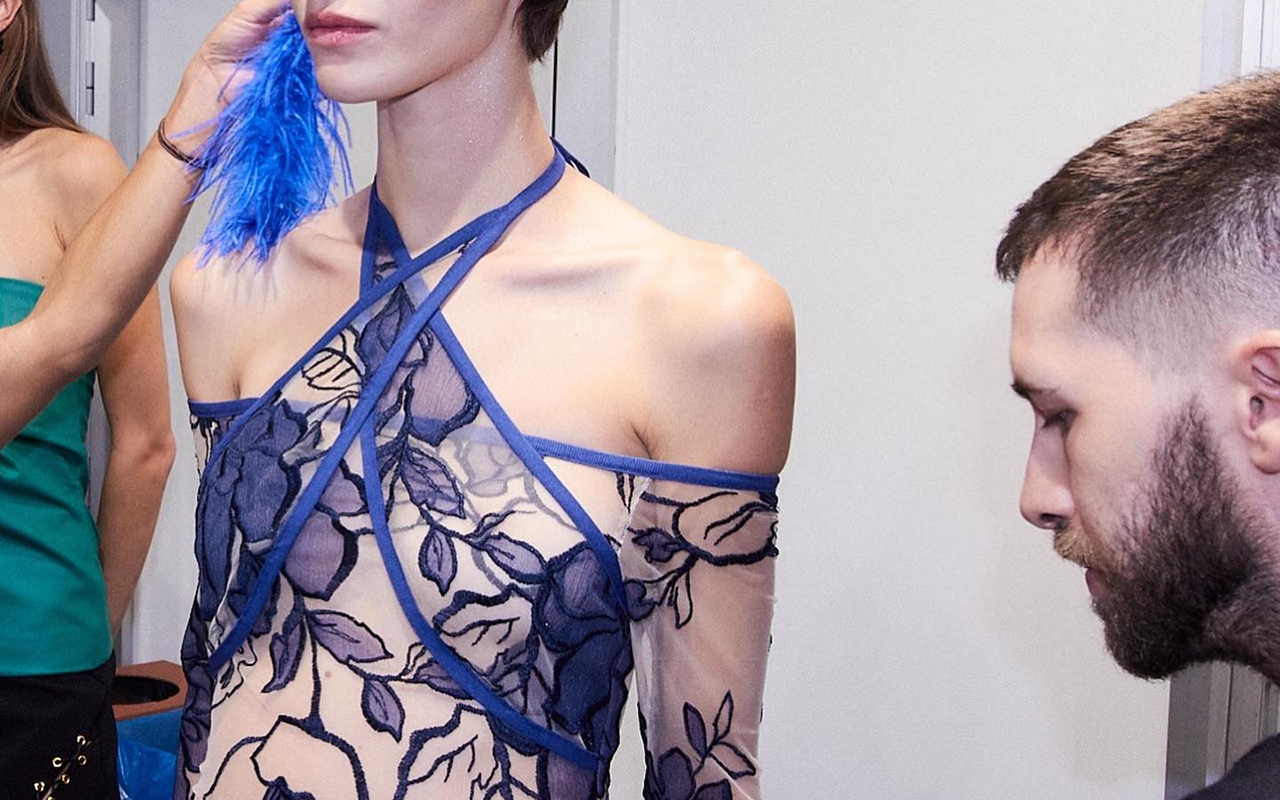
JP Pajares
JP Pajares presented its fourth annual collection on the Madrid catwalk, where summer, winter and timeless garments are combined through designs with artisanal, innovative and environmentally friendly touches. Thus, the ‘ Annual ‘ proposal follows in the wake of the brand’s latest collections with new artisanal luxury and stands out as one of the most special collections thanks to the new collaboration with artisans from Castilla-La Mancha. This union continues to revive and contribute new aesthetic codes to centuries-old techniques that are on the verge of disappearing.
In ‘ Annual ‘, nothing is left to chance and every detail counts: bobbin lace, ceramics, blown glass, hand embroidery, leather, crochet, hand-painted prints and fabrics made on centuries-old looms are intertwined in a collection that consolidates the character, style and brand identity. Innovative and sophisticated patterns, sensual and oversized silhouettes, feathers, pleats and cuts materialize in proposals for both day and night, thanks to fabrics such as wool, silk, silk crepe, cotton, taffeta, denim, tulle, technical fabrics and neoprene, among others. The collection follows a chromatic journey from black to white, passing through earth tones and the brand’s most characteristic solid colours.
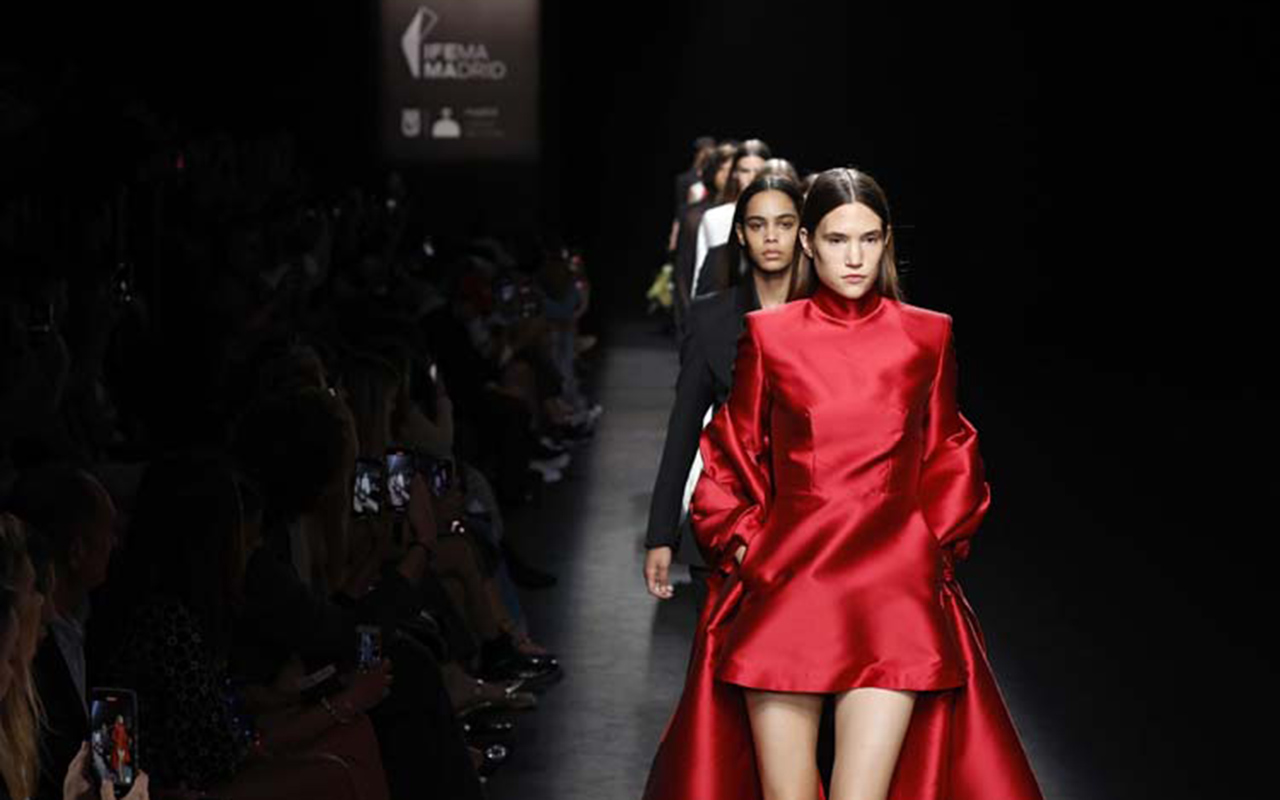
Mans
Mans believes in the elegance and sophistication of classic pieces, but offers a broader vision of fashion through collections that are freed from aesthetic limitations, allowing each person to express themselves with freedom, fluidity and confidence. On this occasion, the brand of creative director Jaime Álvarez, which is committed to impeccable and exuberant tailoring, presented its first women’s collection, maintaining the aesthetic codes it uses for the men’s line.
The collection is structured with a first series of women’s tailored garments that includes tuxedo-style jackets and narrow trousers that elongate the female silhouette. Pencil skirts are also included to maintain the sartorial essence of our brand. With shades such as charcoal grey, black and pearl tones for the wide blouses that seem ethereal, a sober collection is created that evolves towards the 60s in terms of pure straight dresses, some above the knee, others of midi length and others . that rub the ground. They all share vibrant colours and varied fabrics such as taffetas, technical fabrics and adorned with sequins with a “crowskin” effect. The Mans women’s collection show culminated with a bride completely embellished and veiled with silk tulle of more than 5 meters.
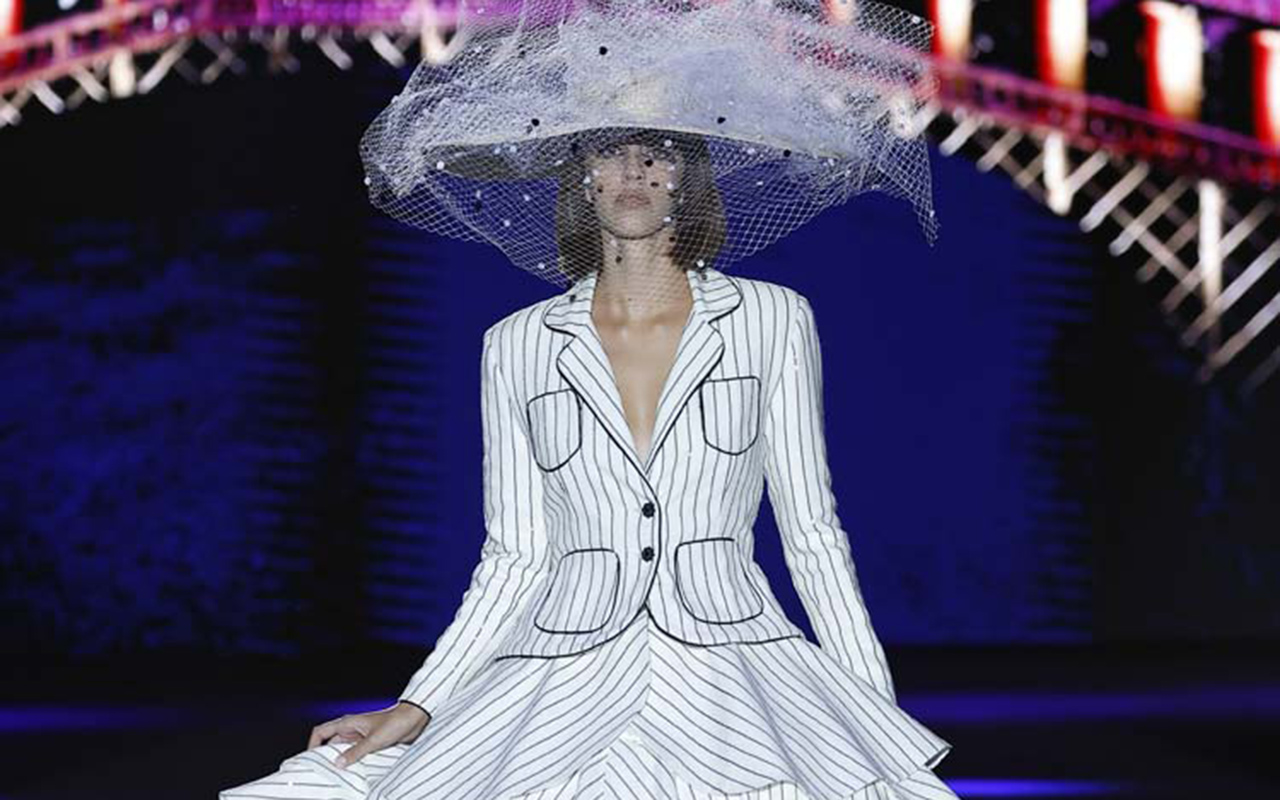
Odette Alvarez
Teté by Odette , the brand of the Cantabrian designer Odette Álvarez, finds in Venice the perfect inspiration to dress women in the next SS24 season. The influence of the world of cinema, the glamour of the city of bridges and canals, the exuberance of carnivals, love and the designer’s personal experiences are condensed in the ‘Venezia’ collection.
This proposal is characterized by fabrics rich in ornaments and beads, elements and silhouettes that evoke the typical Venetian wardrobe, and a vibrant colour palette that includes aquatic green tones, pink and the classic black and white combination, reinterpreted from a contemporary perspective. As for fabrics and materials, luxurious taffetas, silks and lurex stand out, along with more urban fabrics such as denim or stretch silk knit. In addition, there is no shortage of sequins, crystals and rhinestones, distinctive elements of the brand. The nautical stripe print on linen with micro sequin details is transformed into party and wedding dresses, closing a collection full of symbolism and tradition. It is an emotional collection made up of “garments that are easy to wear and hard to forget.
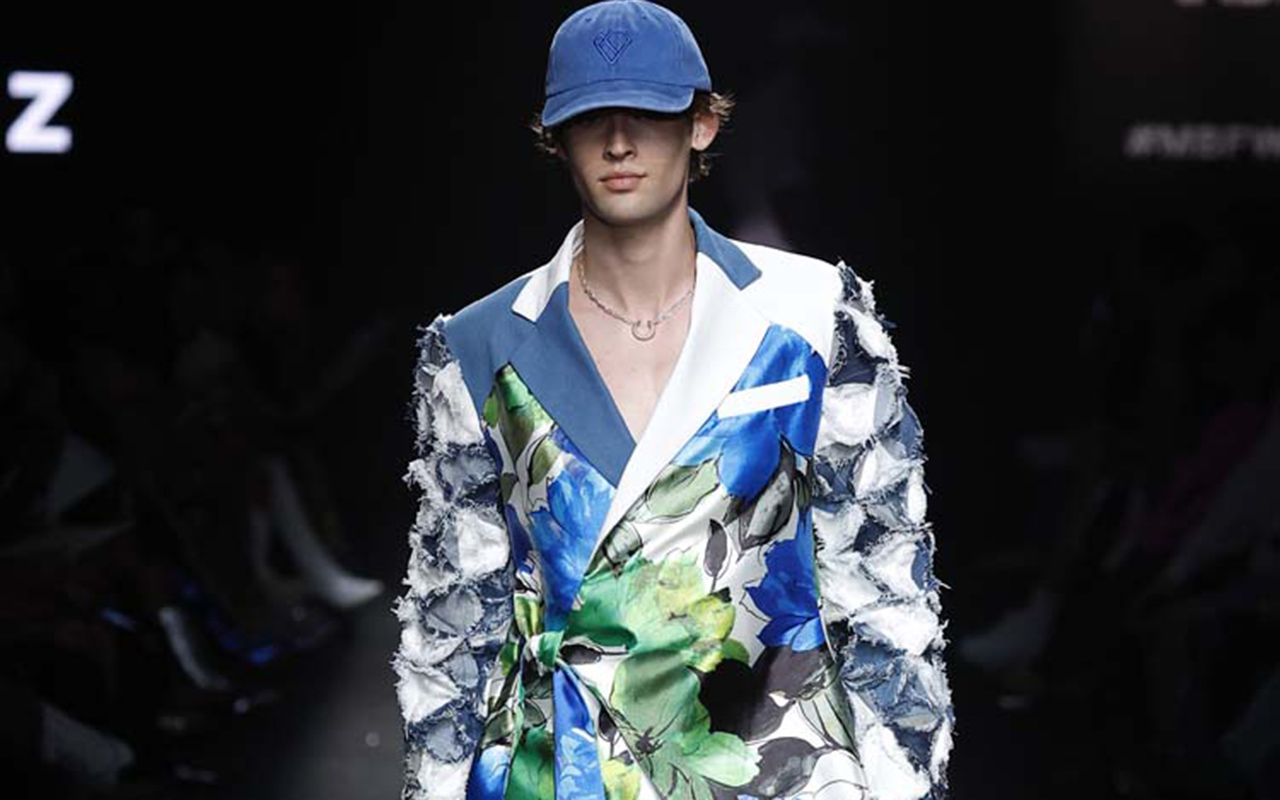
Paloma Suarez
Paloma Suárez presented her new collection ‘ Glow Up’ for the next summer season, starting from a premise that the Canarian creative frequently addresses: ‘What would you say to your past self?’. With the aim of achieving the best version of herself, the designer, considered one of the great promises of Spanish fashion, has evolved her aesthetic codes, giving them a new interpretation. The proposal represents a reflection on the past to gradually narrate the personal and creative growth of Paloma Suárez that has taken her to the present. The collection highlights the incorporation of soft colours and midi- length garments, maintaining the prominence of the colours and textures that are so characteristic of the brand and that have become its hallmark.
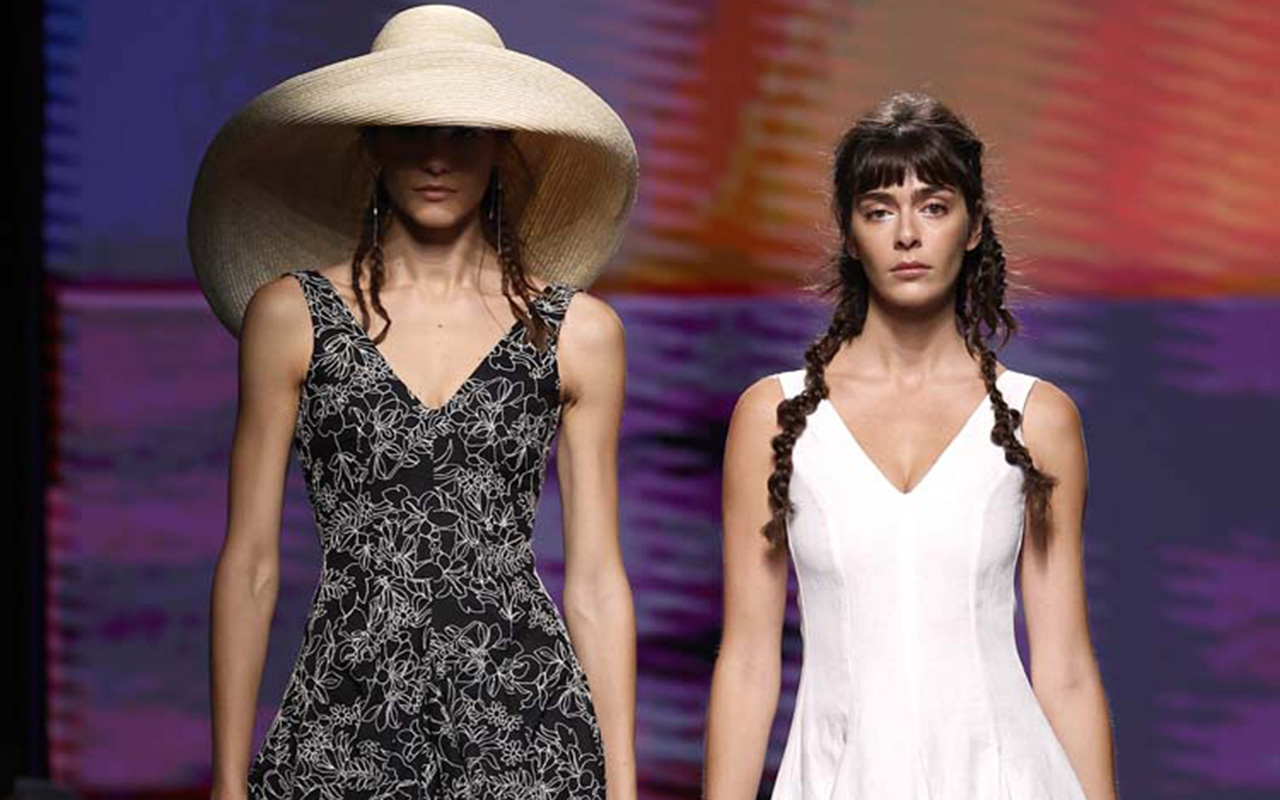
Ynes Suelves
Finally, María Osorio and Ynés Suelves , mother and daughter, reflect the magical union between fashion and painting. In its new collection, the brand has explored textiles to the maximum, focusing on the movement of its garments and seeking to transmit emotions through colour. In this collection for next summer, the Spanish brand has opted for a more feminine silhouette than ever and has been characterized by a rich variety of textures. Unlike other occasions, this collection is full of different fabrics and prints.
Pics: Mercedes Benz Fashion Week Madrid
Viernes 15 septiembre 2023
Sorry, this entry is only available in European Spanish.
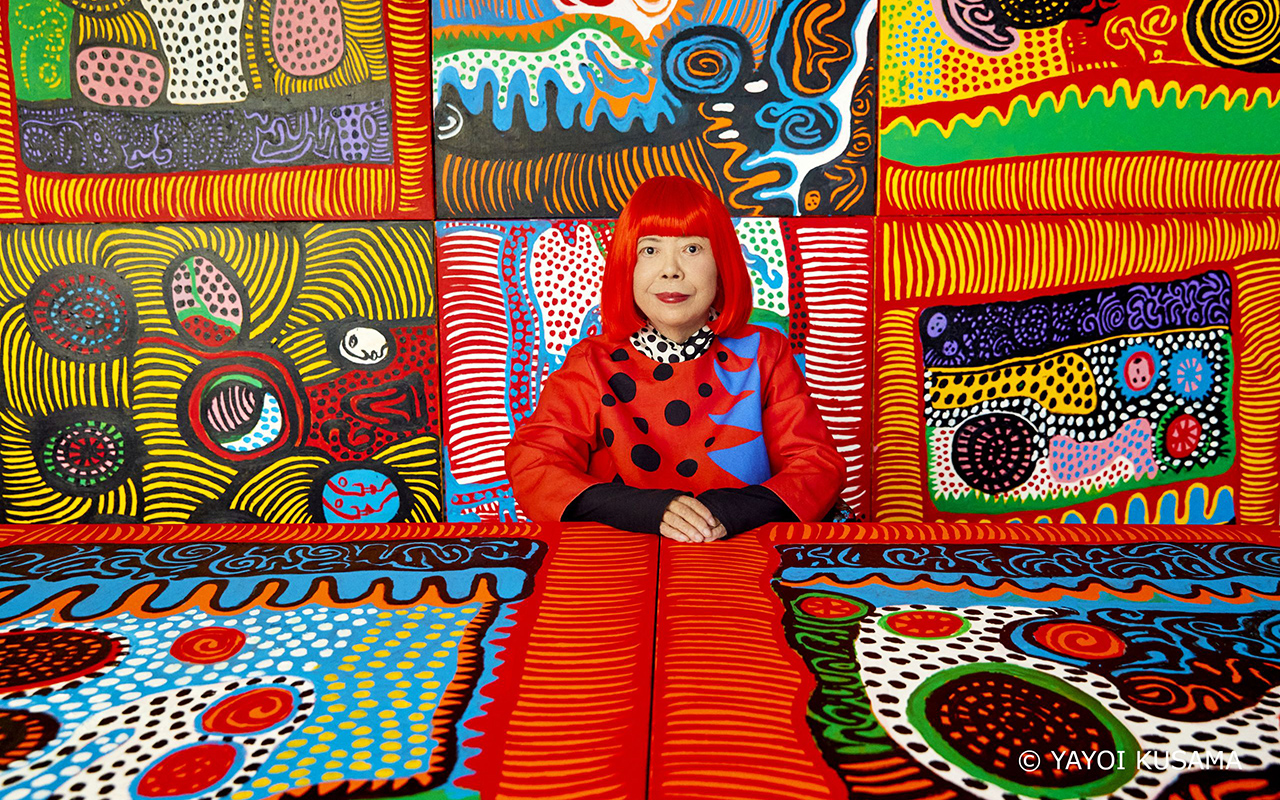
Portrait of Yayoi Kusama. Courtesy of Ota Fine Arts, Victoria Miro, and David Zwirner © YAYOI KUSAMA. Photo: Yusuke Miyazaki.
She is considered a living legend, a revolutionary who has stood out in multiple artistic movements from the 1960s to the present, an admired visual artist capable of connecting art with fashion through her unique universes, full of geometries. Or rather polka dots, her most identifying feature. Yayoi Kusama (Matsumoto, Nagano, 1929), yes the flesh and blood one -and not the hyper-realistic robotic figure that Louis Vuitton made for her in her latest collaboration with the brand- is the absolute protagonist of one of the most visited exhibitions in the Bilbao Guggenheim . Turned into a true global cultural icon, in the last seven decades, Yayoi Kusama has devoted herself to her avant-garde vision with conviction, perfecting her aesthetic vision, which is a faithful reflection of her philosophy of life. As the artist herself usually says: “What does it mean to live a life? I get lost in this thought every time I create a work of art.
This exhibition goes beyond a simple overview of her career. It seeks to focus on the existential questions that drive the creative explorations of the Japanese artist and writer. Through her paintings, drawings, sculptures, installations, and documentary material on her performances, the show offers an in-depth analysis of her practice, from her first drawings as a teenager during World War II to her latest immersive mirror installations.
Organized according to chronological and thematic criteria, Yayoi Kusama : from 1945 to today addresses the six key themes that run through the artist’s life: ‘Infinity’, ‘Accumulation’, ‘Radical Connectivity’, ‘The Biocosmic’, ‘Death’ and ‘ The energy of life’. These interrelated themes appear and evolve within the obsessive universe of Kusama, who has been agitating the art scene and society for decades in favour of the “healing of all humanity”.
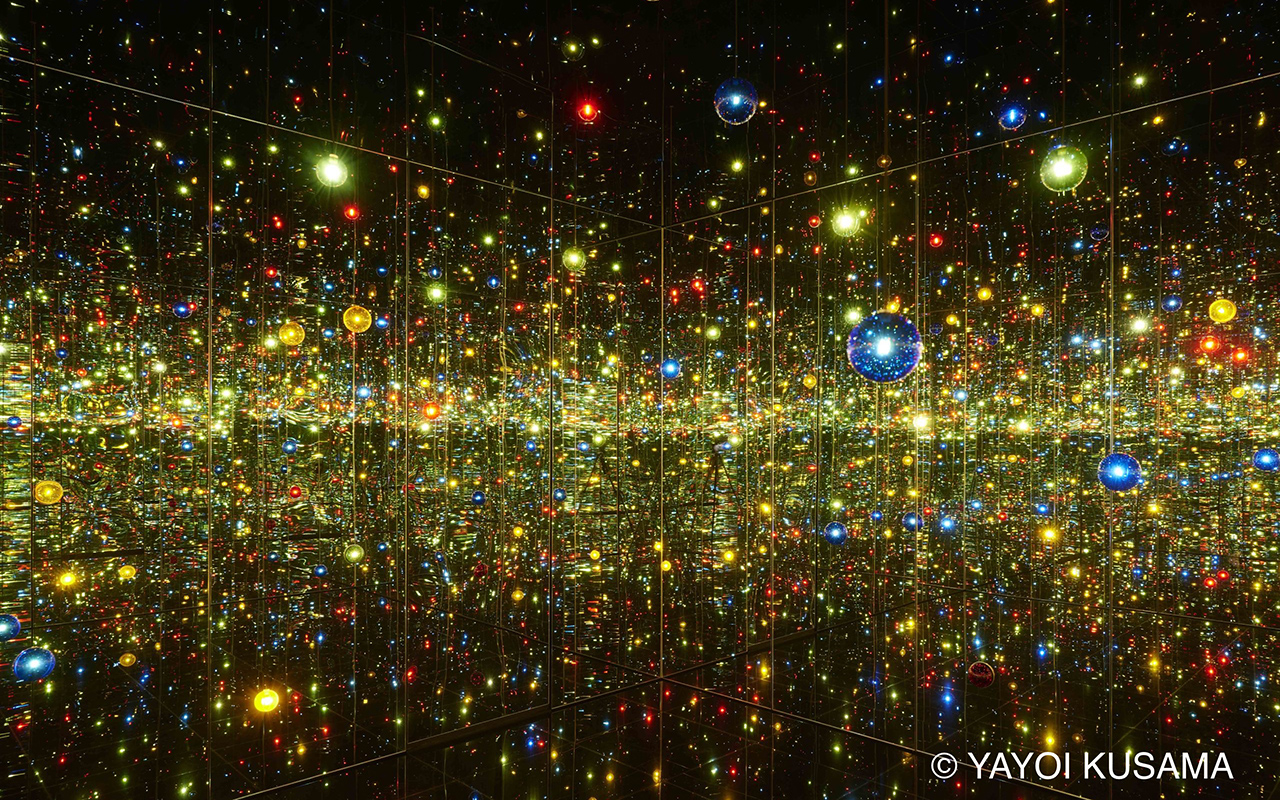
Yayoi Kusama. Infinity Mirrored Room – A Wish for Human Happiness Calling from Beyond the Universe, 2020. Mirrors, wood, LED lighting system, metal, acrylic panel. 293.7 × 417 × 417 cm. © YAYOI KUSAMA. Courtesy of Ota Fine Arts.
Some keys to understand Yayoi Kusama
Self portrait
Kusama ‘s work is based on self-affirmation , self-destruction , self-promotion , self-invention , self-referential and self-portrait, even in those creations where the representation of her own image is less explicit. This room brings together some of the paintings and drawings made by Kusama within the genre of the self-portrait, which occupies a prominent place in her production.
This section begins with Self-Portrait (1950), a dark painting in which a flesh-pink sunflower floats above a human mouth, and is one of the first works to be given that title; The space is presided over by her Portrait (2015), in which Kusama arranges some of her characteristic motifs —polka dots, pumpkins, nets and tentacular shapes— in a composition constructed as a collage and dominated by a hieratic figure.
Infinite
Kusama grew up in a seed nursery surrounded by vast fields of flowers. However, in 1957 while flying over the Pacific on her first flight to the US, the sight of the ocean inspired her well-known paintings of Infinity Webs. In this series, the canvases are obsessively covered in tiny arcs painted in one swift gesture, creating an expressionist pattern of interconnected dots and webs. The free brushstroke contrasts with the reiteration of the motif, which makes it impossible to identify the beginning and end of this universe without hierarchies, whose dimensions were expanding within Kusama ‘s production until the public was immersed in the infinity of her installations.
Accumulation
Kusama ‘s art , the concept of accumulation is not simply an obsessive-compulsive tendency, nor an innate desire for repetition, but can be interpreted as a desire for expansion driven by the artist’s need to broaden her creative vision.
After creating the ‘Infinity Nets’, Kusama developed ‘Accumulation’, a series of collages made with reused fragments of paper and soft sculptures in repetitive forms. In these pieces, an everyday object, such as a chair, is transformed by accumulating on it a large number of phallic and tubular shapes of stuffed and sewn fabric, which make the object itself and its function disappear. Little by little, the compulsive desire to multiply these soft shapes led Kusama to expand her vision to the mirrored rooms of infinity, which she began in 1965, and to the silver or patterned fabrics she made during the 1970s and 1980s, such as ‘Accumulation de manos’, where a sofa and chairs are covered in hundreds of silver gloves
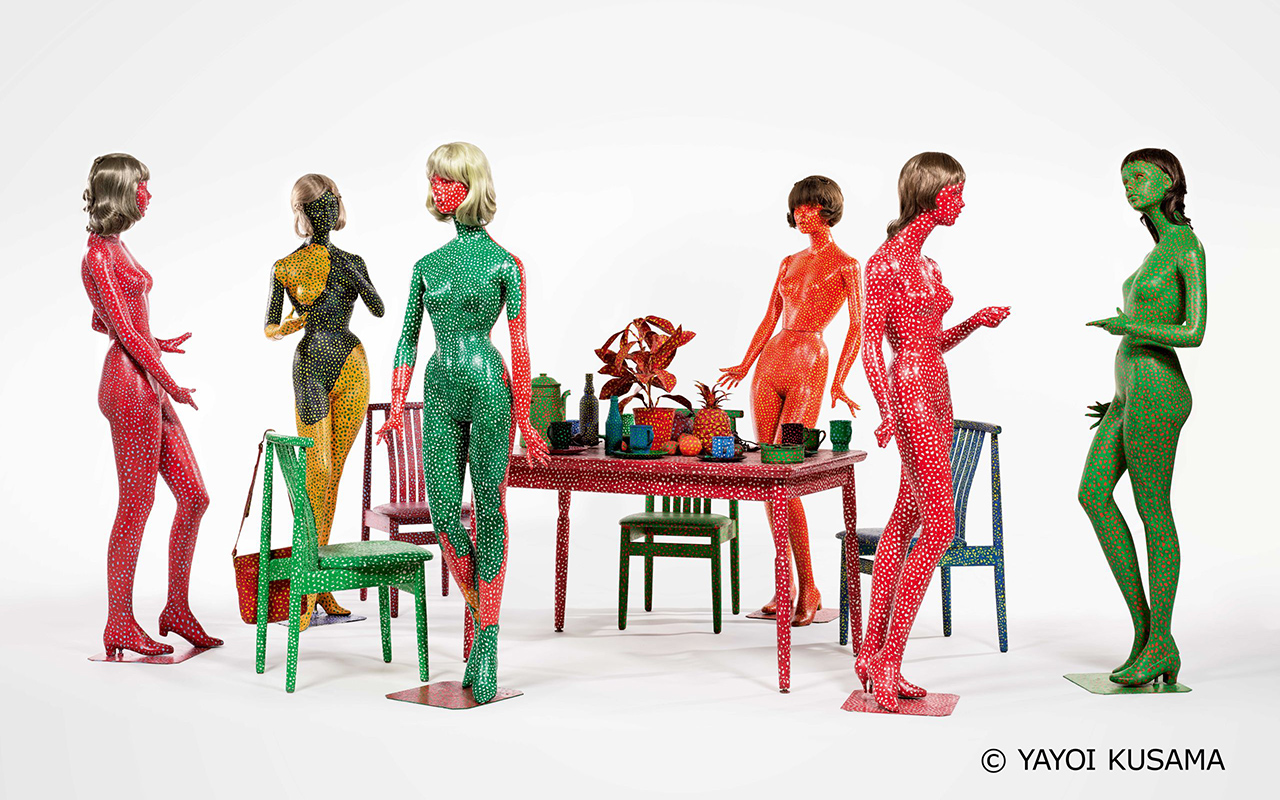
Yayoi Kusama. Self-Obliteration (Auto-obliteración), 1966–1974. Painting on mannequins, table, chairs, wigs, handbag, cups, plates, ashtray, pitcher, plastic plants, plastic flowers, plastic fruits. Variable dimensions. M+, Hong Kong. © YAYOI KUSAMA
Radical connectivity
In the late 1960s, the struggle for civil rights and the war in Vietnam generated a counterculture atmosphere in which Kusama developed a practice centered on public action and performance. The artist denounces race and gender stereotypes, criticizes the warmongering US policy and attracts the attention of the media with her provocative happenings, especially those featuring naked bodies covered with polka dots, which are acts of “self-obliteration”.
Kusama ‘s philosophy , which represents the liberation of the self as a form of group healing and deeply connects people, especially those who live on the margins of society. The Japanese artist uses the power of the media to spread her philosophy and intensify her visibility and notoriety.
Biocosmic
Where does your obsession with polka dots come from? Yayoi Kusama gives us the answer: “Our earth is just a mole among the millions of stars in the cosmos. Polka dots are a path to infinity. We erase nature and our bodies with polka dots, we integrate into the unity of our environment.”
Her childhood near her family’s plant nursery made the Japanese artist feel a deep bond with organic life, which the artist considers to be connected to the dimension and space of the cosmos. ‘Lo Biocósmico ‘ expresses her belief that the earthly and the heavenly are the same. As a child, she begins to observe the anatomy of plants, their life cycles, and the union between heaven and earth. Perhaps the most consistent image of the biocosmic in her work is that of her distinctive gourds, with whimsically undulating and mottled surfaces, which Kusama identifies as a benevolent plant spirit and reflection of her own soul. Her stance towards nature illustrates how Kusama expresses her alienation from the world and her expansive need to commune with the cosmos.
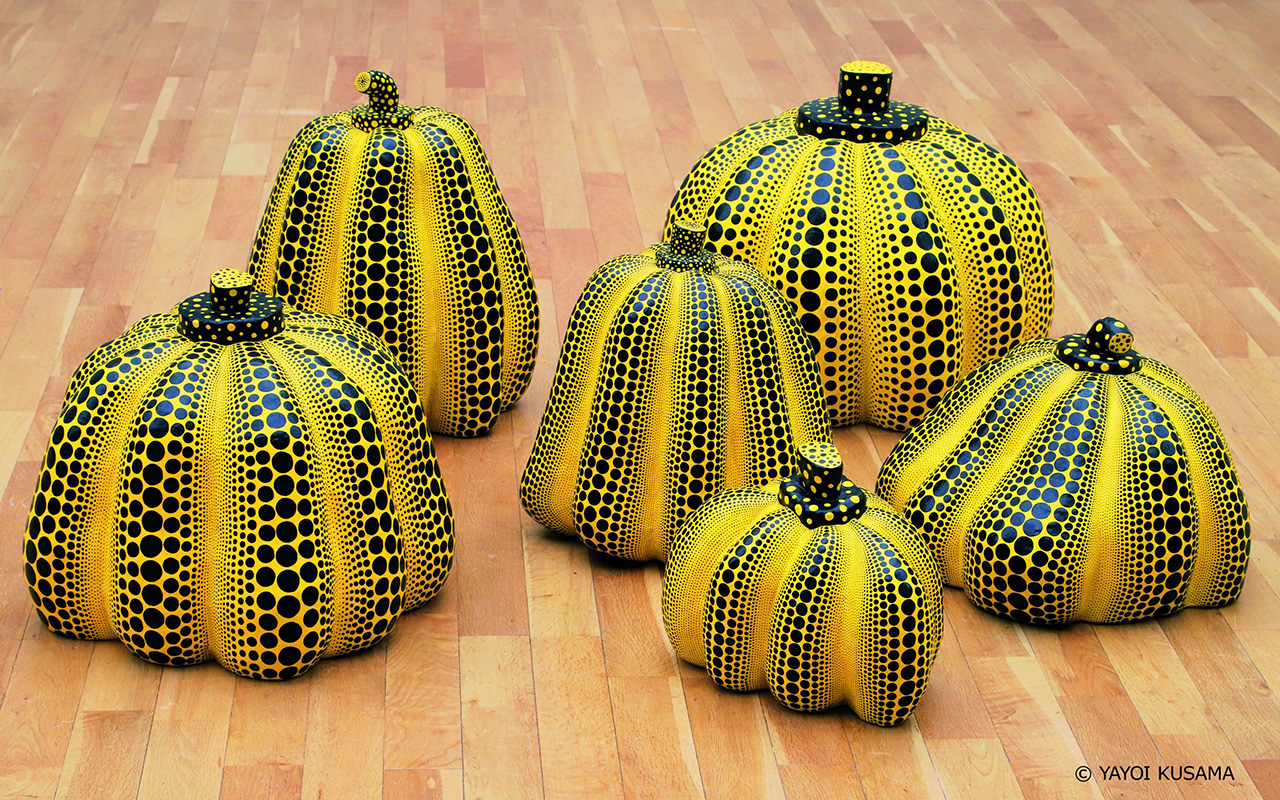
Yayoi Kusama. Pumpkins, 1998–2000. Mixed media. 6 pieces, variable dimensions. © YAYOI KUSAMA
Death
““What death means, its colours and its special beauty, the stillness of its footsteps and the ‘nothing’ after death. Now I am in a phase in which I create art for the rest of my soul, accepting all this”, says Kusama at the exhibition at the Guggenheim in Bilbao.
Kusama ‘s work is constantly on the threshold between life and death. A childhood surrounded by the ephemeral existence of plants in the family nursery, adolescence marked by the war and its consequences, and especially the death of her father and her close friend Joseph Cornell in the mid-seventies, led the artist to consider that death is not the end point, but another phase of existence that can give rise to a new one. Sometimes in her creative struggle and in despair, Kusama yearns to be free of what she describes as the “languorous weight of life.” However, through her artistic and literary practice, she transforms that desire into a kind of therapeutic fantasy, into a spiritual reward in the “solemn beauty” of death and in the loss of the ego as a return to eternity.
The force of live
Kusama ‘s art and psyche underwent a major change. With the arrival of the long-awaited and well-deserved public recognition, both from her international exhibitions and from her publications, praised in avant-garde literary circles, the healing power of art and the celebration of life become the central themes of her production. As she stated in 1999, Kusama came to believe that her role was to transform her suffering through art “for the healing of all humanity.” In the new millennium, the Japanese artist wants to amplify this message. For this reason, the colourful paintings and sculptures from one of her latest series, My Eternal Soul (2009–) and I Pray Every Day for Love (2021–today), perhaps represent the culmination of this commitment
The exhibition “Yayoi Kusama : from 1945 to today” will remain open to the public until October 8.
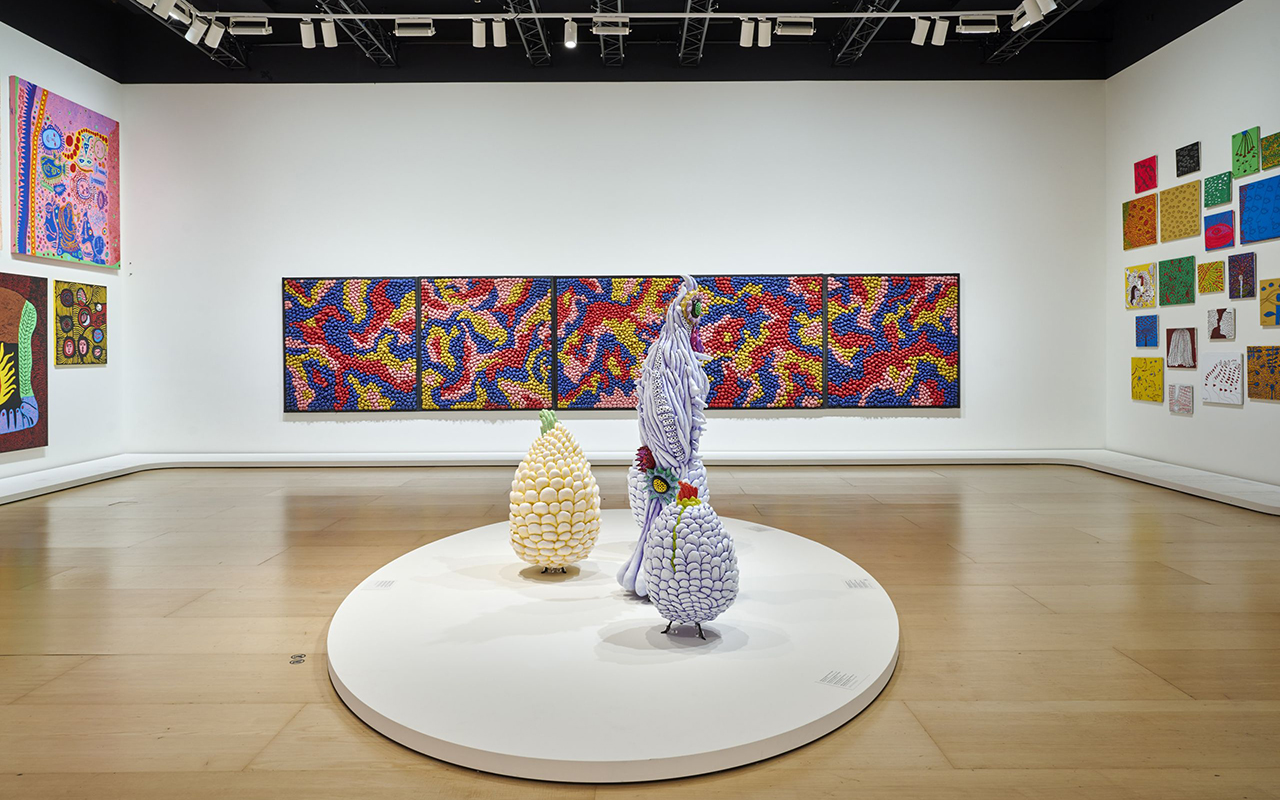
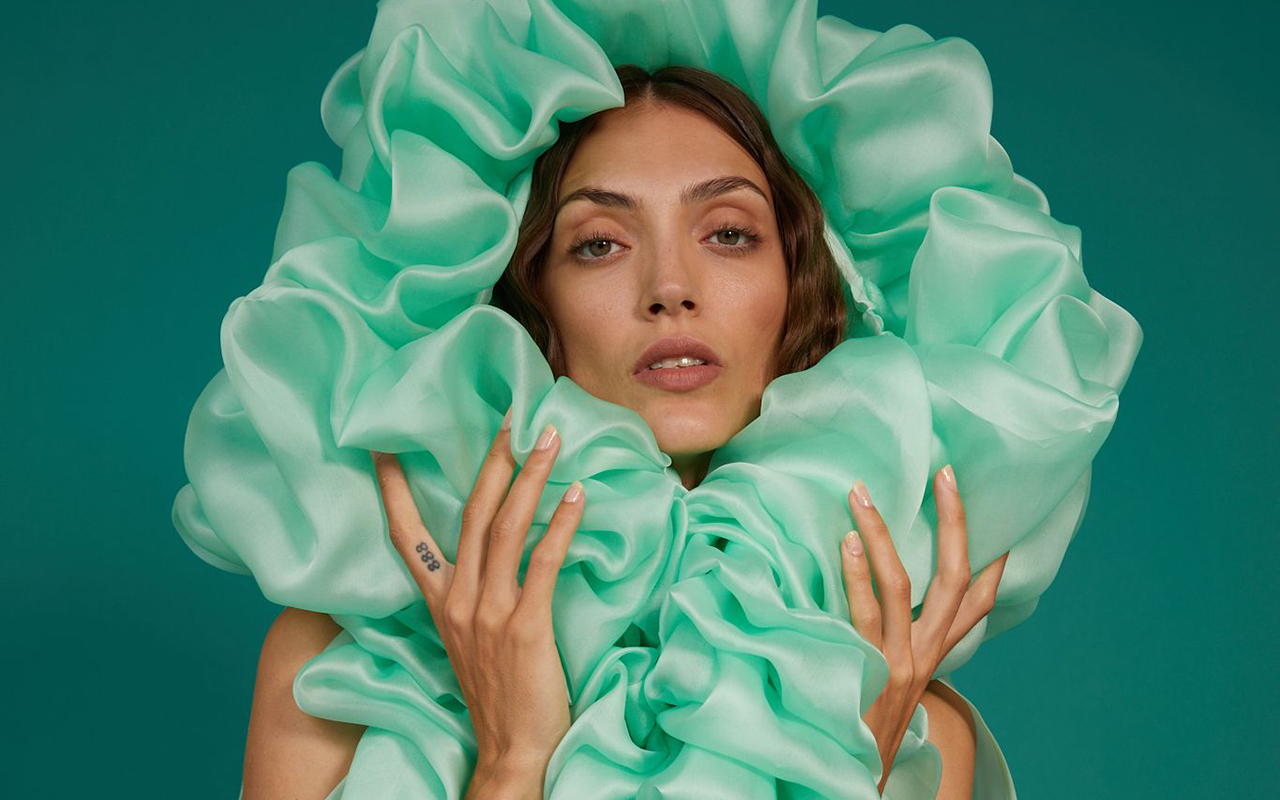 Neus Bermejo in an aquamarine dress by designer Mariano Moreno. Photo: Courtesy of Mariano Moreno
Neus Bermejo in an aquamarine dress by designer Mariano Moreno. Photo: Courtesy of Mariano Moreno
No one doubts that the colour of the year is Barbie pink, a more striking transformation of the Millennial pink we’ve been seeing in the past decade. It resembles bubblegum pink or plastic pink, all of which have more artificial undertones. However, beyond the fuchsia and soft pink that dominate the Barbiecore trend, other colours are emerging this season. One of them is aqua green, which captivates with its discreet charm and its calming and refreshing nature.
Aqua green, also known as blue-green or aquamarine, immerses us in the fascinating transparent, warm and shallow waters, evoking emotions and transmitting subtle messages associated with summer. Paradisiacal tropical beaches, lagoons surrounded by nature and river beds with crystal clear waters are some of the images that come to mind when contemplating this pure tonality. It is perfect for the summer, since it is closely linked to the sea and nature.
The name makes the thing
This colour gets its name from the gemstone that represents it, aquamarine. A gem characterized by its beautiful light bluish-green hue. The term “aquamarine” comes from the Latin “aqua marina”, which means “sea water” to poetically evoke the sparkles and transparency of water.
Since ancient times, the colour aquamarine has been appreciated for its beauty and its connection to aquatic nature. The ancient Romans attributed protective and healing powers to this stone. Also, in the Christian tradition, aquamarine was associated with purity and innocence. Over the centuries, it has been used in jewelry, especially gemstones, but also in ceramics and ornamentation in different cultures, from the ancient Egyptians to the Native Americans.
Psychological and sensory properties
On a sensory level, aquamarine is a refreshing and calming hue for the eyes. It has a luminous, translucent quality that evokes feelings of serenity and freshness. Not surprisingly, this hue is associated with peace, clarity of mind, and harmony—valuable traits in fashion, advertising, and interior design when seeking to create a serene and welcoming environment. Also, their presence can stimulate creativity and promote a sense of relaxation.
This colour is also attributed qualities that encourage emotional openness and the ability to express yourself. Its soft and luminous hue makes it a popular choice for those who want to convey a fresh, sophisticated and elegant image. In addition, it is related to youth, since its shades instill confidence and magic, making people feel renewed both inside and out, with positive energy.
A notable example of a brand that has embraced aquamarine in its identity is Tiffany&Co. Its iconic shade of aquamarine blue is used in its packaging and presentation, providing a duality between elegance and carefree freshness. Likewise, the renowned sportswear brand Nike has incorporated the aquamarine color into its latest collections of sports footwear and clothing, providing a fresh and energetic look to its products.
Without being essential, it stands out
Let’s not fool ourselves. It’s true that aquamarine hasn’t been a front row colour on the fashion catwalks, at least until now. It is not usually the favourite of the designers and it is not abundant in the collections, since its relaxing nature is incompatible with the frenetic rhythms of the industry. However, it is true that aquamarine is more easily found in spring-summer collections, since it refers to crystal clear waters on sunny days and evokes paradisiacal destinations. In addition, it favours the tanning of the skin as it is a soft tone that gives it prominence.
Despite this, renowned designers have embraced aquamarine in their creations. For example, the Italian designer Roberto Cavalli has used this colour in his prints and haute couture designs, adding a touch of sophistication and freshness. Brands like Versace, Gucci and Carolina Herrera have also incorporated aquamarine into their collections, both in clothing and accessories.
This summer, through the mermaidcore trend, aquamarine has gained more presence. In this sense, the colour of the crystalline waters has been shown in total looks that Max Mara has explored with designs such as retro-style swimsuits, including hats. Fendi has also opted for this hue, combining pants with printed tank tops. For its part, Armani has presented a more subtle proposal, with a strapless dress combined with trousers.
Although aquamarine may not be the usual star in fashion, we cannot deny its charm and versatility. Its presence in the collections of renowned designers and its association with freshness and sophistication make it an attractive and elegant colour.
From Gratacós, we join the charm of the aquamarine colour. In our online store, we offer a selection of seasonal fabrics dyed with this refreshing colour, which brings vitality and sophistication. When we enjoy our well-deserved vacation, we will see life with a touch of aquamarine colour.
Pics: The 2nd Skin y Max Mara
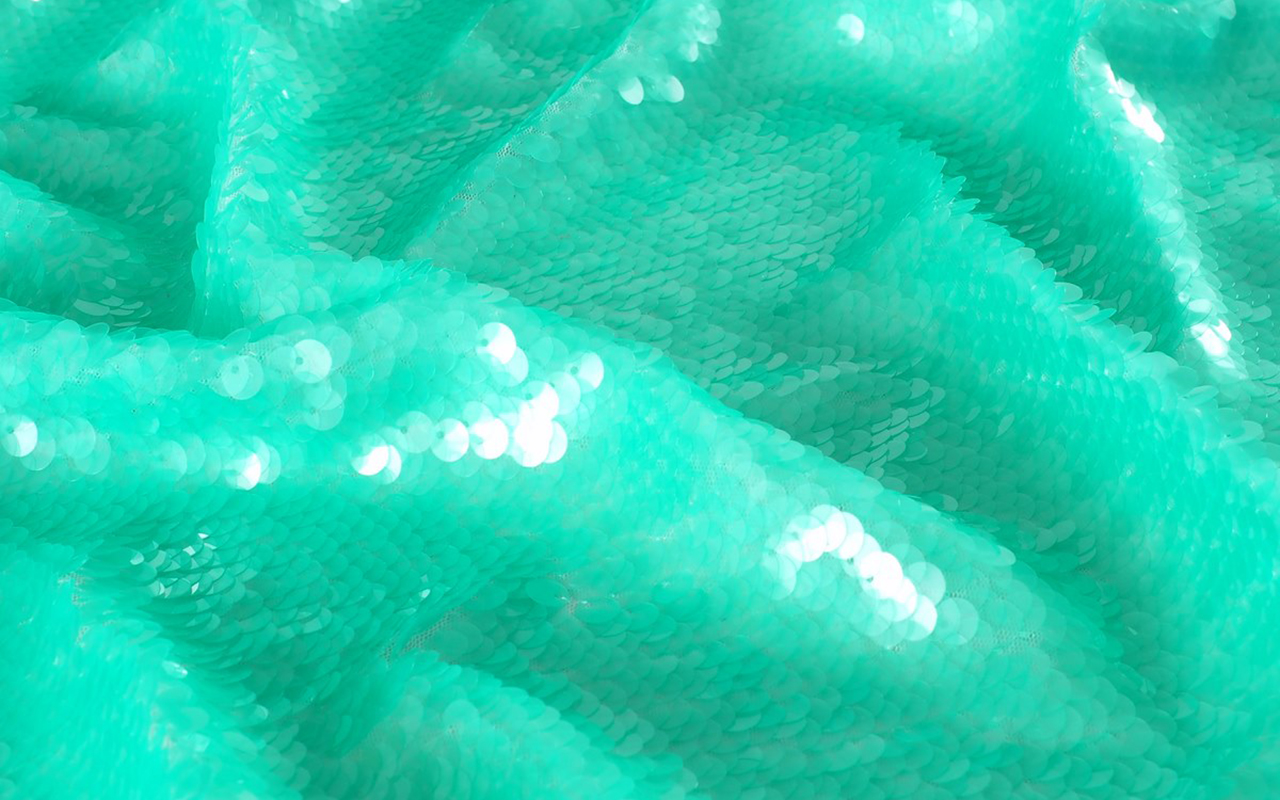
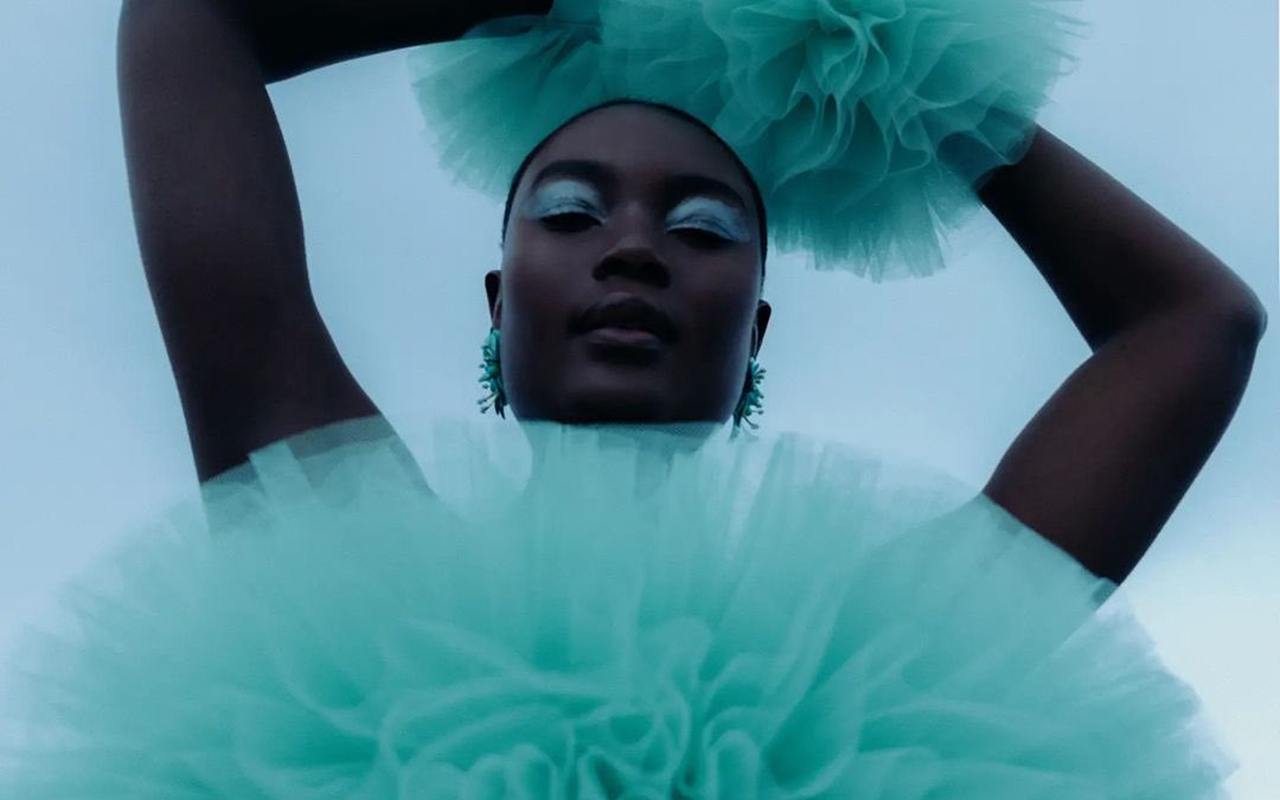
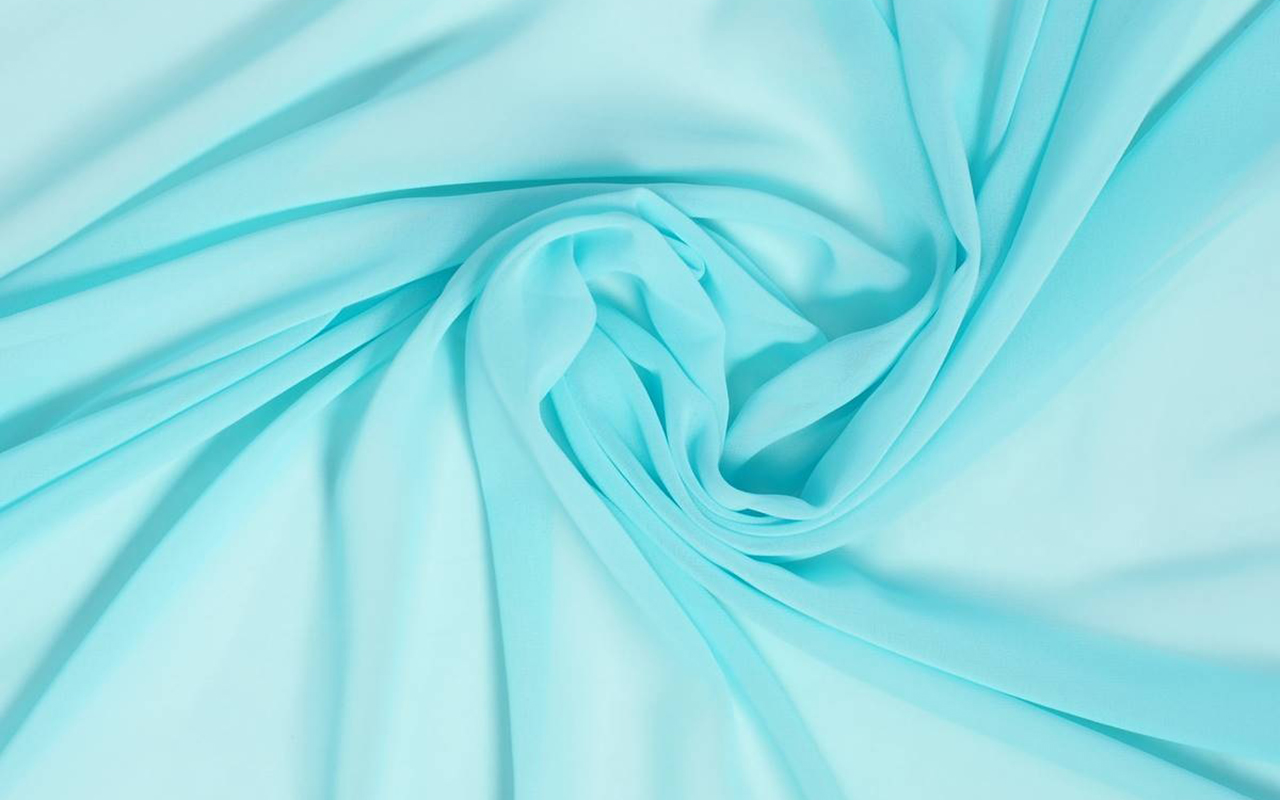
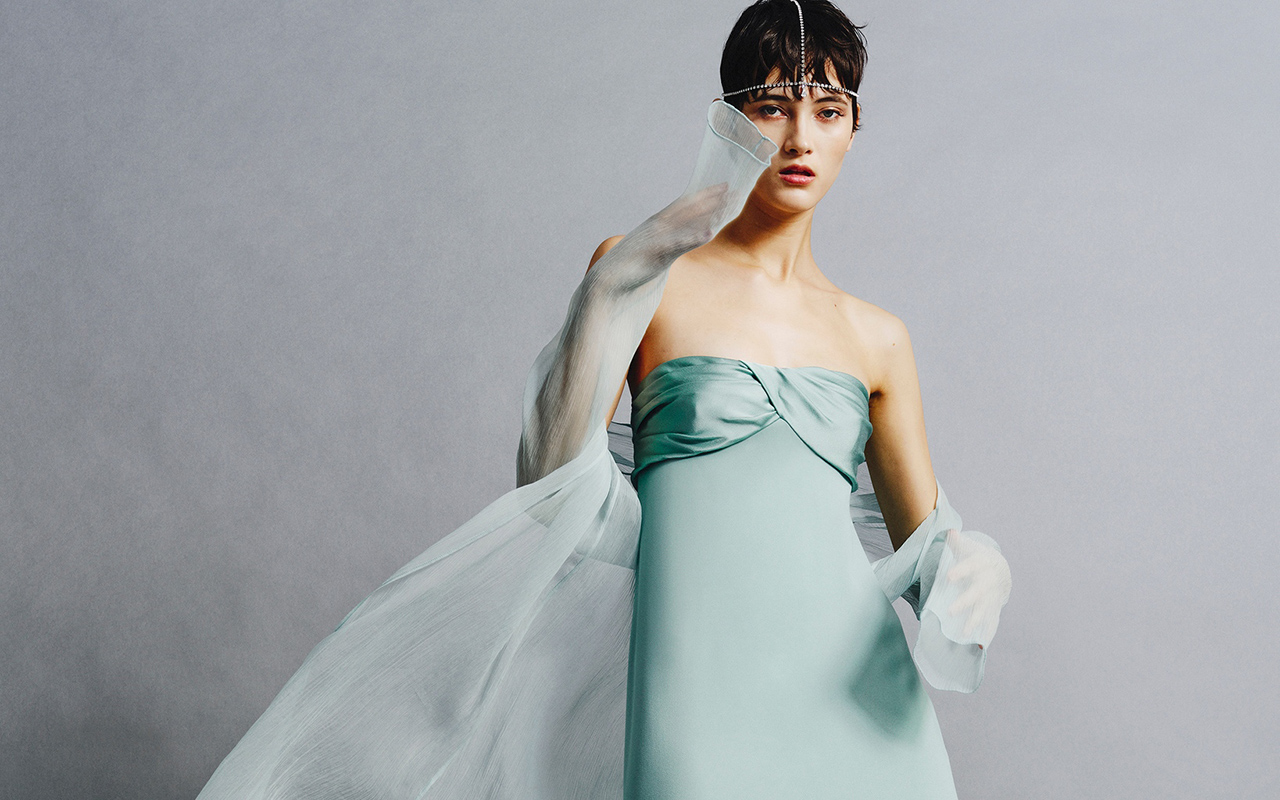
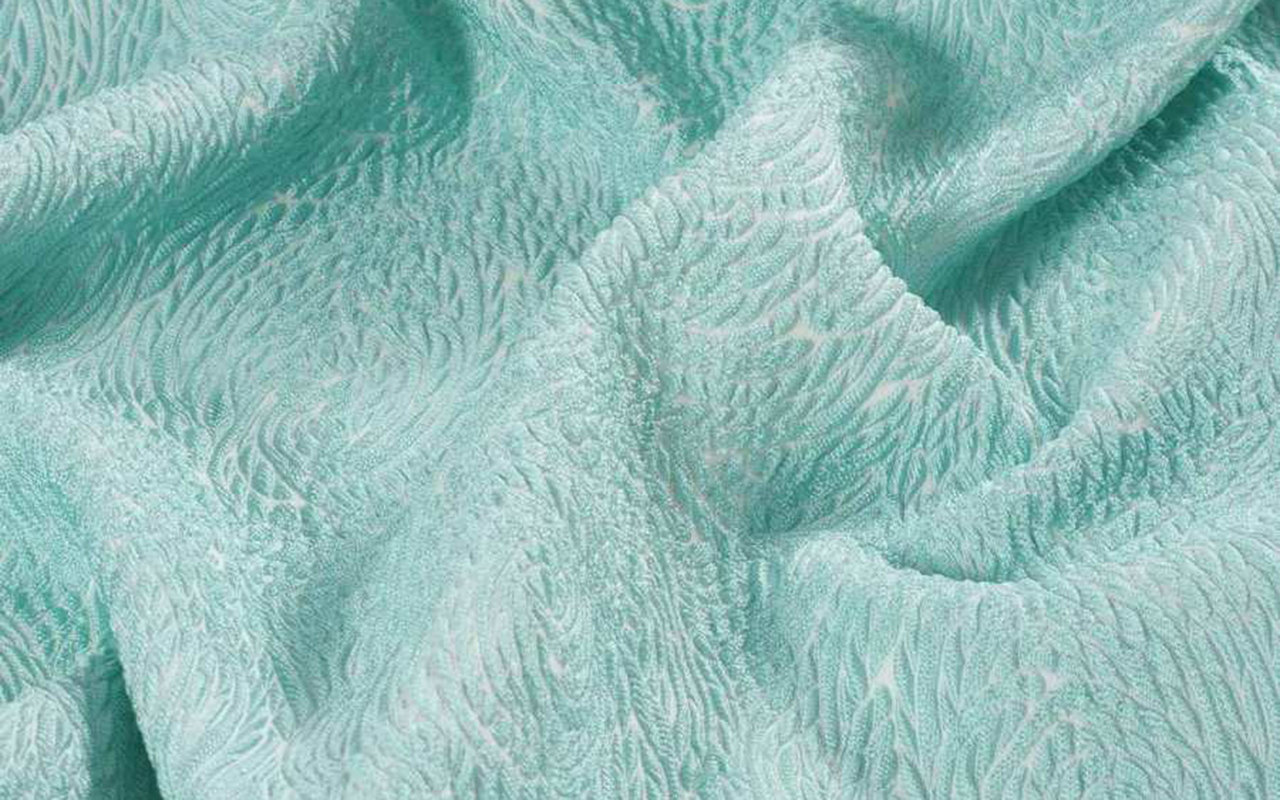
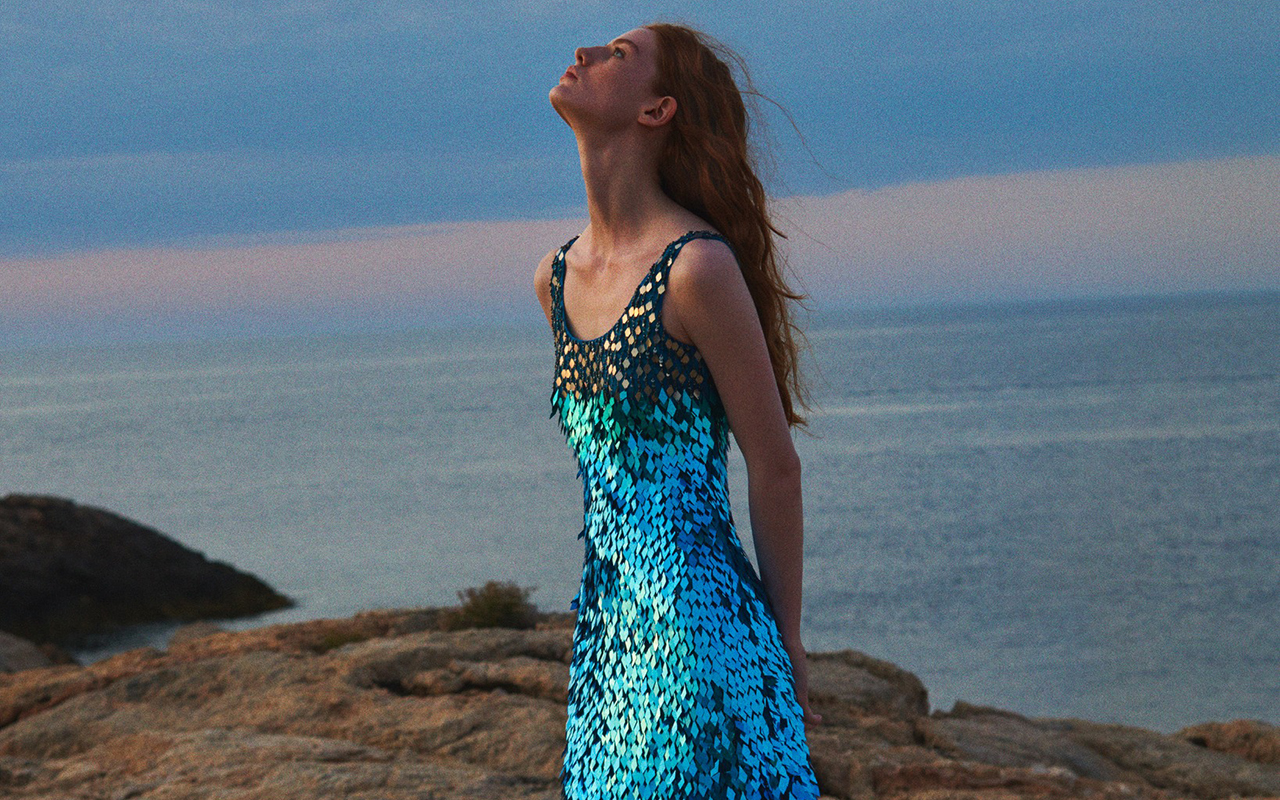
The Little Mermaid is all the rage, pardon the Barbie doll and her barbicore style. And not only its long-awaited remake, released on May 26 in theatres, has won a legion of fans among both children and adults. Now, the aesthetics of these mythological creatures have also seduced the fashion industry, which surprises with the most popular trend of the summer: the mermaidcore with designs that transport us to the depths of the ocean.
The catwalks speak
Fashion’s interest in reflecting the fascinating underwater world is not new. In fact, French designer Marcel Rochas is credited with creating the mermaid silhouette in the 1930s, which was later popularized in fashion circles by Jean Patou. His dress inspired by the aquatic world was published in an edition of Vogue magazine in 1933. Since then, the mermaid style has evolved in various ways and today, designers such as Bottega Veneta or Bluemarine have reinterpreted the image of this mythological creature offering their own vision with clothes that move between the sophistication and the casual.
Investigating more into the current collections we see that the big brands continue to explore the collective imagination of mermaids. For example, for her Resort 2023 collection, Alberta Ferretti gave a very marked nod to these marine creatures by closing her collection with evening outfits full of iridescent blue sequins. In a similar line, Gucci also revealed a striking sparkly dress in green tones and a flowing silhouette, which already predicted the new rise of the trend. Or Tom Ford with a festive collection full of sequins and colours of the sea, like the cut-out design in silver and green that Gigi Hadid wore in a style with curly hair.
The curious thing is that everything suggests that the mermaidcore trend is going to extend throughout 2023 until it permeates the next seasons. Far from being forgotten, in autumn, clothes with the effect of scales and skirts in the shape of a mermaid tail also mark the design of Bottega Veneta. As well as Roberto Cavalli ‘s evening gowns, whose catwalk models sported wavy hairstyles with a subtle wet look and smoky eye makeup. And in 2024, the Resort collections continue to rescue this aquatic environment, as has already been seen in Louis Vuitton with sequined skirts that create optical illusions.
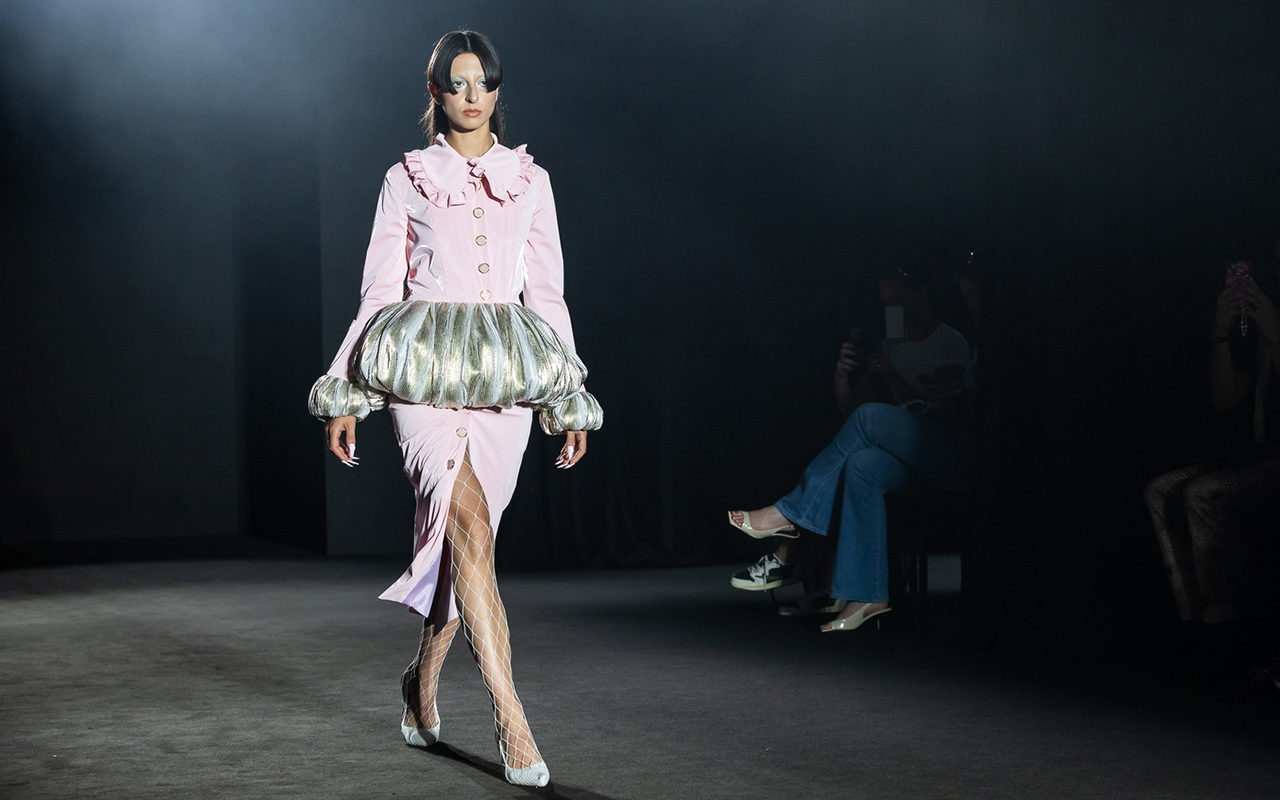
Mermaid designs made in Spain
This global trend also influences Spanish designers. Many of them have proposed creations that are inspired by the shapes of the marine world and follow this mermaidcore aesthetic code. In the last edition of 080 Barcelona Fashion, Anel Yaos presented a collection of an intimate nature that plunges into the seabed to present its hallmarks, marked by romanticism, fantasy and the naïve in pieces of clothing that do not distinguish genders. “Beings without names or appearance, intangible creatures, aquatic myths have been with me since I was a child, arousing in me feelings that range from tranquility to fear, and remind me that I am not alone,” he said backstage at the Catalan catwalk. The ‘Deep 23’ proposal reflects the fluidity of light fabrics such as silk, chiffon and cotton, contrasting with the forcefulness of velvet and neoprene, through a fascinating combination of prints and colours that fit harmoniously with each other.
The Sevillian designer investigates new materials such as latex and towels, and continues focusing on upcycling of bedspreads, vintage buttons and elements that evoke the ocean, such as fishing nets and shells. Furthermore, ruffles, 3D flowers and lace overlays take centre stage. The colour palette of the proposal flows between pastel tones and other more intense ones, such as moss green and black.
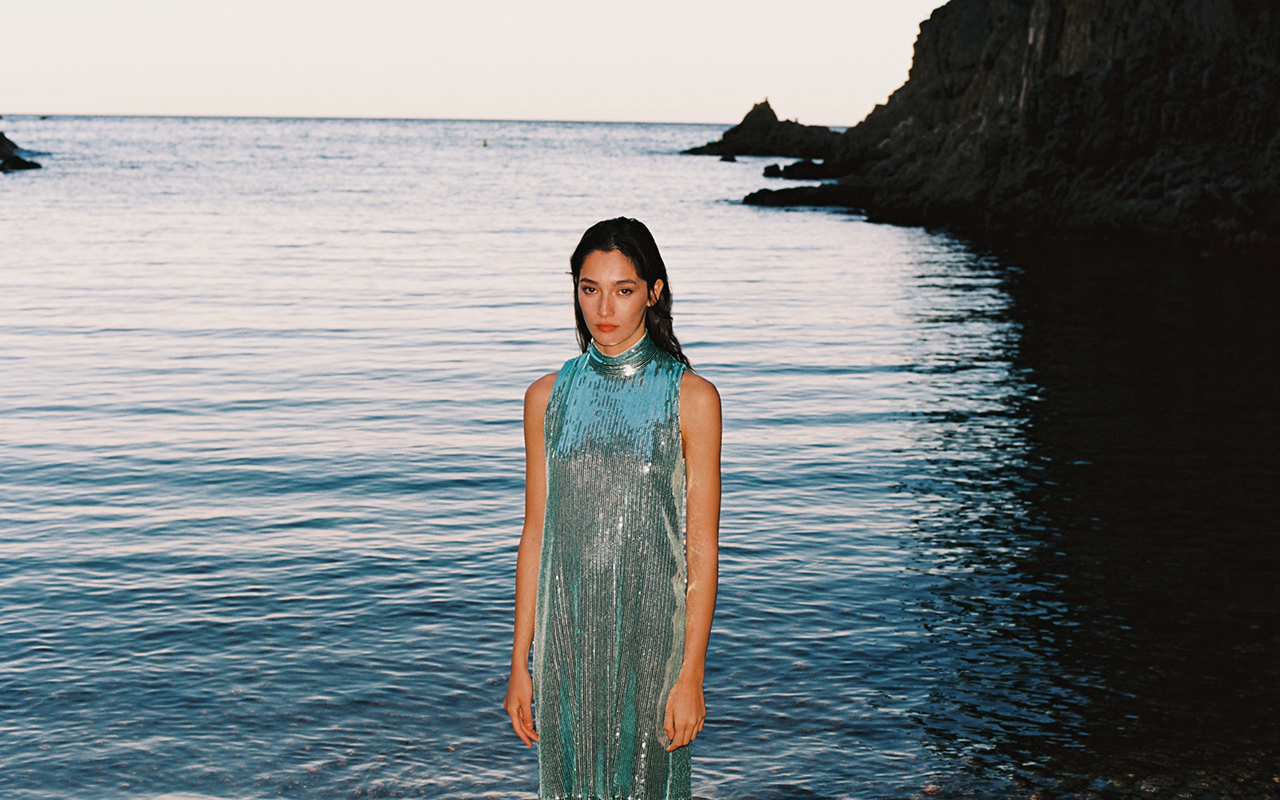
Another brand that explores sensuality with feminine proposals loaded with transparencies, sequins, iridescence and lace is Eiko Ai, led by the Barcelona designer Glò Lladó. The firm immerses itself in dreamlike proposals that are inspired by the ephemeral beauty of natural landscapes. According to Lladó, “on this occasion her inspiration lies in the movement of water and marine fauna, such as jellyfish”. With her ‘Underwater Life’ collection, Eiko Ai seeks to establish a connection with aquatic nature through elements such as plants, animals and other organisms, as well as fantastic beings that inhabit the oceans.
To achieve this, the Barcelona firm uses transparencies that allow light to pass through, soft satins in bright tones, ruffles, volumes and vaporous and ethereal fabrics that capture the movement of the waves of the sea. In addition, the pearly tones present in her garments emulate the scales of mermaids, thus completing the marine inspiration of her collection.
Following the latest trends closely, the large fashion distributors have not wanted to miss the opportunity to keep the aesthetics of these fascinating marine creatures on the crest of the wave. Zara kicked off the new season with an editorial dedicated to modern mermaids, presenting garments that have been best sellers. Among the proposals are sequined tops, satin skirts and a silver dress that enhances the feminine silhouette. In the middle of the sales season, the Inditex flagship continues to bet on mesh fabrics with small jewel inlays and sequins of different sizes in blue and metallic tones.
At Gratacós we also have an assortment of shiny fabrics that could follow the percepts of the mermaidcore trend. Find our most premium sequins here with different sizes, shapes and spectacular multicolour designs.
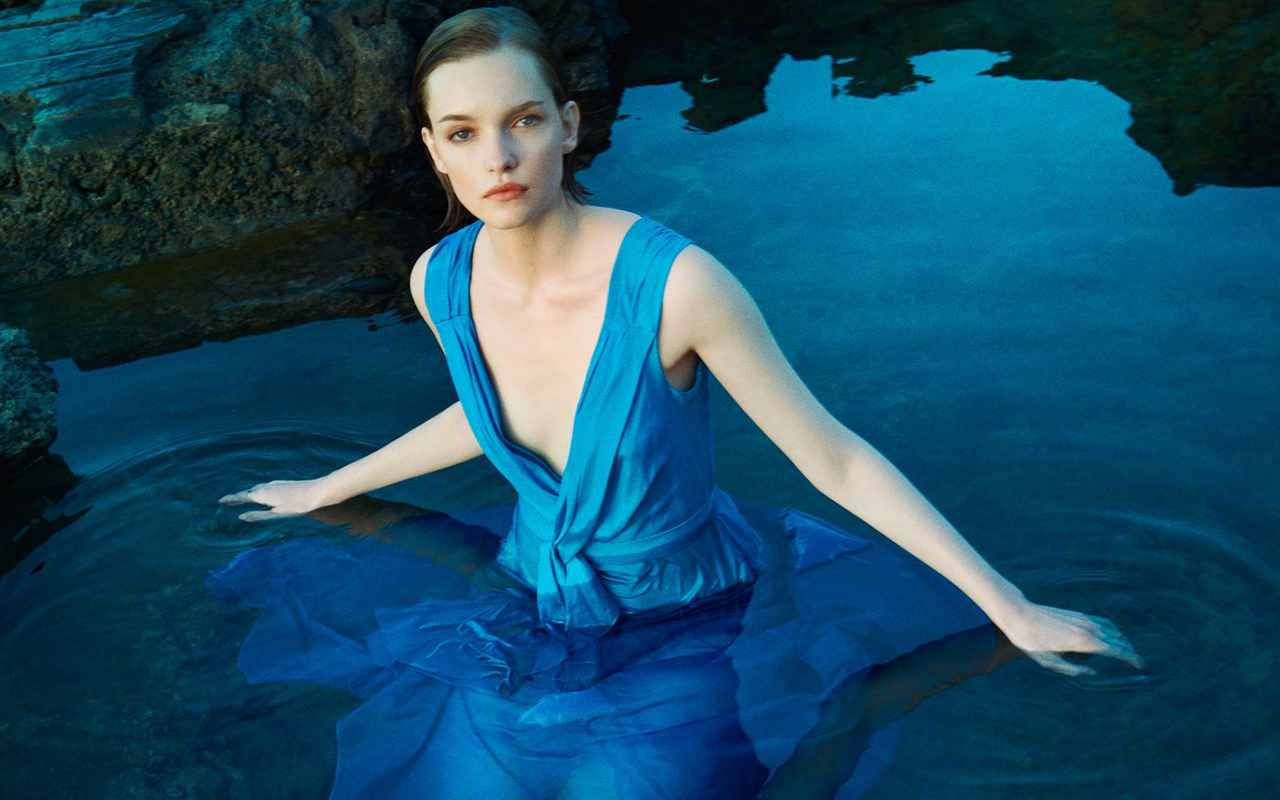
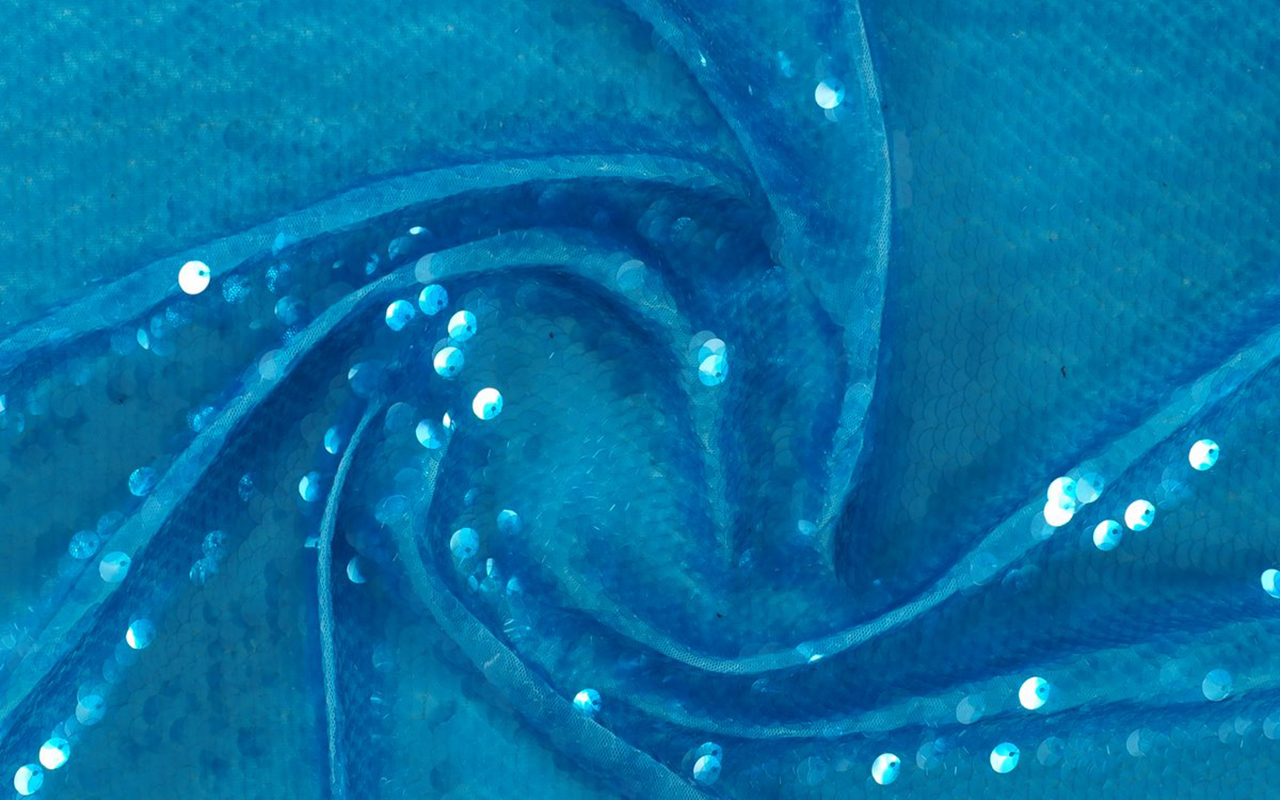
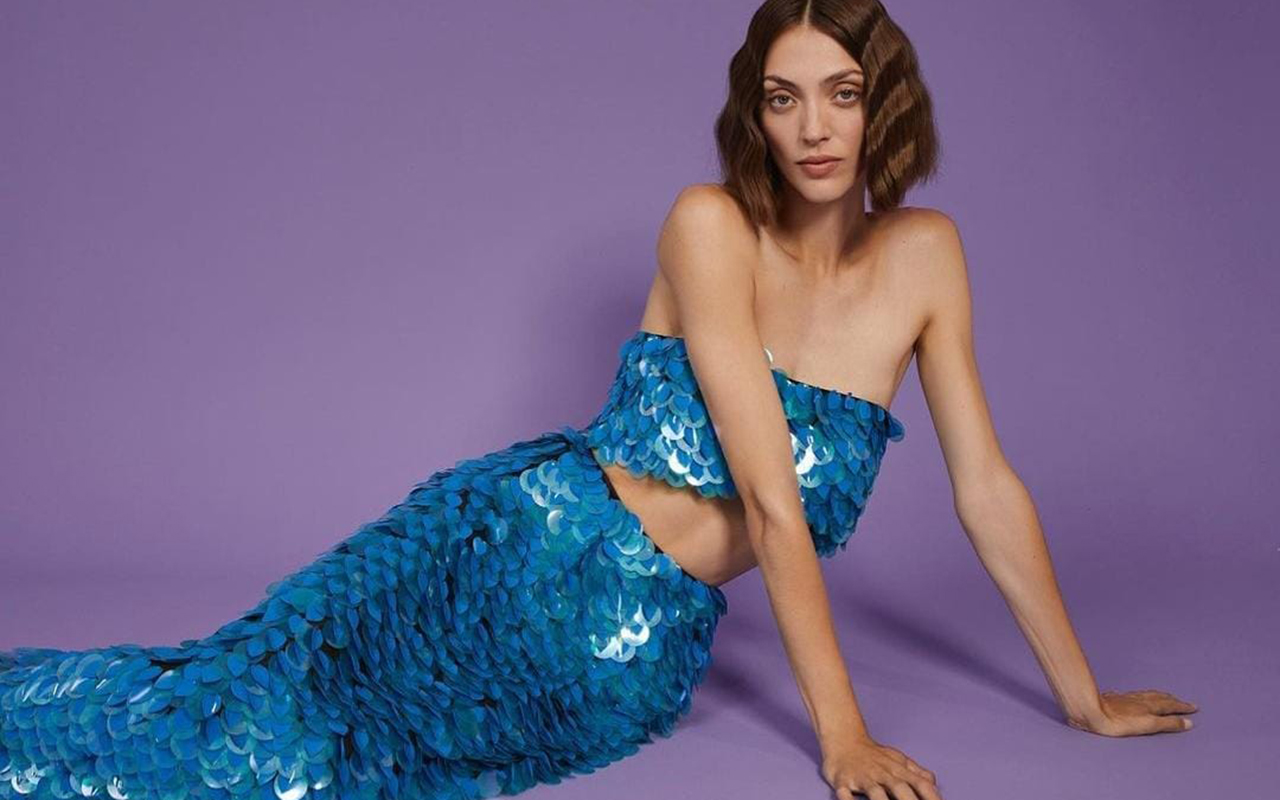
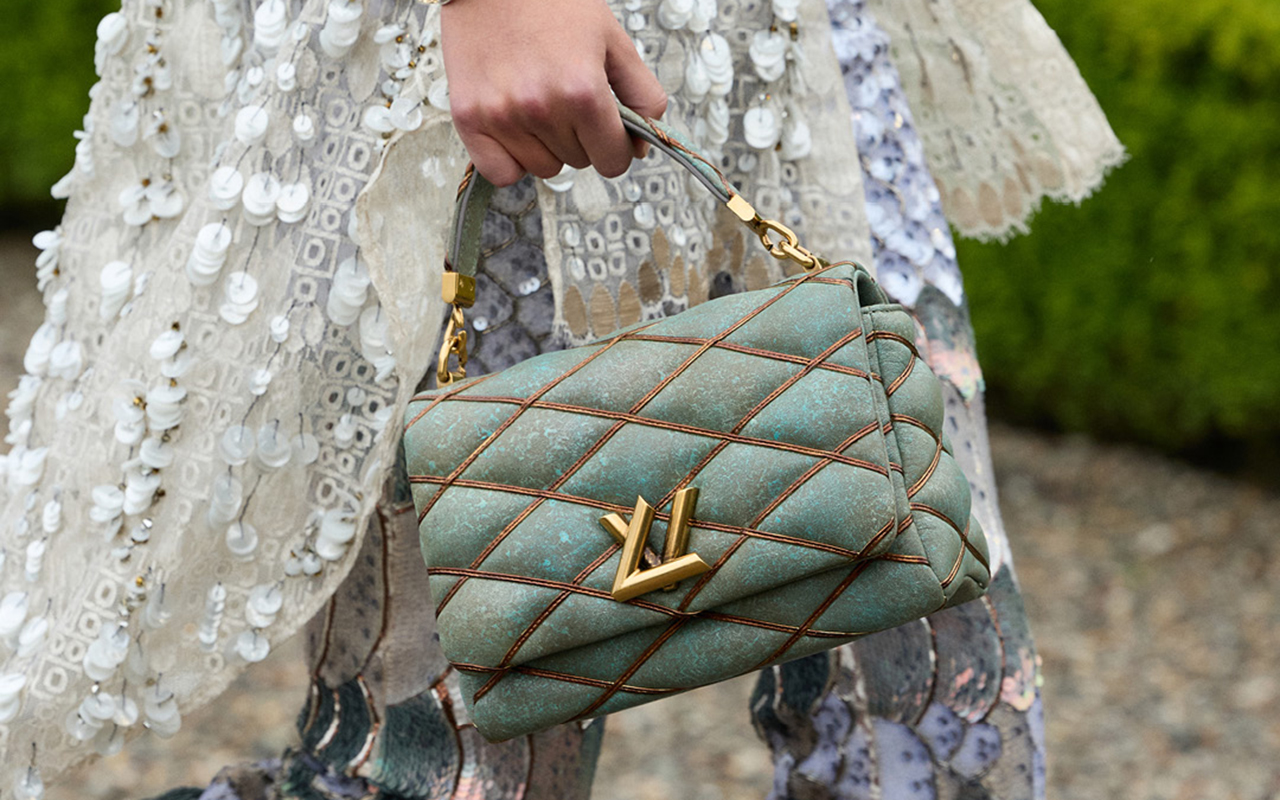
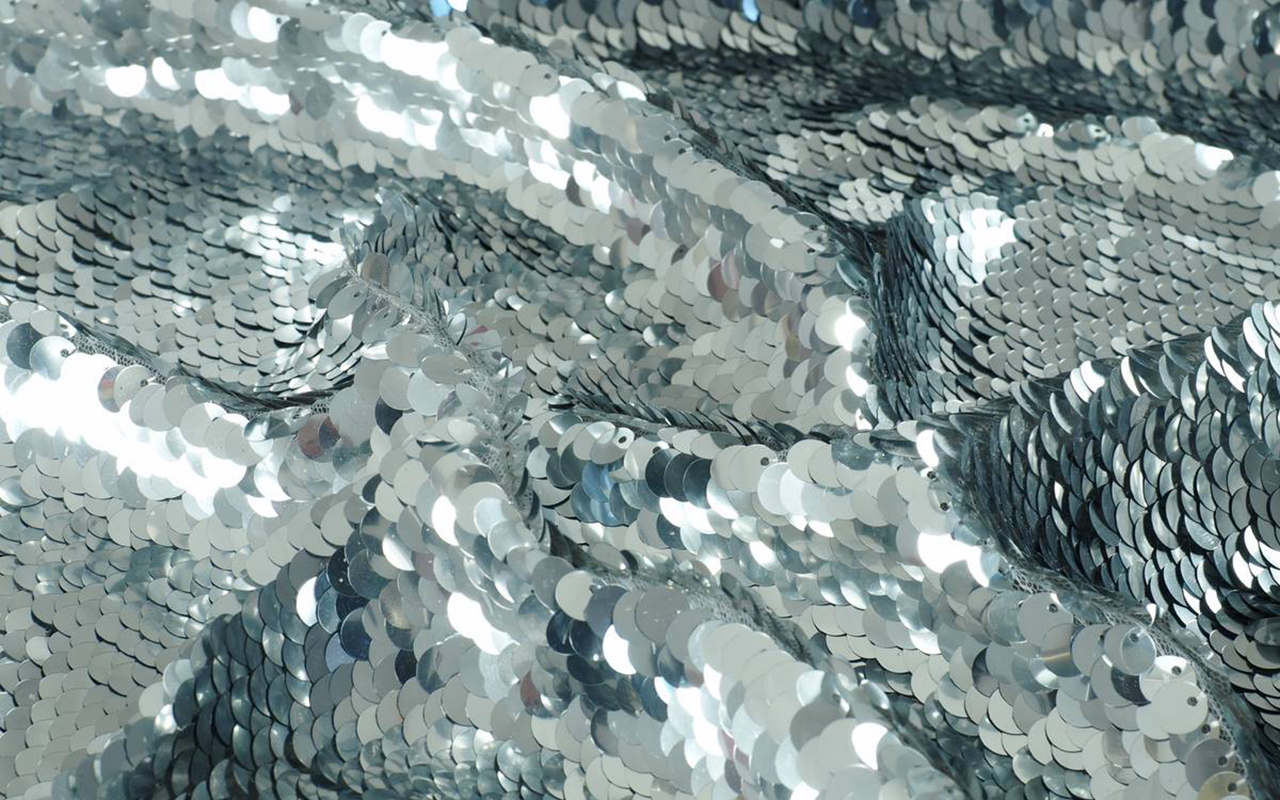
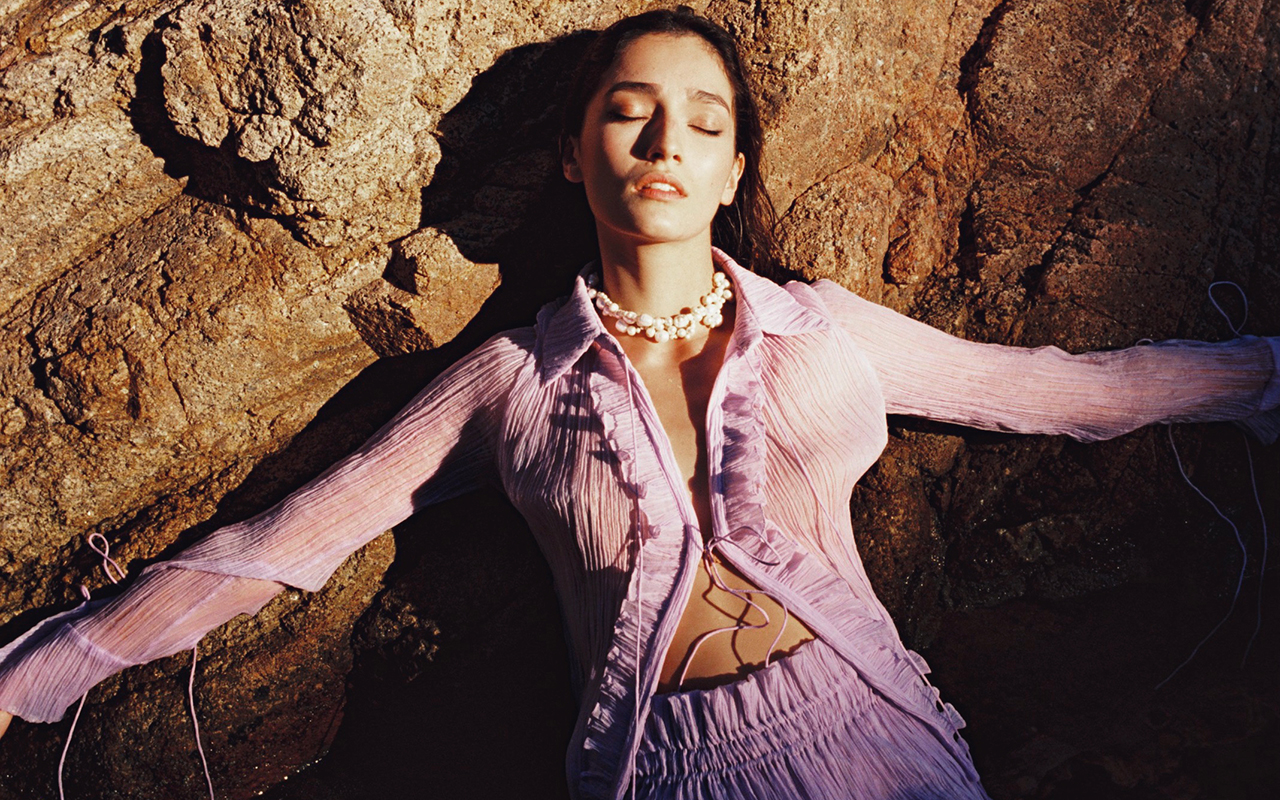
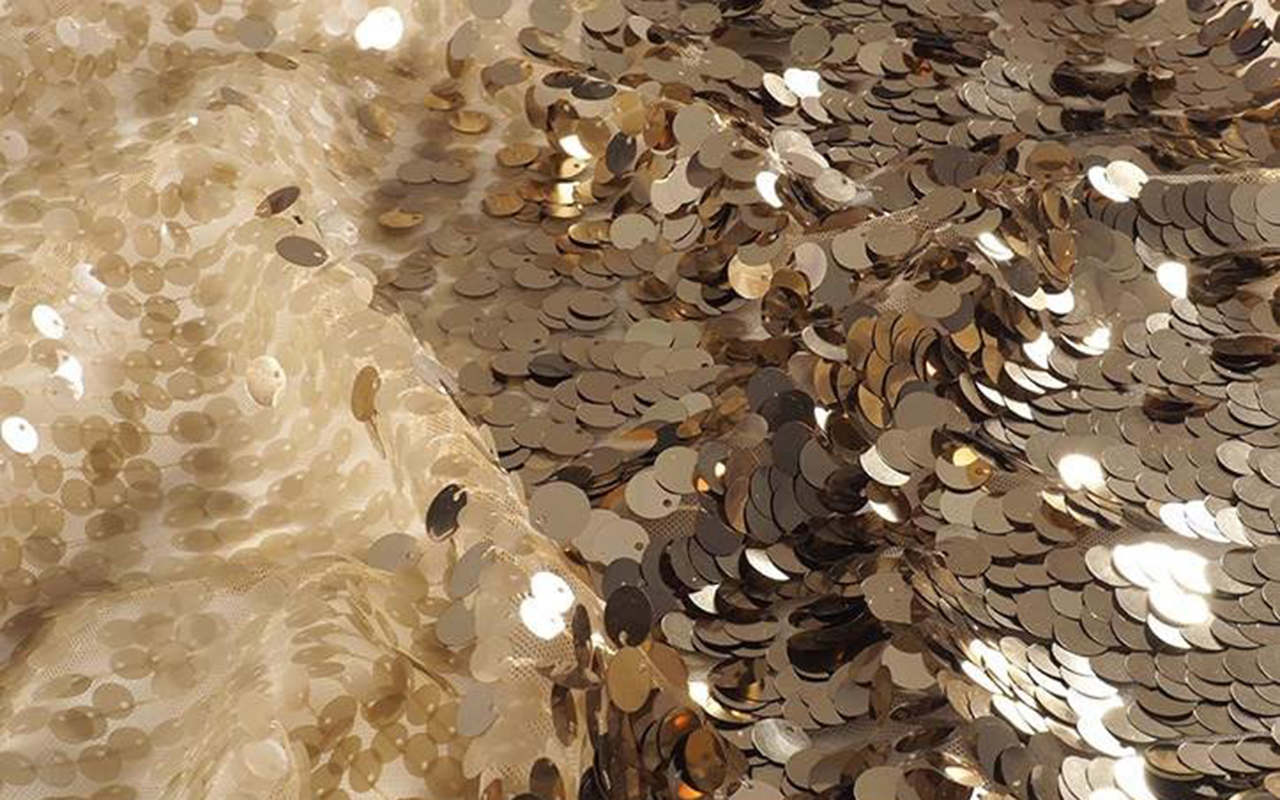
 Aya Jones by Txema Yeste for Harper’s Bazaar US. September 2019
Aya Jones by Txema Yeste for Harper’s Bazaar US. September 2019











 Pantone has established a tradition that colour enthusiasts eagerly await as a prelude to the Christmas holidays. It is about the choice of the shade that will set the direction of trends in 2024 and that will influence art, design, fashion, decoration or advertising, among other creative disciplines directed by professionals who draw on the latest developments on the market, also chromatic.
Pantone has established a tradition that colour enthusiasts eagerly await as a prelude to the Christmas holidays. It is about the choice of the shade that will set the direction of trends in 2024 and that will influence art, design, fashion, decoration or advertising, among other creative disciplines directed by professionals who draw on the latest developments on the market, also chromatic.













































